- 12 Reasons Why You Need...

12 Reasons Why You Need to Visit Kyoto at Least Once in Your Lifetime

There are many cities in Japan in which you could steep in the country’s vibrant culture, but no place offers a greater concentration of history and tradition than the ancient capital city of Kyoto . It’s absolutely worth a visit — even if you only have 48 hours to spare — and frequently tops the list of must-visit destinations for travelers around the world. Here are 12 reasons why Kyoto is the destination of a lifetime.
1. the unesco world heritage sites.
Kyoto is home to 17 UNESCO World Heritage Sites , including three located in the nearby cities of Uji and Otsu, known as the Historic Monuments of Ancient Kyoto.

2. The cherry blossoms
If you can go only one place in Japan to see the cherry blossoms , make it Kyoto, the city that inspired the term hanami , or flower viewing party.

3. Centuries-old festivals
Kyoto is home to three major festivals that number among the oldest in the world. The Aoi Matsuri, which takes place every May, is a procession between two important Shinto shrines. The Gion Matsuri is a month-long summer festival that takes place in July and features massive parade floats. The newest of the three festivals is the century-old Jidai Matsuri (“Festival of the Ages”), which takes place in October and focuses on historical reenactment.

4. Trying a kimono experience
Nothing could make you feel more like you stepped out of a traditional ukiyo-e print than donning a kimono and strolling the streets of Kyoto. You might even be mistaken for a geiko, one of Kyoto’s local geisha.

5. Staying at a traditional ryokan inn
Experience the world-famous Japanese hospitality known as omotenashi at some of the best ryokan in all of Japan, which range from the budget to the very high-end.

6. The 10,000 gates of Fushimi Inari
Kyoto offers plenty of stunning landmarks, but the sight of the 10,000 orange torii gates of the Fushimi Inari Shrine is one for a lifetime. If you have time, you can hike all the way to the summit of Mt. Inari.

Become a Culture Tripper!
Sign up to our newsletter to save up to $1,656 on our unique trips..
See privacy policy .

7. Amazing vegan eats
Japan is not a particularly vegan or vegetarian-friendly country, but non-meat eaters rejoice — there are plenty of fantastic options in Kyoto , from dishes like yuba, silken tofu skin, to shojin ryori, the traditional Buddhist temple meal.

8. Geisha encounters
If you’ve always wanted to see a real, live geisha — or geiko, as Kyoto geisha are known — and their maiko apprentices, then the streets around the Gion district of Kyoto is just the place for it. While the geiko and maiko are usually too busy to stop for a photo, if you visit in April during the Miyako Odori festival, you can enjoy a public performance.

9. The autumn foliage
Second only, perhaps, to the falling cherry blossom petals in the springtime is the vision of Kyoto’s golden autumn foliage in all of its glory.

10. World-class Michelin star dining
After Tokyo, Kyoto has the second-most Michelin stars of any city in the world. This includes not only Japan’s traditional haute cuisine , known as kaiseki ryori, but an impressive number of restaurants focused on modern and international cuisines.

11. Swaying bamboo forests
Find inner peace strolling between tall bamboo stalks as they move gently in the breeze at one of Kyoto’s tranquil bamboo groves.

12. Japanese sweets
Kyoto is famous for its parfaits made with Uji matcha, a premium brand of matcha green tea, along with green-tea flavored wagashi ( traditional Japanese sweets ). Even those without a major sweet tooth are sure to enjoy the mild sweetness of wagashi, which contrasts wonderfully with the slightly bitter matcha.

Find places to stay with our partner, Hotels.com
Culture Trips launched in 2011 with a simple yet passionate mission: to inspire people to go beyond their boundaries and experience what makes a place, its people and its culture special and meaningful. We are proud that, for more than a decade, millions like you have trusted our award-winning recommendations by people who deeply understand what makes places and communities so special.
Our immersive trips , led by Local Insiders, are once-in-a-lifetime experiences and an invitation to travel the world with like-minded explorers. Our Travel Experts are on hand to help you make perfect memories. All our Trips are suitable for both solo travelers, couples and friends who want to explore the world together.
All our travel guides are curated by the Culture Trip team working in tandem with local experts. From unique experiences to essential tips on how to make the most of your future travels, we’ve got you covered.

See & Do
The best places to visit with culture trip this autumn.

Guides & Tips
The best rail trips to book this year.

Tomamu: a secret skiing spot in the heart of Hokkaido

Film & TV
The best japanese movies to watch on the bullet train.

Rediscover Japan with its Borders Fully Open

How modern art revitalised the city of Towada, Japan

The Best Solo Trips to Take in Your 30s

How Much Does a Trip to Japan Cost?

The Ultimate Guide to Getting around Japan

Introducing Culture Trip's Rail Trips

Top Tips for Travelling in Japan

How to Experience Off-the-Beaten-Track Japan by Bullet Train
Culture trip spring sale, save up to $1,656 on our unique small-group trips limited spots..

- Post ID: 1416510
- Sponsored? No
- View Payload

The Top 5 Reasons Why You Should Visit Kyoto
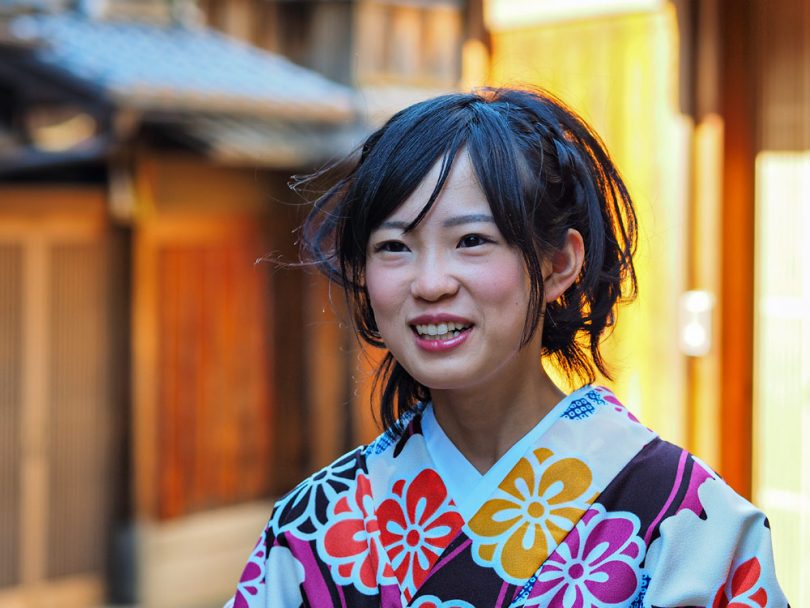
If you visit Japan for the first time it’s quite possible that Kyoto is on your bucket list. Well, I will not talk you out of it because there are several good reasons why Kyoto should be one of the places you wanna see on your trip and that will make you want to come back (like I want to do for sure).

I will share my personal top 5 reasons why you should visit Kyoto as well.
1. Temples and Architecture
Let’s start with the obvious: The first thing that comes to your mind when you think of Kyoto is probably “temples” – lots of temples actually. With about 1600 Buddhist temples and 400 Shinto shrines there is a good chance that this might be enough for your whole vacation. So if you visit Japan to see temples you have come to the right place. In the temples it’s often possible to attend a tea ceremony so don’t miss this opportunity if you like green tea.
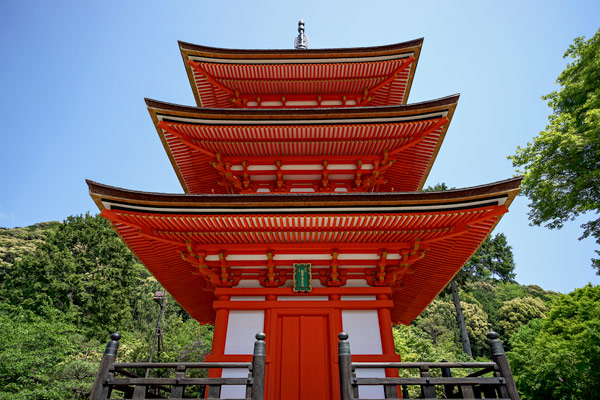
The most impressive (but also most crowded) temples are in the Higashiyama district . If you don’t mind all the other people this will be a good place to find the best temples in Kyoto .

The sign says: “No parking!”

Kinkakuji – The Golden Pavilion
2. Landscape
The landscape in places like the Higashiyama district is so spectacular that it’s almost unreal. I was lucky enough to visit this area on a perfect, sunny day and it looked like straight from a fairytale.
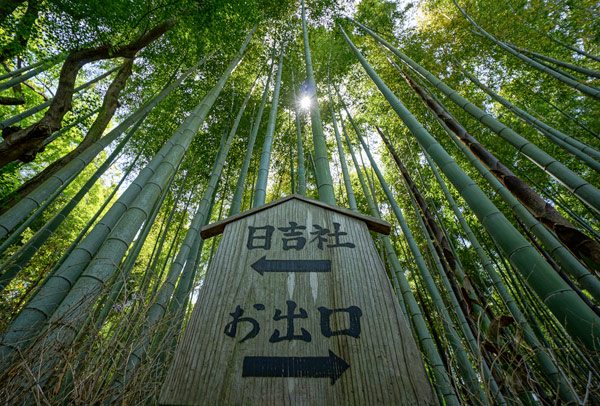
Arashiyama is famous for the bamboo forest and besides Higashiyama this will be a place you don’t want to miss either. The two days I spent in the Higashiyama district were the most memorable ones of my trip to Japan and that says a lot.

Beautiful and calm. Just sit down and relax in Kyoto.

3. Shopping and Downtown
Besides the traditional temples and the beutiful landscape Kyoto offers a nice shopping district where you can find lots of cute things and interesting food. In the main street Kawaramachi there’s nearly nothing you can’t find and if you want proof that Japanese people react a little sensitive to alcohol you can see some of it here later in the evening. ;)
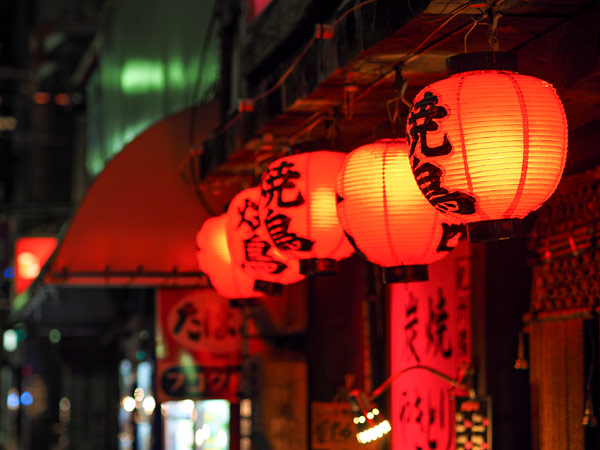
I stayed in a ryokan during my time in Kyoto and they offered sake tasting on one evening. Sake has an interesting history and production process with a great variety of taste, so if you have a chance to taste some don’t miss the opportunity.
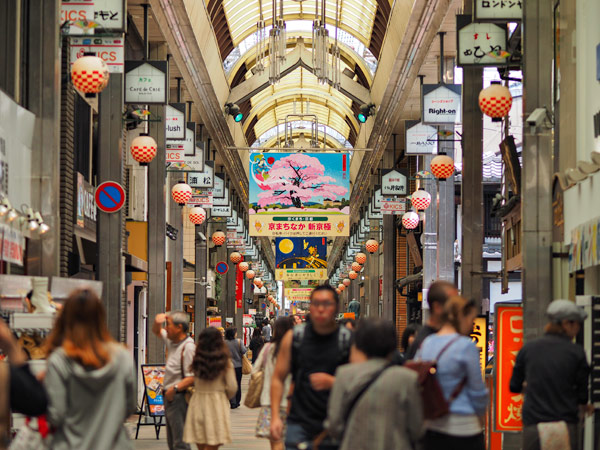
A typical Japanese shotengai (shopping street).
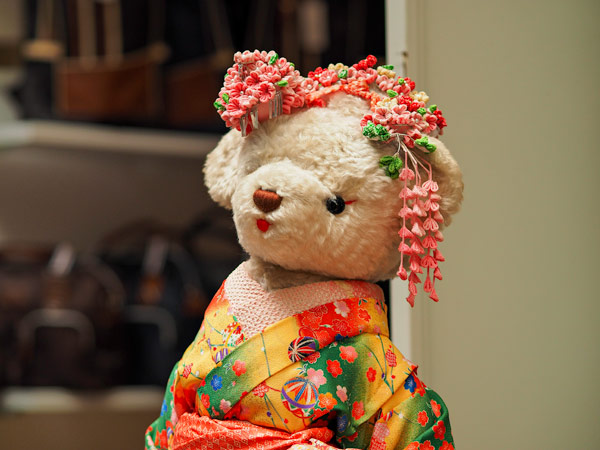
A teddy bear dressed up as a Geisha. How adorable is that?

Cute souvenirs are everywhere in Kyoto.
The people of Kyoto (and Japan in general) were the real highlight of my travel to Japan. They are very friendly and polite and I didn’t have a single negative experience . Japanese also like to take photos so I came to right place.
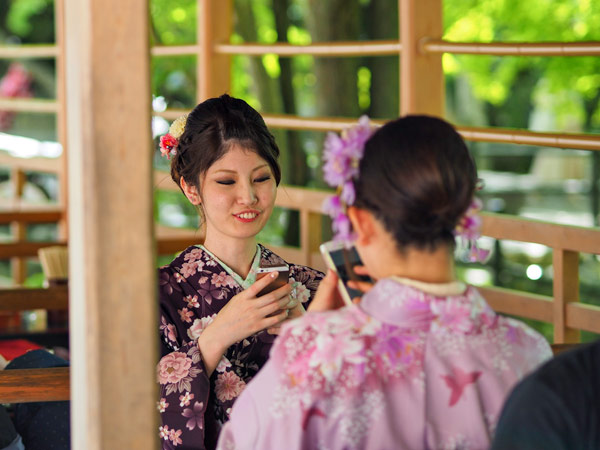
Before visiting Japan I was not into Street Photography that much but that changed on this trip and now I like taking pictures in the street wherever I travel.

In summer you’ll see a lot of ladies wearing a yukata.

Japanese students taking a photo with a Maiko.
5. Visit Kyoto to Hang out With Cats
Let’s face it: Every picture looks better with a cat in it. Yes, Tokyo has more cat cafés (and some of them are great) but chances to see street cats are way bigger in Kyoto and the combination of the beautiful landscape with cats makes the perfect picture to win the Pulitzer Price.
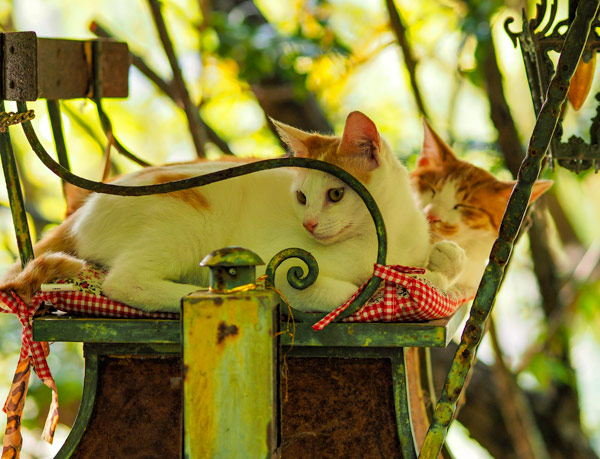
Well, maybe not quite, but still you can take great pictures of cats in Kyoto.

A cat chilling out in Kyoto.

There are several other reasons why you should visit Kyoto like the great food or culture , but I wanted this to be a top 5 list.
One last recommendation: Visit a Geisha Dance if you have the chance and if you are lucky you’ll be able to catch one (or two) of the gifts the Geisha / Maiko throw into the crowd. Even if you don’t understand a word this will be quite an experience.

You may also like

Visiting Japanese Filming Locations of Dramas and...
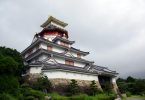
Travel Back in Time with Azuchi Momoyama Bunkamura in...

Fushimi Inari Shrine in Kyoto

Why the Himeji Yukata Festival is Certainly Worth a...

The Kumano Kodo Pilgrimage Trails

Kumano Hongu Taisha (Kumano Sanzan)
16 comments.
Those pictures are stunning! Really gets you in the mood for Kyoto :)
Yes, absolutely. I loved them as well (needless to say, especially the cat ones :D).
Great pictures! I don’t like the hype around Kyoto that much, but it is indeed a beautiful city.
I agree. I guess once you’ve been to a lot of places in Japan, you just realize that there’s greater stuff out there. Kyoto is lovely and I’ve been there a million of times, but I like exploring places that are less popular. ^___^
Thanks for posting the article, Jasmine! I’m glad that you guys like the pictures. You can see many more from Kyoto and other parts of Japan on my homepage :).
Thanks for providing the article and photos, Pierre. :D
[…] This article has also been posted on http://www.zoomingjapan.com […]
Kyoto is a wonderfull place, it’s already 12 years i go to Japan and i can say all time i go to kyoto becouse is a wonderfull place and you can still fell the ancient soul.
Glad to hear you really like(d) Kyoto! :)
[…] MORE » […]
Exactly one month to go for Japan! Which city I wanna see the most? Kyoto of course! Can’t wait…
P.S.: Great pics!
Enjoy your trip to the fullest! :D
A bit surprised by the paragraph about the people. I find the people in Kyoto a bit snobbish. Sure, they’re still Westerners (Japan westerners), which always will be better than those aloof drones that live in Kanto, but compared to nearby Osaka or Nara, not even mentioning Shikoku and Chugoku regions, they’re not exactly the nicest people in the area.
Actually, I agree. But our experience is different from the one of a first-time visitor, don’t forget that. ;) I can’t remember well, but I think my impression of people in Kyoto was similar to his when I first visited Kansai a loo~ng time ago.
Yes, I guess if your only experience of Japanese people is the Kantoans (Kantoese? OK, Tokyoites and around)), the people of Kyoto appear super nice. :-)
Haha, maybe. ;)
Leave a Comment X
Notify me when new comments are added.
I agree to the storage and handling of my data requested in this form. Read the privacy policy for more information. *
This site uses Akismet to reduce spam. Learn how your comment data is processed .
Privacy Overview
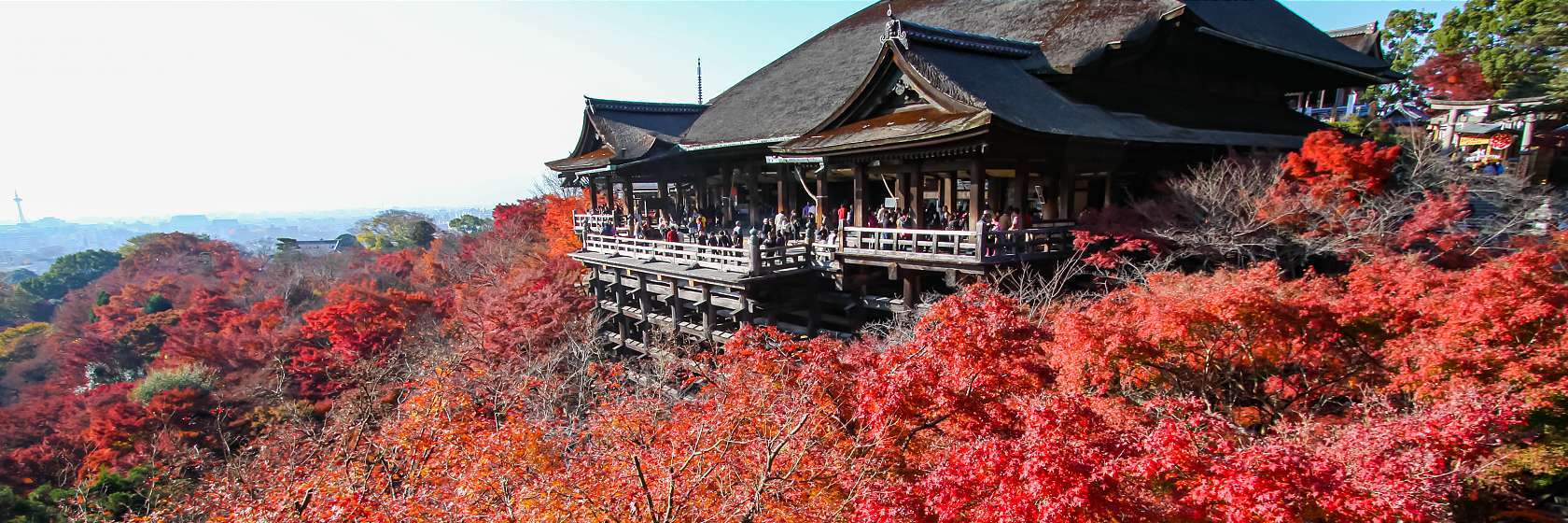
Kyoto (���s, Kyōto) served as Japan's capital and the emperor 's residence from 794 until 1868 . It is one of the country's ten largest cities with 1.5 million inhabitants and a modern face.
Over the centuries, Kyoto was destroyed by many wars and fires, but due to its exceptional historic value, the city was dropped from the list of target cities for the atomic bomb and escaped destruction during World War II . Countless temples , shrines and other historically priceless structures survive in the city today.
Top attractions in Kyoto
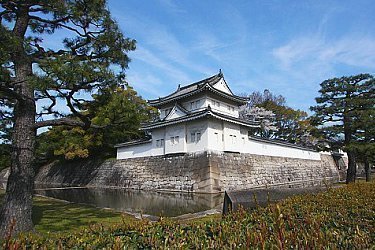
Kyoto by interest

Getting there and around
Itinerary ideas.
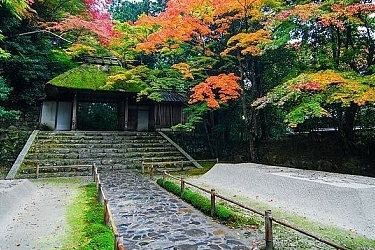
- Walk the Philosopher's Path
- Beautiful temples and shrines
- Attractive Higashiyama streets
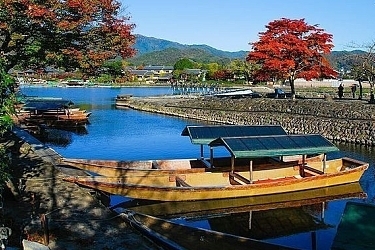
- See the bamboo groves
- Visit the monkey park
- Serene temples and gardens
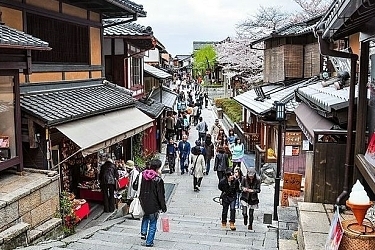
- Visit beautiful temples
- Explore Higashiyama and Gion
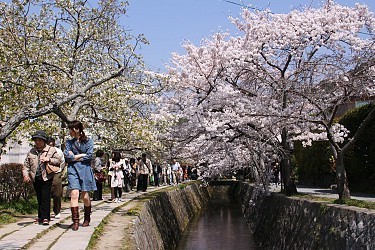
- Visit beautiful temples and shrines
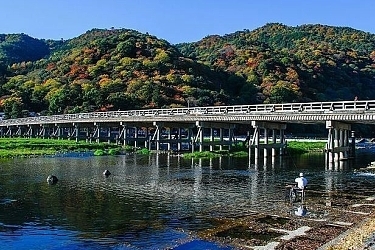
- Explore attractive Arashiyama
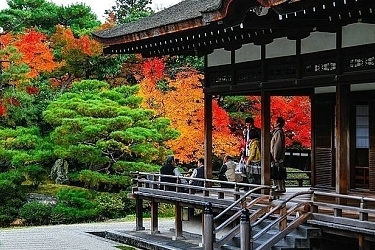
- Explore Kyoto's northern side
- Visit Kinkakuji , Ryoanji and Ninnaji temples
Questions? Ask in our forum .
Links and Resources
Kyoto official travel guide, cycle kyoto, hotels around kyoto, kyoto hotel guide.
How to choose the best places to stay in Kyoto
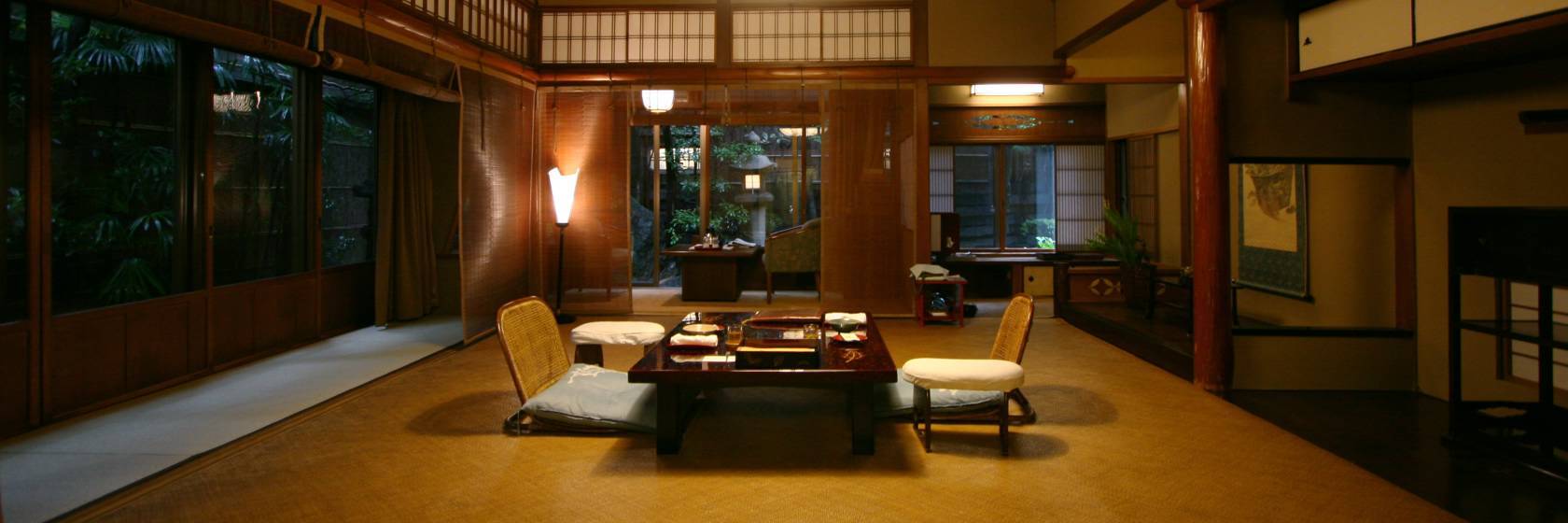
Experiences around Kyoto
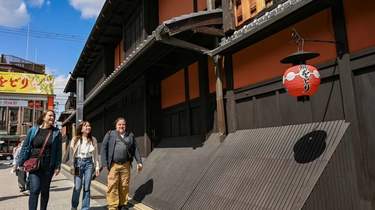
14 things to know before visiting Kyoto

Dec 11, 2023 • 6 min read
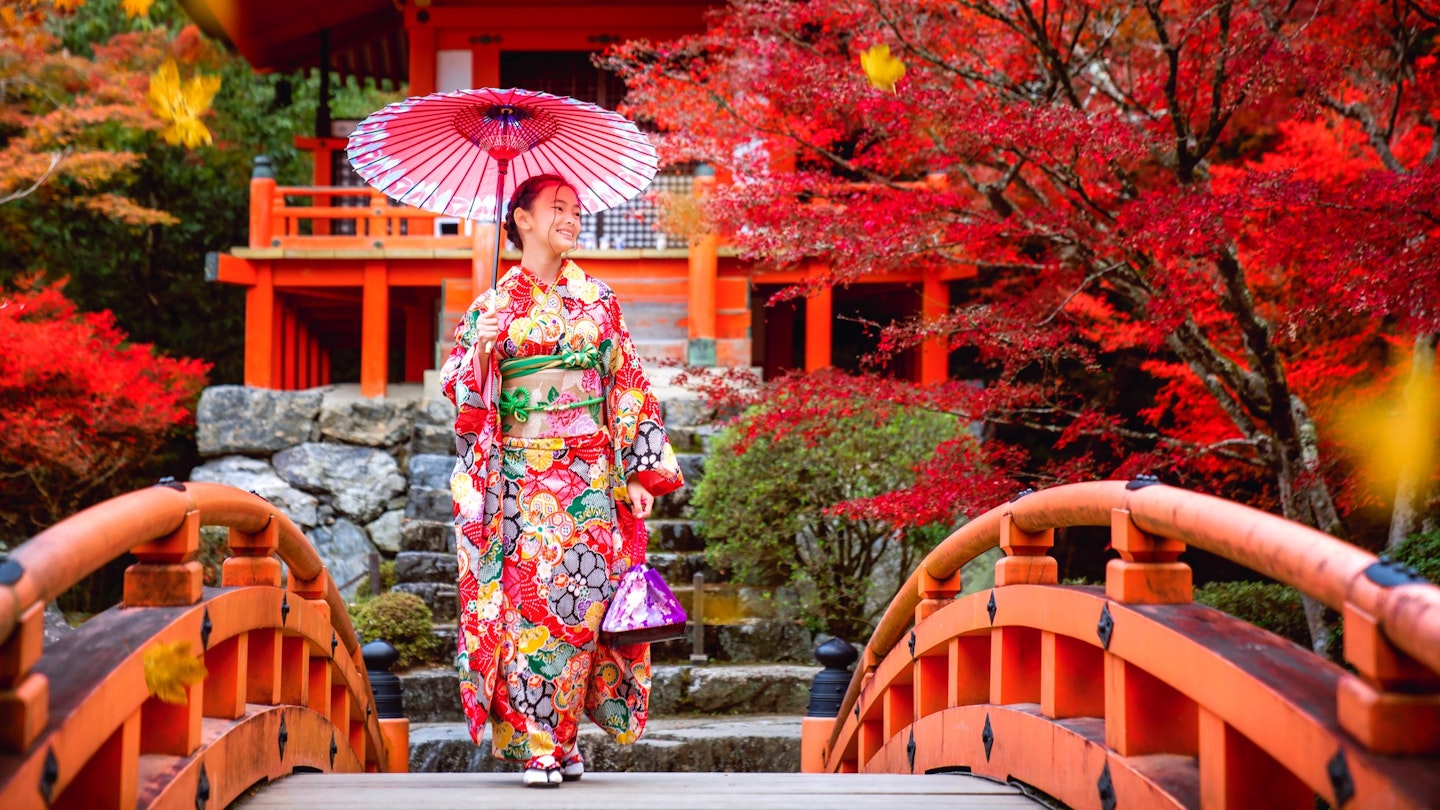
Plan your trip to Kyoto with these tips on packing, where to stay and etiquette © anek.soowannaphoom / Shutterstock
Kyoto is the embodiment of traditional Japanese culture.
It's a place where authentic crafts are kept alive and historic temples and teahouses line the narrow streets. So perhaps unsurprisingly, it’s also a destination where etiquette can have a big part to play.
Be ready for your visit with this rundown of some key things to know before going to Kyoto .
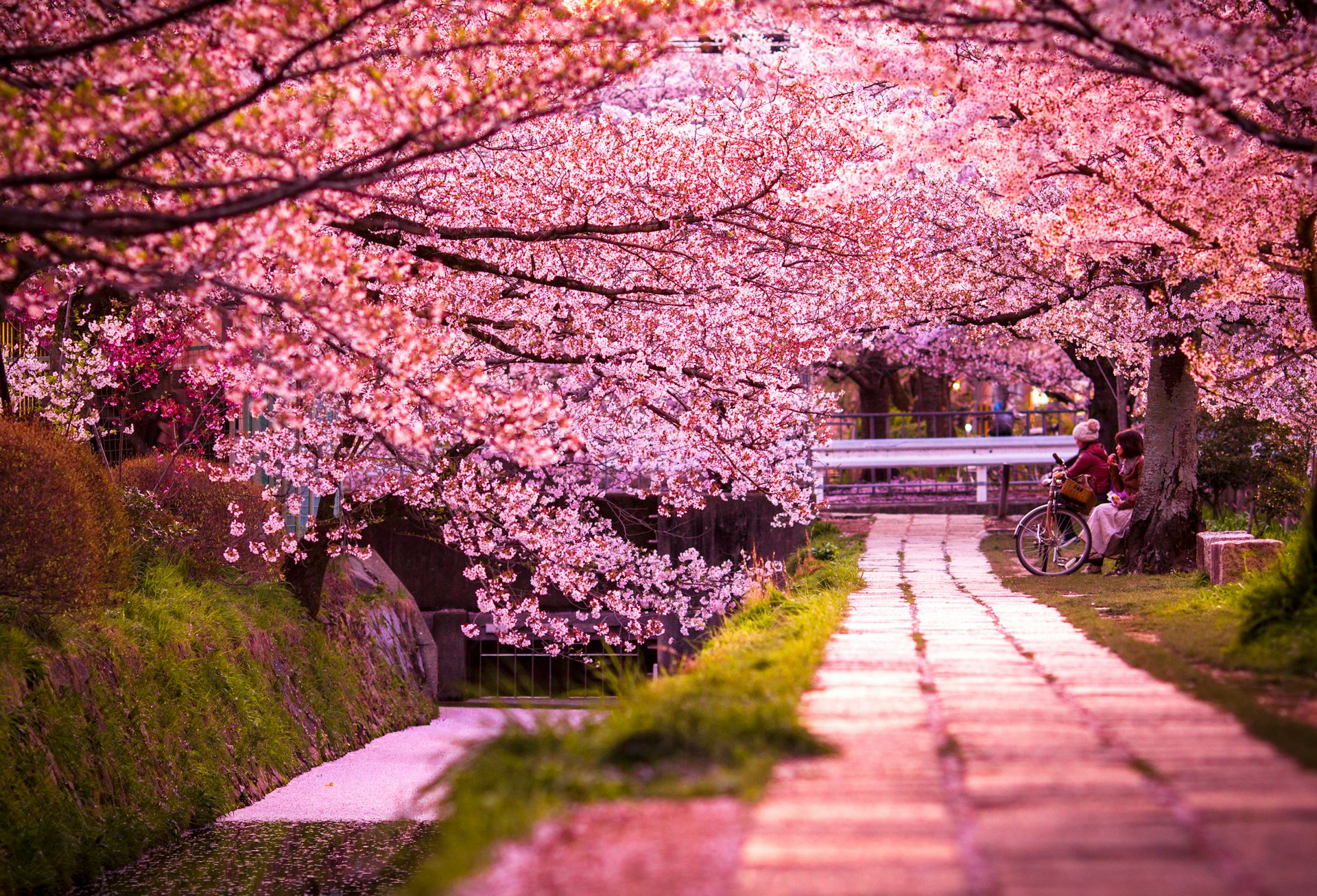
1. Tune in to the seasons
Kyoto is a very seasonal destination , so plan your trip accordingly. The spring cherry blossom season is when the city is at its most photogenic but also its busiest. If you want to visit during this time, you’ll need to book accommodations a year or more in advance – expect to pay premium prices. The same is true of the fall foliage season, although not to quite the same degree. Summer sees the streets come to life with festivals, while winter is the quietest time in Kyoto. New Year is a big holiday in Japan, with many shops, restaurants, museums and other businesses closing between December 29 and January 3.
2. Think carefully about where you want to stay
Kyoto has plenty of great neighborhoods to choose from, but southern Higashiyama and downtown Kyoto are among the most convenient for sightseeing. In terms of accommodations, you can find everything from budget guesthouses to high-end international hotels. For a more authentic Japanese experience, consider spending a night in a ryokan inn, where you’ll sleep on futons on tatami mat floors with traditional meals served in your room.
3. Pack shoes you can slip on and off
When traveling in Kyoto, you’ll find yourself having to take your shoes on and off frequently, so choose your pairs wisely, and wear nice socks! Outdoor shoes are generally not worn in tatami mat rooms, people’s homes, or traditional temples, restaurants and ryokan inns. You can normally tell when you’re expected to take your shoes off because there will be a raised step where the flooring changes. You’ll see other people’s shoes lined up, and slippers may be set out for you to wear inside. Be aware that there’s usually a separate pair of slippers to wear in the bathroom – don’t forget to swap them back afterward!
4. Explore on foot
Not only is Kyoto a very walkable city, but navigating its streets on foot also enables you to discover lots of lesser-known but no less impressive spots. From tiny restaurants and bars with counter seats only to ancient shops specializing in wagashi sweets, tofu or local crafts, many of Kyoto’s most interesting locations aren’t in obvious places. You might come across picturesque shrines down tiny alleyways, find street stalls serving freshly baked mochi rice cakes or spot a kimono-clad maiko (apprentice geisha).

5. The city will probably be crowded
Kyoto is home to some of the most famous and beautiful sightseeing spots in Japan , and they attract large numbers of domestic and international tourists. Big-name attractions such as Kinkaku-ji temple, the Arashiyama Bamboo Grove and Kiyomizu-dera temple are definitely worth visiting, but time your trip for the early morning or toward the end of the day to avoid the crowds. Similarly, when visiting the endless red torii gates of Fushimi Inari-Taisha shrine, head farther up the mountain to find room to breathe.
6. Kyoto isn’t all temples and shrines
Kyoto is the spiritual heart of Japan, and with some 2000 temples and shrines to explore, you’d be forgiven for thinking that’s all the city has to offer. But there’s so much more to discover. Head to Nishiki Market to sample top local cuisine, take an evening stroll around the atmospheric streets of Gion and admire the mighty Nijō-jō castle. Kyoto also has a wealth of prestigious museums to discover, plus pleasant parks and serene walking paths .
7. Allow time to explore the wider region beyond
You could easily spend your entire trip in Kyoto city, but if you have time, broaden your itinerary to include day trips to other parts of the region. The surrounding prefecture has fantastic hiking routes within easy reach that let you experience the area’s stunning natural scenery, as well as quieter temples such as Kurama-dera and Enryaku-ji . Smaller towns, such as coastal Kinosaki Onsen and green tea-loving Uji, are also great for a day out.
8. Mind your manners
Politeness is hugely important in Japanese society. Although tourists will be forgiven the occasional etiquette breach, it’s always best to be courteous. That means not talking too loudly on public transport, avoiding eating on the sidewalk and allowing room for others to pass on the narrow streets. Littering and cutting in line are seen as particularly rude. Smokers should take care to use the designated smoking areas, and many parts of the city are now no-smoking zones.
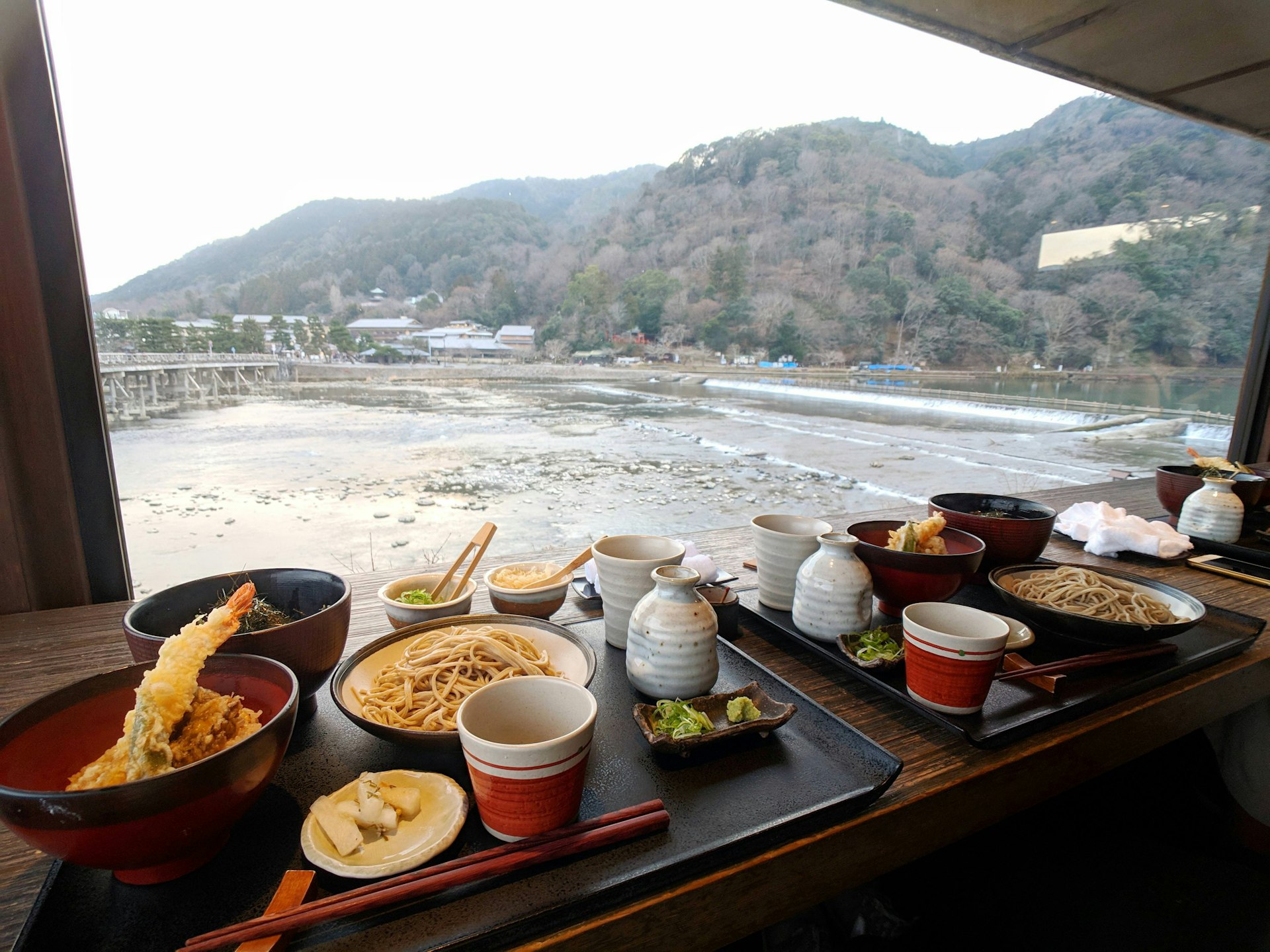
9. Pay in cash, but don't leave a tip
Tipping isn’t customary in Japan, and in fact, it can be seen as insulting. If you attempt to leave a tip, it will almost definitely be declined. As a side note, in most restaurants, you pay up at the front counter rather than at your table. Cash is far more commonly used than card payment, and you should place your money in the small tray provided rather than hand it directly to the cashier (this goes for shops, hotels and other locations, too). They will place your change in the same tray for you to pick up once the transaction is complete.
10. Geisha are not a tourist attraction
Lots of people hope to spot geisha – or geiko as they’re known in Kyoto – when visiting the historic Gion district. However, it’s important to be respectful when doing so. Any geiko you see will probably be on their way to an appointment and won’t appreciate being swarmed by strangers! Ask politely if it’s okay to take a photograph, rather than behaving like paparazzi.
11. Kyoto is an extremely safe city
Crime rates in Kyoto are low, the tap water is clean, and if you lose something, it will almost certainly be returned to you. It’s safe to walk the streets at night, even as a solo traveler, and the city is welcoming to LGBTIQ+ visitors. Of course, you should still exercise common sense during your stay and take the normal precautions that you would at home. If you need help, you’ll find police boxes (known as kōban ) on most intersections, although the police inside might not speak much English.
12. Watch out for bikes
Cycling is common in Kyoto, and it’s a convenient way to get around the city. Many people ride on the sidewalk, so keep an eye out when you’re walking or leaving shops and restaurants. If you hear a bell, someone behind you is probably trying to get past.
13. In an emergency, dial 119
In a medical emergency, dial 119 for the ambulance service (this is also the number for the fire department). Medical care in Kyoto is reasonably priced and of a high standard, although it is always advisable to take out travel insurance before your trip to ensure that you can receive treatment at a hospital or clinic should you need it. Police can be reached by dialing 110.
14. Earthquakes are common; serious earthquakes are not
Earthquakes are fairly frequent in Japan; however, most are low-intensity and cause little to no damage. You’ll find instructions in your accommodations about what to do in the unlikely event of a serious quake.
This article was first published Dec 16, 2021 and updated Dec 11, 2023.
Explore related stories

Tips & Advice
May 23, 2024 • 12 min read
The stunning beaches of Seychelles are in close reach when you use points and miles. Here's how to get started.

May 3, 2024 • 14 min read

May 1, 2024 • 9 min read

Apr 14, 2024 • 6 min read

Mar 31, 2024 • 7 min read

Mar 28, 2024 • 7 min read

Mar 28, 2024 • 6 min read

Mar 26, 2024 • 8 min read

10 Reasons Why You Should Travel to Kyoto: A Journey into Japan’s Heart
Kyoto, once the imperial capital of Japan for over a millennium, is a city where traditions thrive and history breathes. If you’ve ever wondered why Kyoto deserves a spot on your travel bucket list, here are ten compelling reasons that will stir your wanderlust:
1. A Historical Goldmine

From the majestic Kyoto Imperial Palace to the ancient temples and shrines, every corner of Kyoto speaks volumes about Japan’s rich history. Relive tales of emperors, samurais, and geishas as you tread its historic paths.
2. Spiritual Sojourn
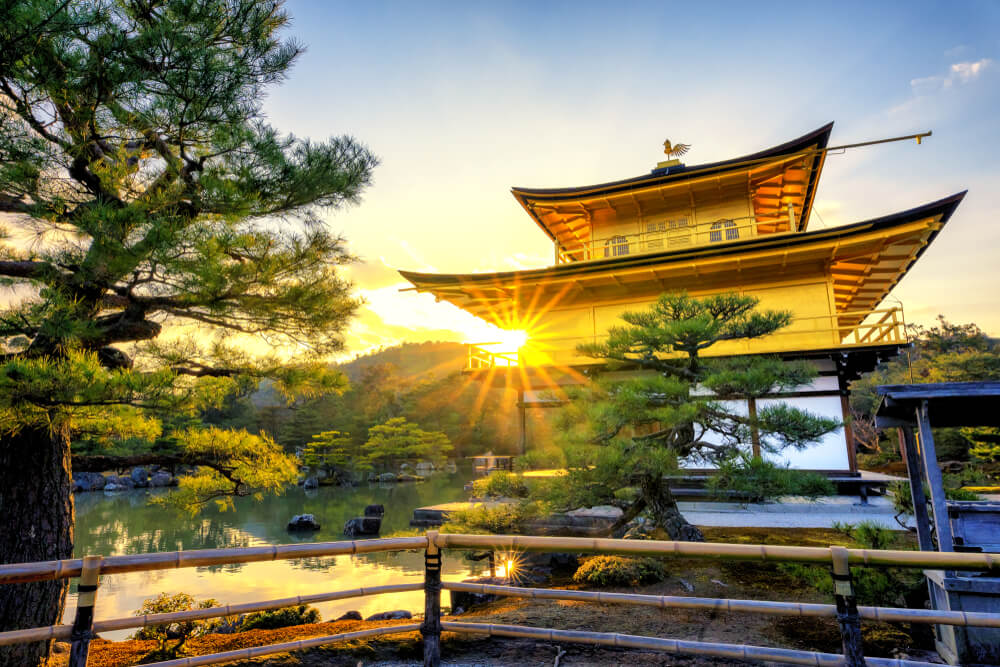
Kyoto is home to over 1,600 Buddhist temples and 400 Shinto shrines. Whether it’s the tranquil Zen gardens of Ryoan-ji or the golden hues of Kinkaku-ji, the city offers a spiritual retreat like no other.
3. Seasons in Full Bloom
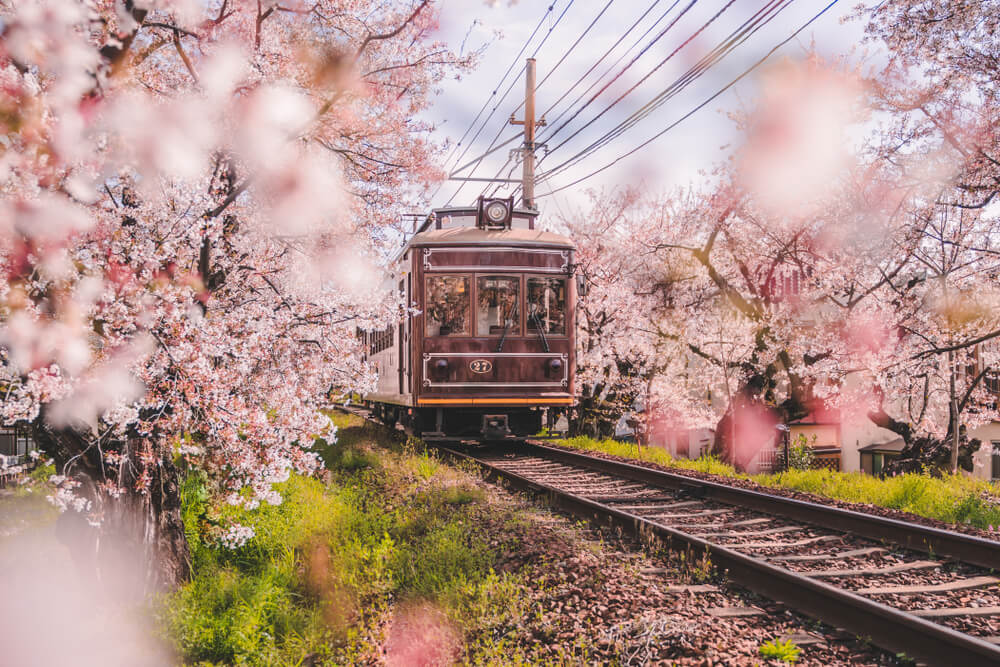
Witness cherry blossoms that paint the town pink in spring, the verdant beauty of summer, a riot of colors in fall, and serene snow-laden landscapes in winter. Kyoto’s seasonal transformations are pure magic!
4. Geisha Culture
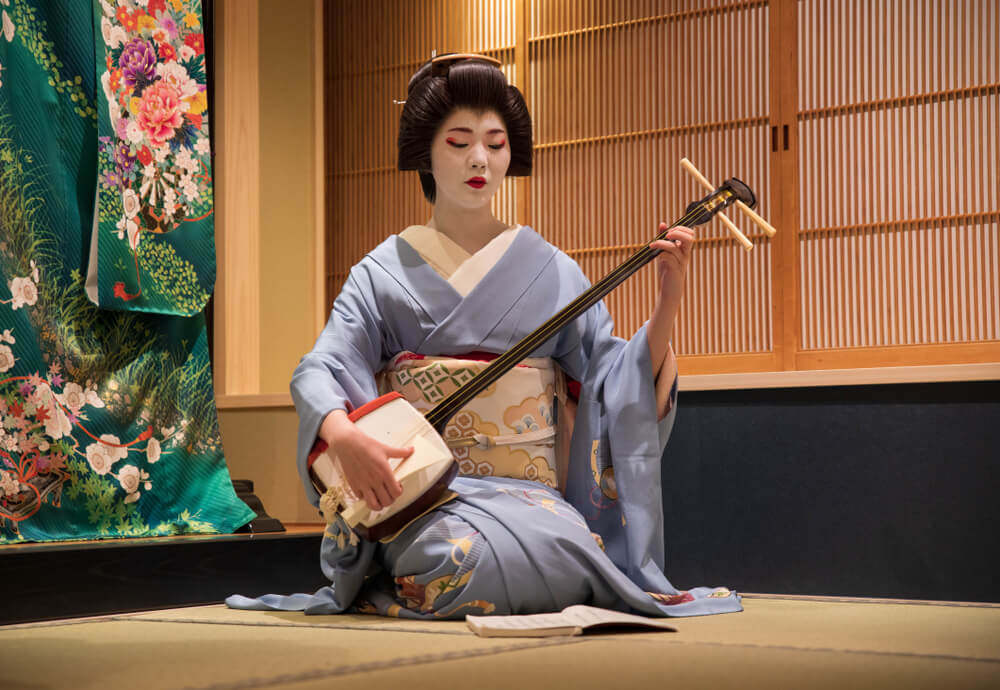
Origins of the Tradition: The culture of geishas in Japan emanated from Kyoto and spread outward. The genesis of Kyoto’s geisha can be traced back to the 17th century, specifically in the Higashiyama area where the Yasaka Shrine is located. Gion, Kyoto’s famous geisha district, is a portal to Japan’s age-old entertainment traditions. With a bit of luck, you might spot a geisha or maiko (apprentice) gracefully making her way through the wooden machiya houses.
5. Culinary Delights
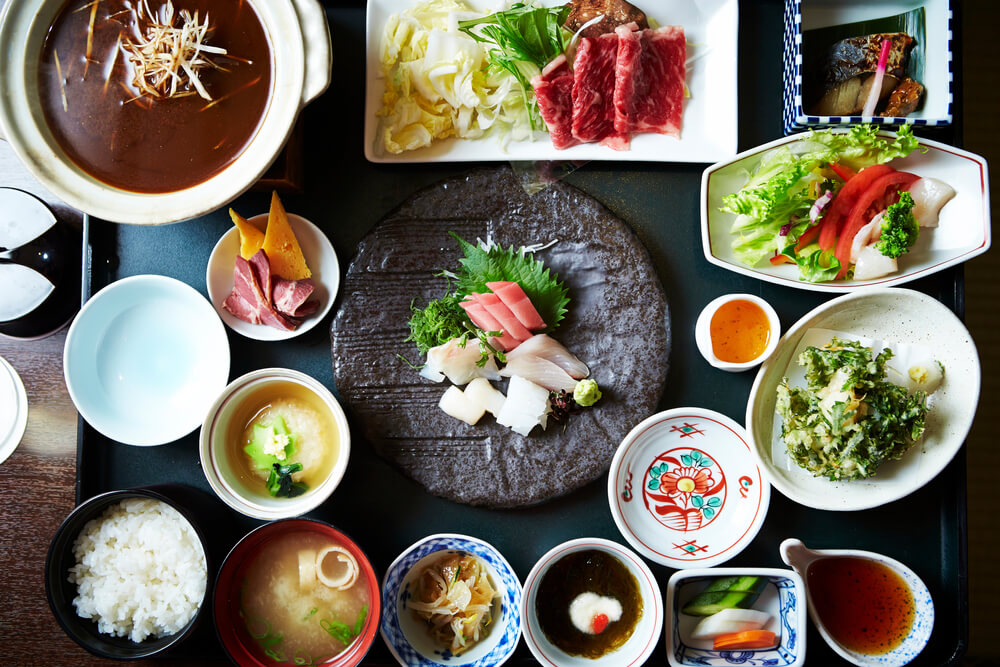
Savor Kyoto’s kaiseki (traditional multi-course meal), matcha-infused sweets, or pickled vegetables. The city’s culinary offerings, rooted in its cultural heritage, are a feast for the senses.
6. Traditional Crafts
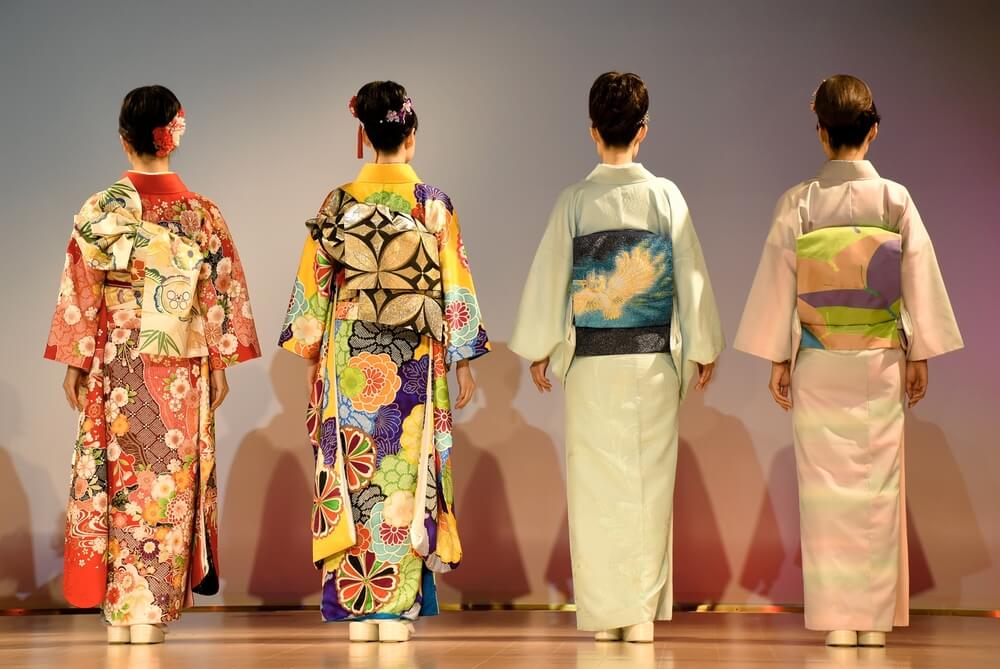
Whether it’s the delicate art of kimono weaving, Kiyomizu pottery, or Yuzen dyeing, Kyoto is a hub for traditional Japanese crafts. Participate in workshops and take home a piece of Kyoto’s artistry.
7. Arashiyama’s Natural Beauty
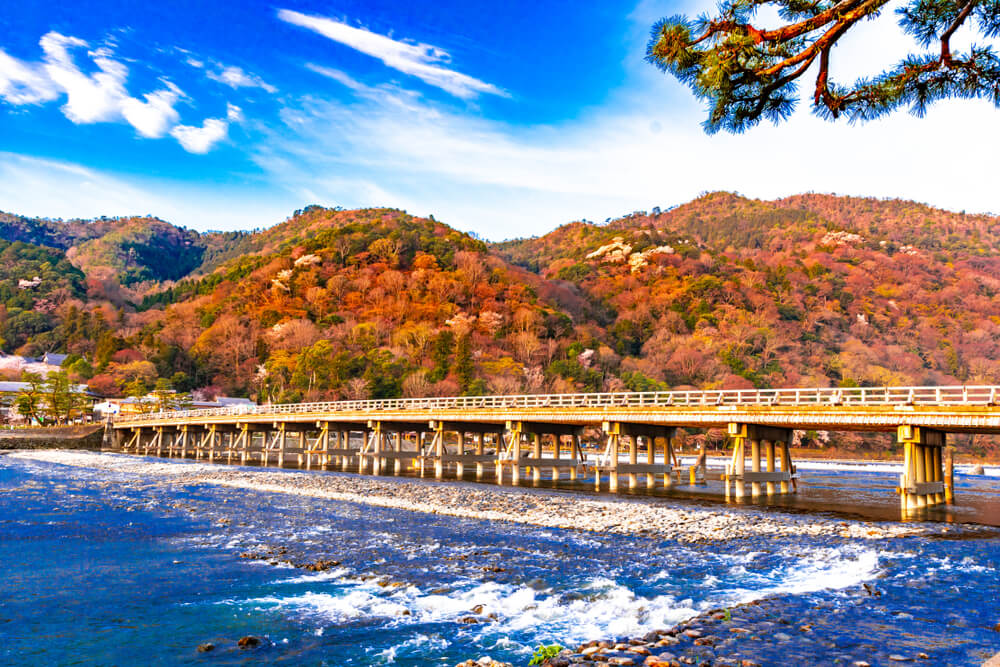
The Arashiyama district, with its famed bamboo grove, the picturesque Togetsukyo Bridge, and serene boat rides along the Hozu River, showcases Kyoto’s harmonious blend of nature and culture.
8. Immaculate Signages
To preserve the image of Kyoto as a historic cultural capital, the city established the ‘Outdoor Advertisement Regulations’ in 2007. Depending on the type of structure—be it an office building, historical landmark, or specific areas—the following restrictions apply
- Flashing neon lights and movable LED lights are prohibited.
- Large advertising billboards on rooftops are not allowed.
- Restrictions are placed on the colors used in lighting.
- Posters cannot use overly vivid or saturated colors.
9. Traditional Tea Ceremonies
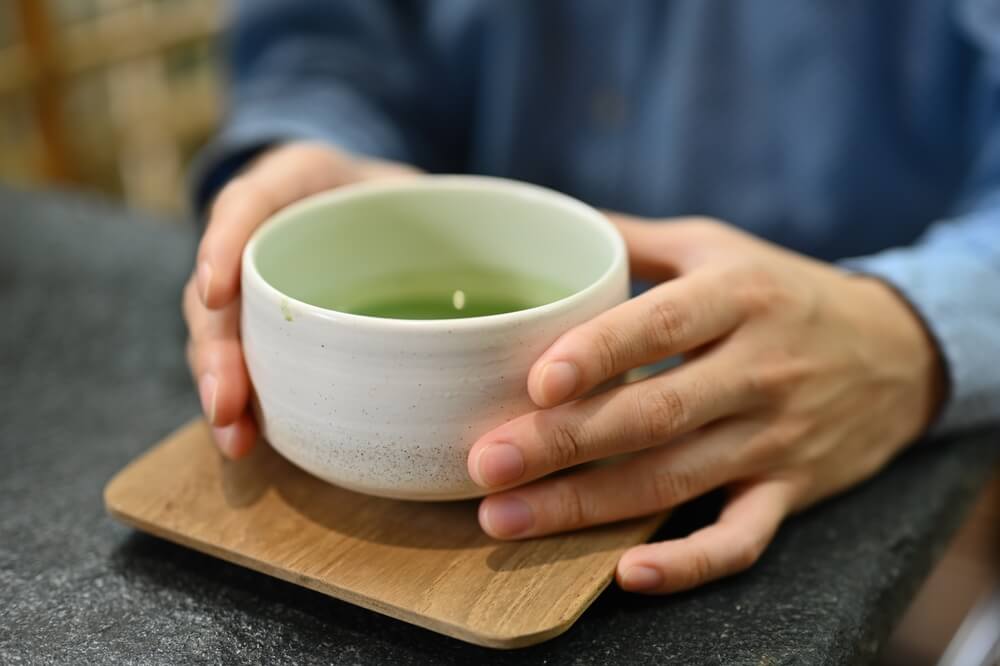
Experience chado or the way of tea, in Kyoto’s traditional teahouses. The intricate ritual of preparing and consuming matcha is a meditative experience, embodying the essence of Japanese aesthetics.
10. Festivals Galore

From the grandeur of Gion Matsuri, Kyoto’s largest festival, to the illuminations of Hanatoro, the city’s festivals provide a deep dive into its cultural and spiritual fabric.
Kyoto isn’t just a city; it’s an experience, a timeless tapestry of culture, history, and natural beauty. Whether you’re a history buff, a spiritual seeker, or someone in search of aesthetic pleasure, Kyoto beckons with open arms, promising memories that will last a lifetime.
kyoto unveiled
Kyoto’s three great festivals: a cultural odyssey, family travels: fun for kids in kyoto, you may also like, discover the splendor of autumn at kyoto’s jidai..., cultural etiquette in kyoto: tips for respectful travel, experiencing kyoto in a kimono: embracing ancient japanese..., kyoto during the edo period: a journey through..., leave a comment cancel reply.
Save my name, email, and website in this browser for the next time I comment.

What Makes Kyoto So Special? A Visitor’s Guide To Kyoto
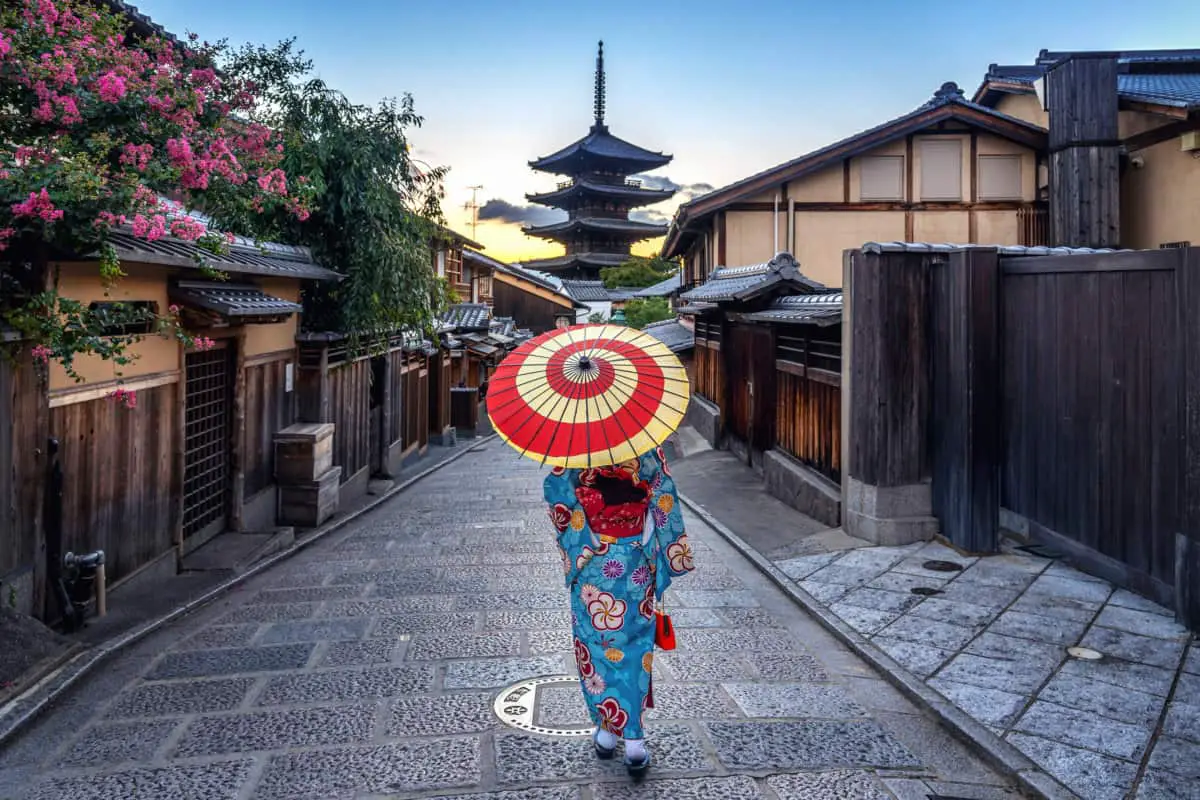
Kyoto, Japan is the last of Japan’s original ancient capitals. It’s a truly historic place with a rich history of appreciation for the arts and the beauty of its natural assets. Although Kyoto has been destroyed several times over the centuries, its historical and architectural value was so renowned that it influenced US decision-makers to remove the city from their list of targets for the atomic bomb during the Second World War.
Today, Kyoto is still an elegant and romantic city with Buddhist temples, traditional culture, museums, theme parks, festivals, and unique shopping opportunities.
This guide will explore what makes Kyoto such a special and unique destination in Japan.
The Spirit of Kyoto
The architectural and cultural heritage of Kyoto illustrates its long history as the capital of Japan’s cultural and political heartland. It escaped destruction during World War II, and today it is busier than ever. The modern city bustles with the energy of tech, modern amenities, and convenience, yet her cultural charms of tranquility and simplicity linger on.
The Best Time to Visit Kyoto
Every season highlights a different side of Kyoto. Fall brings spectacular tawny and reddish hues to the trees. Snowy winters make the ancient buildings look like a fairy tale – a sharp contrast to the fresh clean green of summer. But everyone agrees: the sight of the cherry blossoms in spring from late March to early April is a visual spectacle not to be missed.
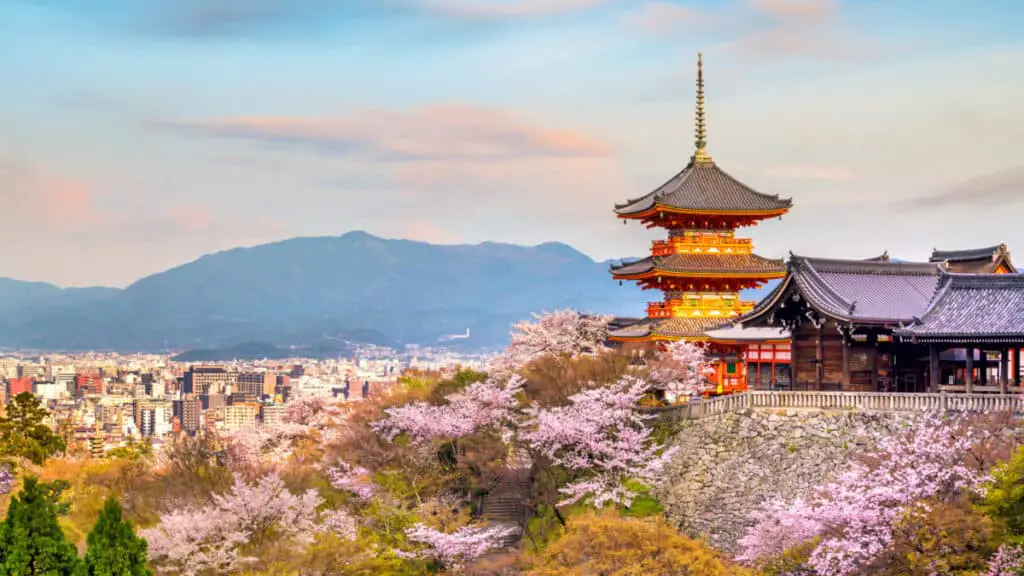
The Best Hotels to Stay in Kyoto
You’ll find more traditionally oriented places to stay in Kyoto than in some of the most modern cities. There’s a range of prices to suit every traveler.
If you budget for around $220-250 per day, you can stay in a range of excellent traditional or modern Japanese accommodations, eat at nice restaurants, have a couple of drinks, and pay for a few guided tours. If you prefer staying in international hotels, you should add around $50-100 a day to your budget.
A good example of a nice 4* hotel in central Kyoto is the Hotel Hanra , its vibe is a good blend between traditional and ultra-modern, much like the city of Kyoto itself.
Budget hotel prices start from about $55 per night for a two-star hotel. Mid-range three-star hotel prices start from around $75 per night. Chains like Hotel MyStays are scattered throughout Japan and of course, have a hotel in central Kyoto and you can usually get a good deal if you shop around!
APA is also a great chain to check out if you want an affordable but surprisingly comfortable hotel to spend the night in Kyoto. There’s even one in the Gion district, check it out here.
But hey, this is Japan! You really should try a capsule hotel, which starts at around $37 for a tiny pod that contains, essentially, just a bed, but is a marvelous testament to modern design in a country that values open space more than most.
There is so much to see that staying in a centrally located hotel is important to maximize your travel experience. Fortunately, many of the main sights are concentrated in one area, so you can spend more time enjoying the culture that makes Kyoto world-famous. The downtown area is conveniently located for walking around or taking short bus- or taxi rides to recommended sights, and there are many hotels, restaurants, shops, convenience stores, and bars in close proximity.
The Best Places to Eat in Kyoto
This is the country of sushi, ramen, and tempura, and Kyoto packs a punch in the culinary department with everything from Michelin-starred restaurants to chic cocktail bars, cool cafés, and sushi spots. Go on a tasting tour to sample fresh produce in food halls and old-school workmen-style noodle joints, and don’t miss out on visiting a few of the shoe-box-sized izakaya (Japanese pub-eateries).
Nishiki Market
Traditional values are important: At the heart of Kyoto’s culinary reputation is Nishiki Market, affectionately known as ‘Kyoto’s kitchen’. This is where Kyoto’s restaurateurs and food fashionistas do their fresh produce and food shopping, although the market is evolving from being strictly a local food market to a tourist attraction. Nowadays, you’ll find Kyoto-style souvenir shops cheek-to-jowl with exotic food stalls. A variety of delicacies like soy milk donuts, egg rolls, hand-baked bean crackers, and takotamago (small stuffed octopus head) are available here. Traders are proud of the quality of their wares, and many allow you to sample their products while you browse.
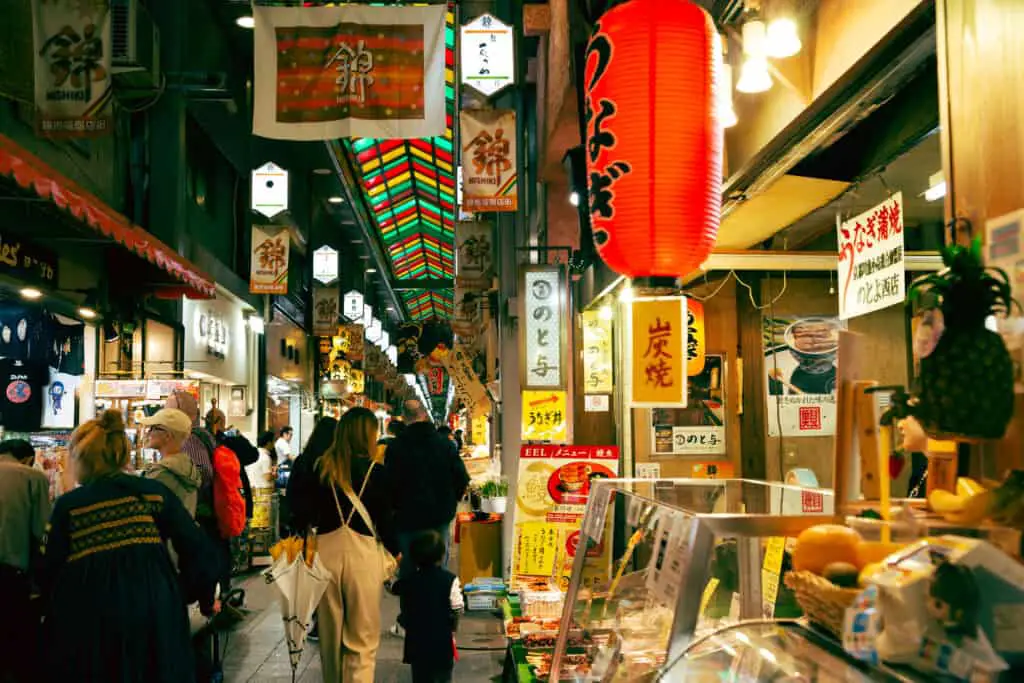
Food and Entertainment in Gion, the City’s Famous Geisha District
Plan to do an evening stroll along the narrow lantern-lit streets with their low wooden houses. Here, you’ll find multitudes of 17th-century traditional restaurants crammed close together, and it’s the premium spot for traditional tea houses – ochayas – where geisha keep traditions alive with ancient ceremonies. Try to attend one of the traditional Kyoto dances of maiko (apprentice geiko or geisha) and other traditional performing arts at Yasaka Hall’s Gion Corner.
Kyoto Beer and Sake
Japan is home to several world-class artisanal craft masters, and Kyoto is quite the hotspot for makers of traditional and craft beers. In fact, Kyoto is the second-biggest sake producer in Japan, and most of the local breweries are located in the Fushimi district.
There’s more than one bar where you can combine sake-hopping with restaurant-hopping, and we recommend a visit to Fushimi Sakagura Kōji. Restaurants in the complex take orders for each other’s food, so you can sit tight and test different food pairings while you work your way through a tasting set of sake from 18 different breweries in Fushimi.
Japan’s tradition of standing bars is comparable to England’s traditional pubs. They are tiny, pleasantly crowded, and buzzing with life. Another big difference is the snacks – fresh sashimi and sushi rather than pork pie!
What Can You Expect From Kyoto Eateries?
Like everywhere else in Japan, in Kyoto’s restaurants, you can expect impeccable service, portions that are somewhat more manageable than the outsized popular meals in the US, and a range of somewhat delicate, simple, fresh traditional food served in stunningly pleasing arrangements.
In many contemporary restaurants, the cashier is stationed by the exit, so you can pay for your meal on your way out. However, in fast food joints or low-fuss eateries, you may be met by a vending machine where you just place your order and take a seat.
The Best Ways to Get Around Kyoto
All cities in Japan are easily accessible by train, and you can save a lot of money if you get a Japan Rail Pass before you start traveling around this fascinating island.
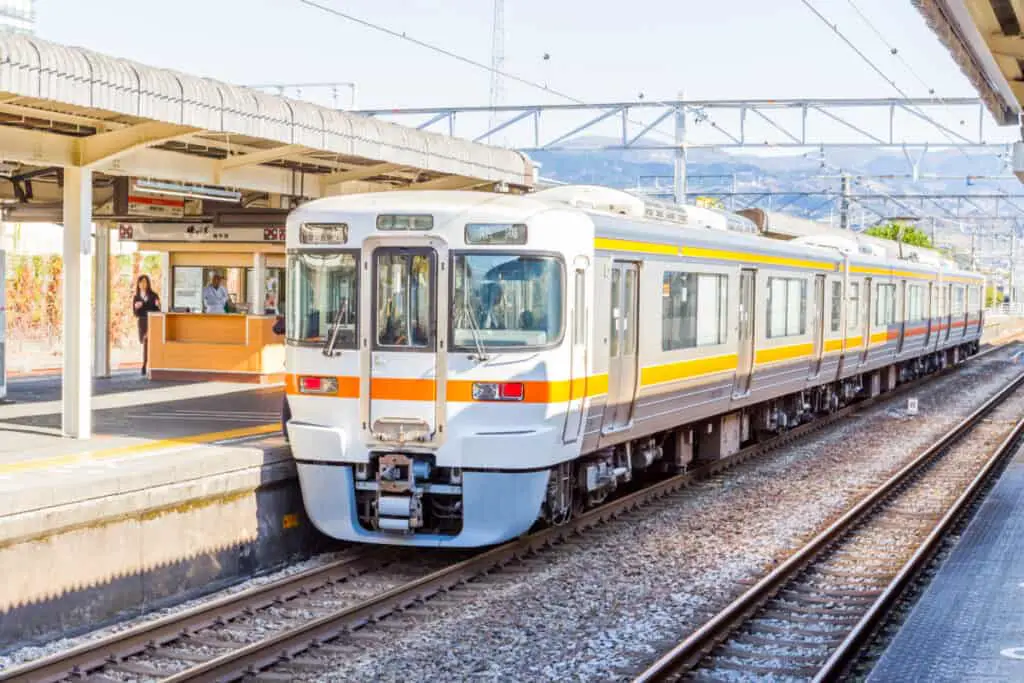
The Japan Rail Pass covers you for all non-bullet JR trains in Japan, plus all bullet trains except for the Nozomi and Mizuho services. It’s something I always recommend getting for peace of mind, and if you want to visit more than one city in Japan it’s a no-brainer. Click here to check them out. I still have the first ever one I got as a memento. Ahh, the memories!
Once in Kyoto, you can buy one of the IC cards or passes to use the peerless public transport system of subways and buses to reach almost all of your destinations. You can also rent a bike from your hotel or hail a spotlessly clean taxi.
Still, remember to pack a pair of sturdy walking shoes. One of the City of Kyoto’s main attractions is the lingering aura of peace and tranquility. Kyoto’s motto is “Kyoto, the Walkable City”, and there is ample space and provision for safe walking among tranquil surroundings.
Many of Kyoto’s major sightseeing spots are concentrated in one area. This compact section of about 10 square km is easy and quite cheap to navigate by taxi or is within walking distance of hotels and other districts.
Shopping in Kyoto
Save your big-label fashion shopping for Tokyo or other more cosmopolitan cities. Kyoto is a great place to look for handicrafts and fine Japanese art.
Here, you’ll find textiles printed using natural dyes according to the Shin-Manyozome method from 1500 years ago, or some of the highly ornate handmade “Kanamono” metal fittings to replace soulless modern handles and hinges.
Also look for Nishijin-ori silk fabric, which is woven from dyed silk threads spun from silkworm cocoons. It is renowned for its three-dimensional appearance and vivid colors. Nishijin-ori silk fabric is used to make kimonos, the mounting material for scrolls and paintings, and fabric for doll clothing in the traditional Hina doll style.
The downtown area bustles with shops of all shapes, sizes, and themes, and you should look out for small shops in historic streets selling local specialties like Kiyomizu-yaki pottery, okashi (traditional candy), and extraordinary pickled foods, handicrafts, and other souvenirs.
For any purely practical needs, there are many 100 Yen shops in Kyoto. These ubiquitous national stores offer groceries, drinks, toiletries, and household items at very reasonable prices. Store names vary by region, so ask your hotel/hostel reception where the nearest “Hyaku En” shop is.
For any of you who’d like to watch a bit of a virtual walking tour through Nishiki Market and Teramachi Kyogoku shopping street, the video underneath should satisfy all your needs!
Places to Definitely Visit in Kyoto
Among the more than 2000 temples and shrines in this city, there are true masterpieces of religious architecture where robed monks shuffle between temple buildings, prayer chants echo through stunning Zen gardens, and the faithful meditate on tatami mat floors.

- Ryoan-ji is a Zen temple famous for its intriguing rock gardens that date from around 1500. Although there are 15 small boulders, they are arranged in such a way that only 14 of them can be seen at one time from the verandah.
- The Nanzen-Ji Temple is located near the Nanzenji Suirokaku, the remains of a massively impressive aqueduct that fell out of use a long time ago.
- Tofuku-ji is famous for its spectacular traditional gate dating to 1425. The nearby Tsutenkyo Bridge is also worth a visit, especially in autumn.
- The verandah of the Kiyomizudera Temple is an iconic, gigantic wooden stage deck on a steep hillside. It was built in 1633 as a faithful reproduction of the 798 original. While you’re there, visit the Otowa-no-Taki waterfall. There are three separate streams. One stream promises success, the other promises love, and the last one, longevity. Drink only from two, because it is bad luck to take a sip from all three streams.
- Fushimi Inari Shrine and its vermilion row of gates that stretch all the way up one of Kyoto’s mountains is a must-see.
- One of the most famous attractions in Kyoto is the gold-leaf-covered Kinkaku-ji Temple or Golden Pavilion, a UNESCO World Heritage Site.
- Take a Kyoto Tea Ceremony and Kiyomizu-Dera Temple walking tour with a local guide. Other than traditional tea and sweet shops in this area, your local guide will teach you about Japanese religion and Kiyomizu-dera’s significance in local culture.
- The iconic Arashiyama Bamboo Grove, also known as Sagano Bamboo Forest, is the perfect photo setting in tranquil surroundings within a 30-minute bus or train ride from Kyoto station.
- You can practice Zen by fully applying yourself to an activity, even something like walking or cleaning, but at the Taizo-in Temple, you can focus your awareness on candy as a meditation aid!
- The Meiji Shrine, was built for Emperor Meiji, who was the first emperor of modern Japan when Japan’s feudal era came to an end.
- The Higashi Peace Pagoda was built by the efforts of Nichidatsu Fujii, the founder of the Nipponzan Myōhōji sect of Nichiren Buddhism. He devoted his life to the promotion of non-violence after an inspiring meeting with Mahatma Gandhi.
- The Central Kyoto Station, a bullet train station, is probably where you’ll arrive in Kyoto, and this futuristic station is well worth some time for exploration. The Kyoto Railway museum is just a few minutes away, but there are also regular displays at the Museum Eki Kyoto in the Isetan department store in the station.
More Tips for Tourists in Kyoto
One of those things you hear about before you go is how friendly the Japanese are. Well, it’s true. The Japanese are famously punctual and unfailingly courteous, friendly, and helpful.
- Tipping is not expected nor widely practiced in Japan, and in certain situations may cause the recipient some embarrassment.
- Kyoto’s inhabitants celebrate traditional culture, so be ready to slip your shoes off at the entryway of some hotels, most traditional restaurants and museums, and some select boutiques. Slippers are usually provided, but keep a pair of roomy socks handy, especially in the cold winter months.
- Shops and stalls offer free samples of their delicacies in many places. It’s polite to show your appreciation but refrain from snatching a piece and walking off. It’s also considered impolite to eat or chew while walking.
- Some stores and their staff would rather not have visitors storm in and start taking photos, so it’s a good idea to ask before you hit that record button. It can also be considered impolite to take a photo of a traditional geisha. Most won’t mind if you get their permission first.
It is easy to dismiss the cultural experience and history of Japan because it is one of the most modern and developed countries in the world, but in Kyoto, you’ll learn more about the ancient Japanese culture that produced modern Japan, a global technological giant.
If you enjoyed this post and would like to learn more about what makes Japan unique, please check out my post here!
Just your average irresponsible human who spends most of his free time and money traveling Japan. Love the food, culture, and sights but not a huge fan of anime until I used it for studying purposes. Can't decide which is better out of ramen or pizza.
Recent Posts
25 Special Things That Make Japan Unique
Sure, we've seen movies with stereotypical Japanese references, but what makes Japan unique? Keep reading because we'll dig deep into the 25 "things that make Japan, Japan." Japan offers its...
Visiting Takayama in Winter: The 8 Best Things To Do
Takayama, or as it’s often referred to – Hida-Takayama (as there are other places named Takayama as well) is a city located in Japan’s Gifu Prefecture, in the mountainous Hida region. While...

- Tours & Experiences
- Tailor-made Trips
- Bahasa Indonesia
We are happy to see you again!
Continue with
Or use email.
No Account? Create one
Create account
Already have an account? Sign in
Quickly Sign up with
I agree to Japan Travel's Terms of Service and Privacy Policy . Terms of--> and acknowledge that Japan Travel's Privacy--> applies to me.-->
Email reset password link
Please check your inbox and click the link we will send to you.
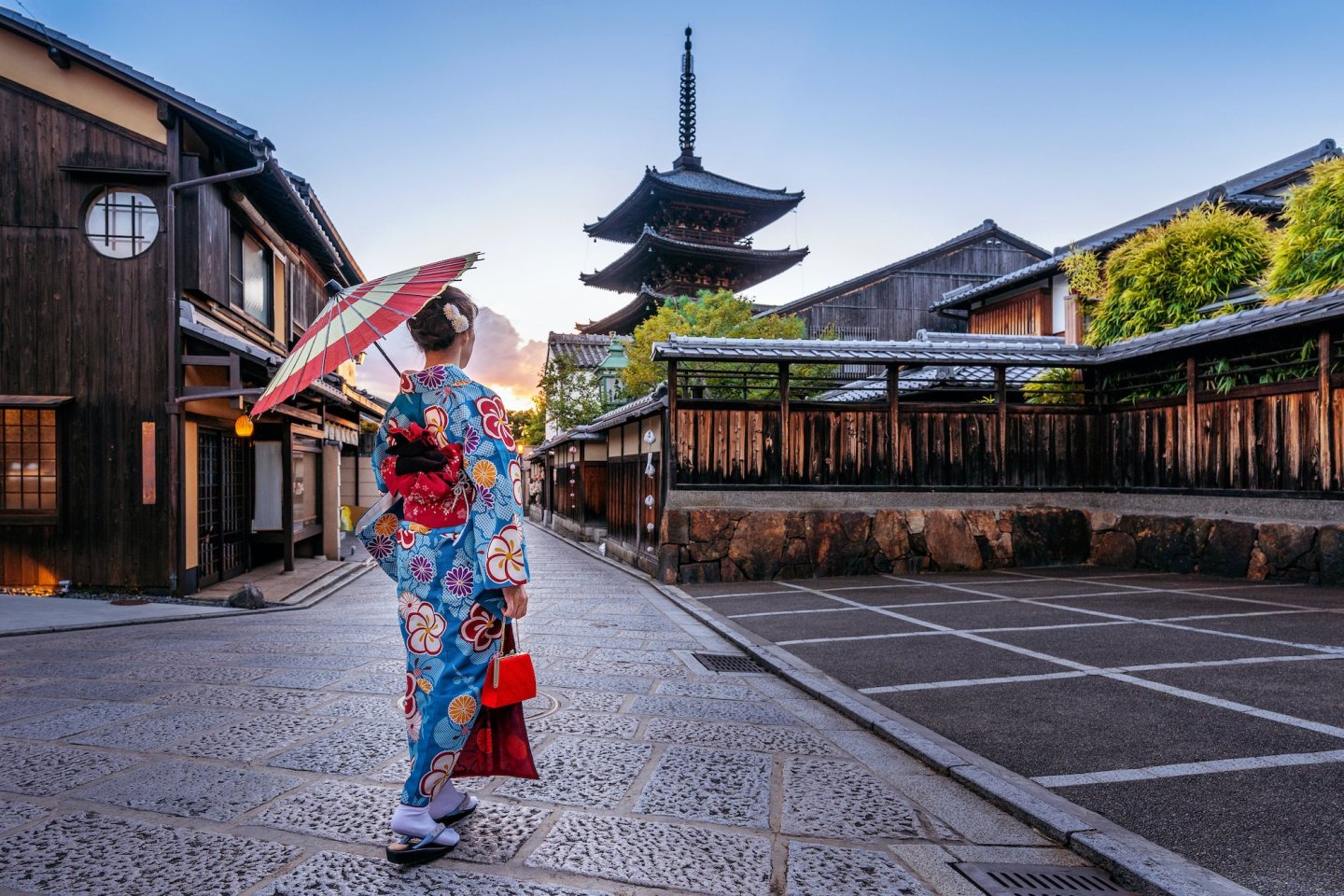
Japan's ancient capital home to sacred shrines and Zen gardens
Top attractions in kyoto.

Fushimi Inari Taisha
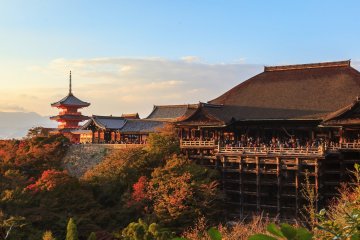
Kiyomizu-dera Temple
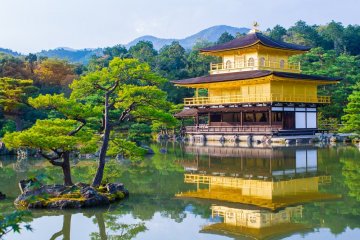
Kinkakuji Temple

Yasaka Shrine
Around kyoto.

Along a river in the West of Kyoto lies Arashiyama, a rural suburb of Kyoto. Literally “Storm Mountain”, Arashiyama is actually a tranquil place where you can wind down and relax in a beautiful..
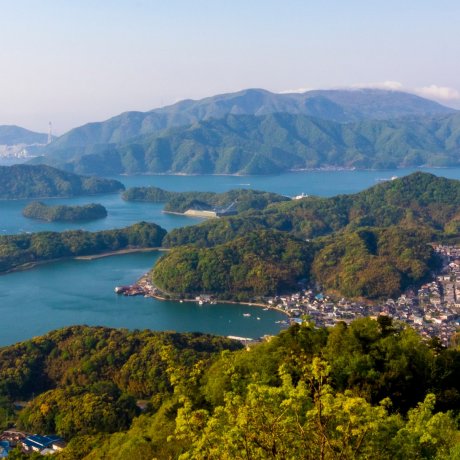
Maizuru is a port city in northern Kyoto along the coast of the Sea of Japan. It can be reached in just 2 hours from the central Kyoto City, where most visitors to Kyoto converge. The city is..
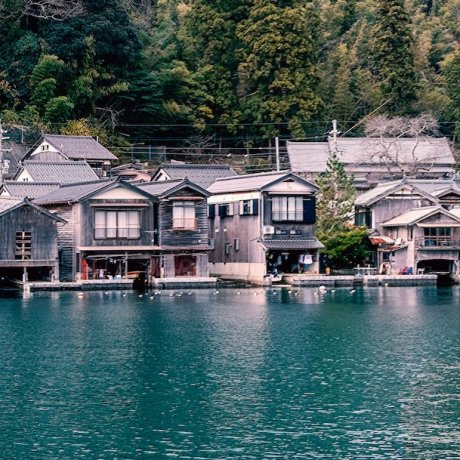
Ine (伊根町) is a town located in Yosa District, in northern Kyoto Prefecture. It is known for its traditional wooden fishing houses, or Funaya, that line Ine Bay. The region is located to t..
About Kyoto
Japan’s capital from AD 794 to 1868, the list of possible tourist destinations in Kyoto Prefecture (京都府, Kyōto -fu) is endless.
You can attempt to visit all of major sites, including but certainly not limited to: Fushimi Inari Shrine and its brilliant vermillion row of torii gates, its many temples (most notably Kiyomizu-dera , Sanjusangen-do , and Kinkaku-ji ), Nijo Castle , and Amanohashidate (one of the Three Views of Japan).
Or you can attempt to “experience” Kyoto and its rich culture: appreciate the traditional architecture and maiko of the Gion district , witness the Gion Festival (held every July), and indulge in the various delicacies Kyoto has to offer, such as Uji matcha green tea, tofu, and various Japanese confectioneries. Kyoto is on the bucket list of many a traveller, and for good reason.
- Things to Do in Kyoto
- Autumn Leaves
Kyoto Top 10
- Recommended

Kyoto Fall 2022 Day Three

Causette Joli

Jojakko-ji Temple

Kyoto Fall of 2022

Kyoto Bento Box Museum

Zuishin-in Daihonzan Temple

Amanohashidate Motoise Kano Shrine

Amanohashidate Chion-ji

Kyoto Fall 2022 Day Two

Gion Matsuri

Iwatayama Monkey Park

Takashi Murakami - Mononoke Kyoto

Aoi Matsuri Festival


The Kimono Forest Of Arashiyama

Toji Temple Market

A Walk Along Kamo River

Honno-ji Temple and Oda Nobunaga

Nagoya to Kyoto by Train

Miyako Odori
Upcoming kyoto events.

Hydrangea Season at Mimuroto-ji Temple 2024
Each year during Japan's rainy season, Kyoto's Mimuroto-ji Temple opens their hydrangea garden, which is filled with around..
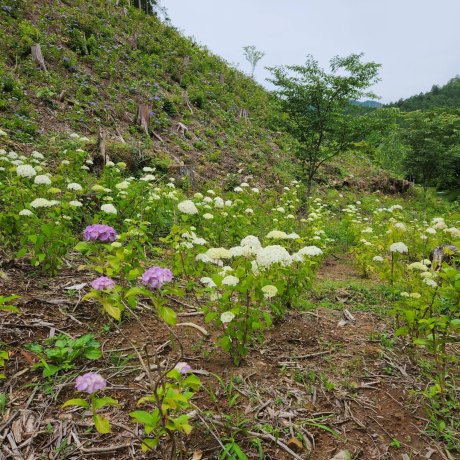
Kahoen Hydrangea Festival 2024
During peak hydrangea season, Kyoto's Kahoen garden is set to be filled with around 10,000 hydrangea bushes in bloom.
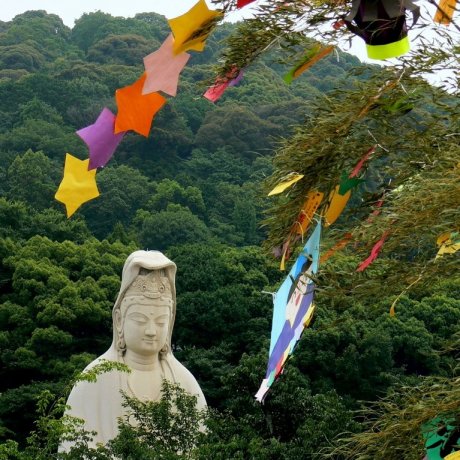
Tanabata and Light-up at Kodai-ji 2024
Colorful display of decorated bamboo branches in the carpark of Kodai-ji in Kyoto to celebrate the festival of Tanabata. The handmade..
Where to eat in Kyoto

Chao Chao Gyoza
Chowing down on gyozas and cheap beer at Chao Chao Gyoza

Aburi-mochi at Ichiwa & Kazariya
Ichiwa is an thousand year old store with longstanding connections with Yasurai Matsuri festival at Imamiya Shrine selling aburi-mochi,..
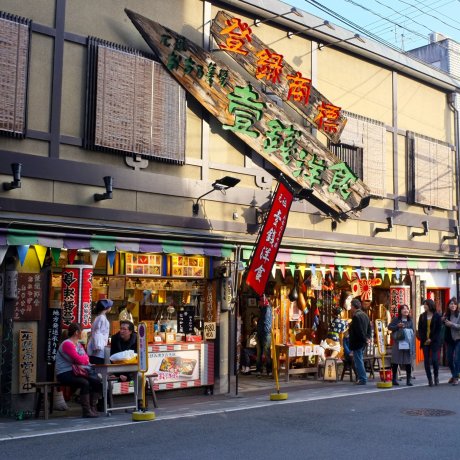
Taste the Famous Issen Yoshoku
Kyoto is famous for a lot of things. But when it comes to food, Issen Yoshoku is one recommended dish that you should not miss.
Places to stay in Kyoto

Tokyu Harvest Kyoto Takagamine
Tokyu Harvest Club Kyoto Takagamine & Viala is a gorgeous hotel inside the historical Shozan Resort Kyoto.
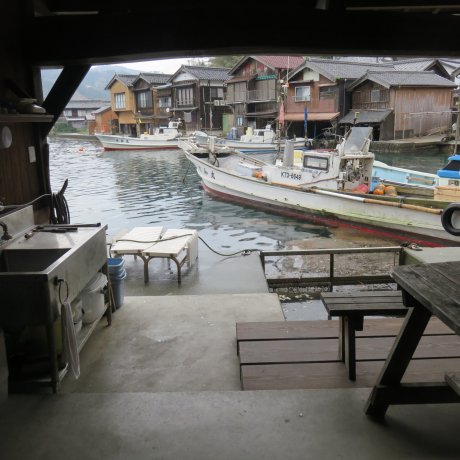
Ine Boathouse Ryokan
At Ine there are surprises and delights in every season. In winter the mountains are blanketed by snow, and you are rewarded by..

J Hoppers Hostel South Kyoto
Discover new friends and receive a warm welcome home on the quiet south side of JR Kyoto
Latest Kyoto Reports
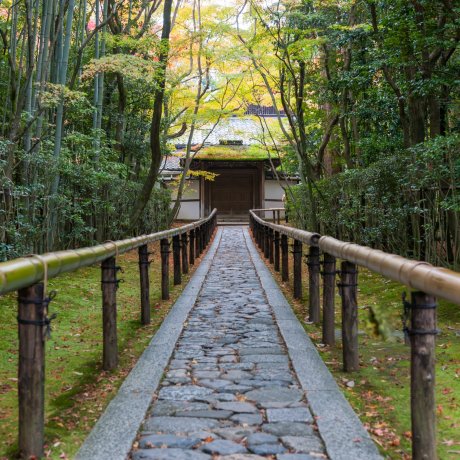
Maple Garden and Autumn Leaves
Kōtō-in, a sub-temple of Daihonzan Daitoku-ji, one of the largest Zen temples in Kyoto. Here lies the grave of Hosokawa Sansai..

Causette Joli is a Japanese cosmetics company that sells nail products that embody Japan’s cultural, natural, and seasonal bea..
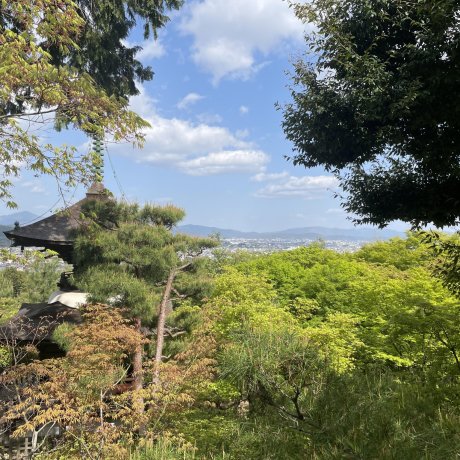
Let us know how we can help.
You are using an outdated browser. Please upgrade your browser or activate Google Chrome Frame to improve your experience.
- Neighbourhoods
- Things to do
- Getting there

Explore Kyoto: top things to do, where to stay and what to eat
Abundant heritage sites meet verdant nature and contemporary creativity in the city known as the cultural and historic heart of japan., why go to kyoto.
Japan's former imperial capital draws travellers from across the globe with its ancient temples, shrines and historic streets lined with teahouses.
Uncover Kyoto’s past while exploring storied districts and seeking out the city’s many UNESCO World Heritage Sites. Independent boutiques, exhibitions and an exciting food and drink scene are more reasons to visit. Those who appreciate spectacular scenery should head to the city’s most verdant areas for bamboo groves, forest and mountain views.
Kyoto's top neighbourhoods
Walk the flagstone streets lined with traditional wooden buildings that make up this historic entertainment district. Visitors mainly flock here to spot the elusive geisha, but make do with a trip to the many teahouses, restaurants and bars that encapsulate both modern and ancient Japan. See traditional dance performances at Minamiza kabuki theatre, stop by restaurants lining the Shirakawa Canal and seek out spiritual sites such as Yasaka Shrine.
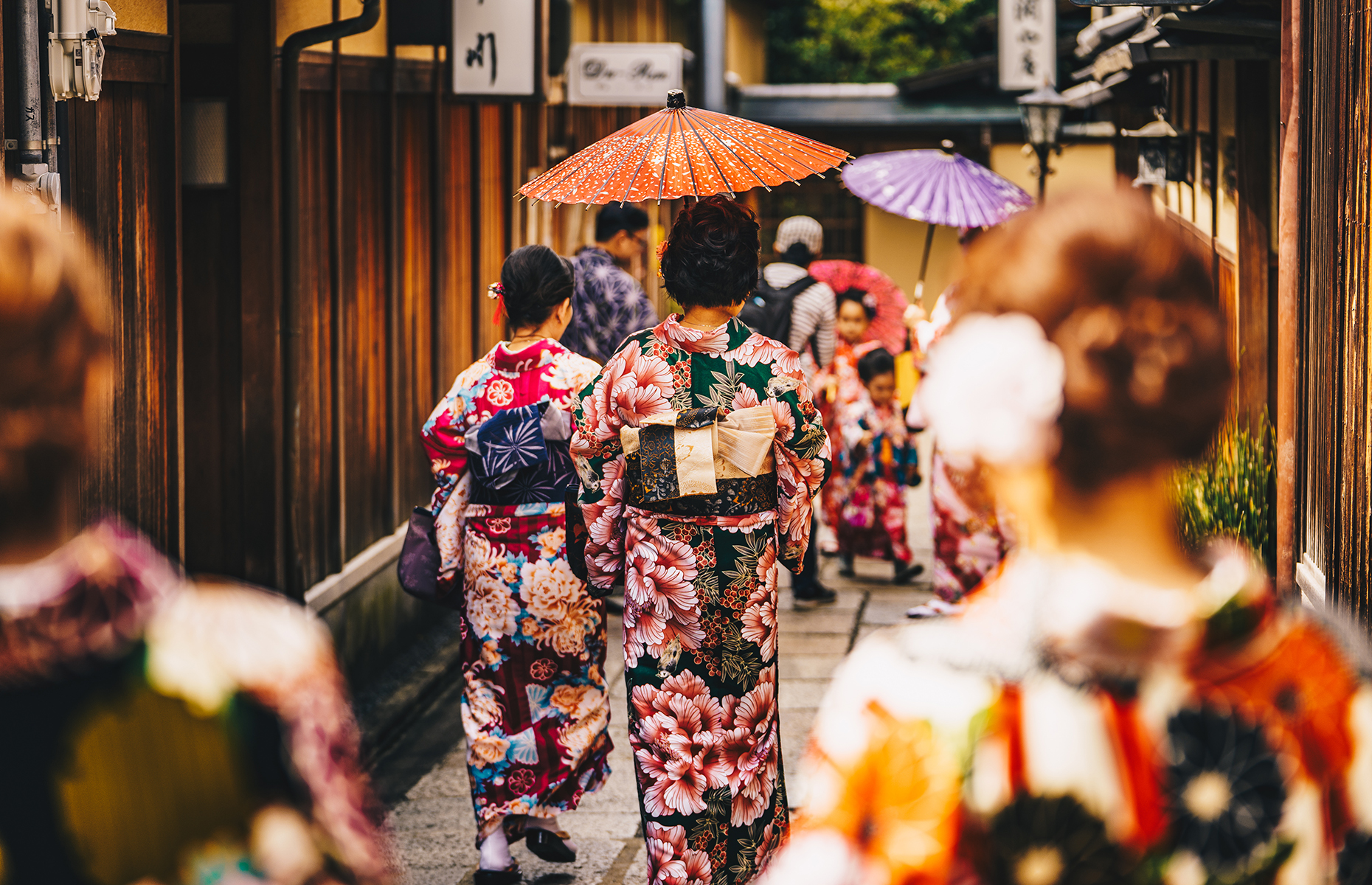
Higashiyama
Kiyomizu-dera, a part of the Historic Monuments of Ancient Kyoto UNESCO World Heritage Site, is among Kyoto’s most revered Buddhist temples and a site that’s appealingly tucked into the forested mountainside. This sprawling site, also known for the impressive vista of its viewing platform, is a part of Kyoto’s eastern Higashiyama district. Narrow streets running away from the temple, including the steep Sannenzaka shopping street, feature teahouses and traditional shops selling everything from pottery to wagashi (Japanese sweets).
Arashiyama
A wealth of temples, riverboat trips and bamboo forest make Arashiyama one of Kyoto’s key sightseeing areas. This western district tucked into the base of the Arashiyama mountains is centred around a main shopping street and its famous Togetsu-kyo bridge crossing the Katsura River. Make the most of your visit by walking through the famous Arashiyama Bamboo Grove, exploring temples such as Tenryu-ji and renting a rowing boat. The Sagano Scenic Railway takes you up into the mountains from here.
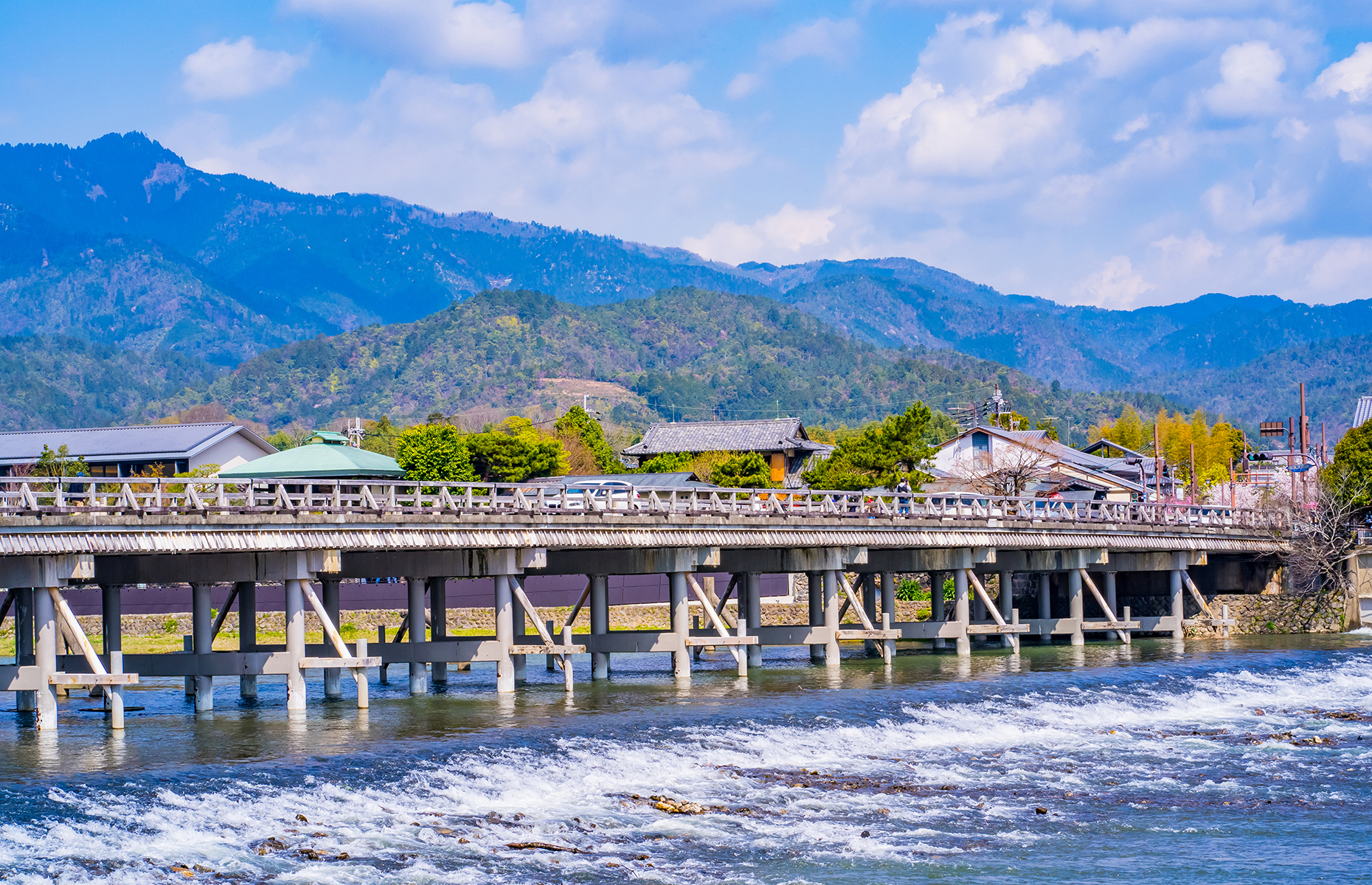
This area of southern Kyoto is best known for being home to one of Kyoto’s most famous visitor sites: the atmospheric Fushimi Inari Shrine, where walkways framed by thousands of vermilion torii gates lead you along a network of trails on the forested slopes of Mount Inari. From the main shrine buildings of this impressive complex, you can hike up to viewpoints on the mountainside. Fushimi is also a centre for sake production and as such has brewing sites like Gekkeikan Okura Sake Museum that you can visit.
READ MORE: 9 reasons to visit northern Japan
Must-have experiences in Kyoto
Temples and shrines .
Several of Japan’s most important temples and shrines are found within Kyoto. Kiyomizu-dera (translating to Pure Water Temple) in Higashiyama is said to be the most visited temple in Kyoto, and understandably so with impressive structures including a main hall and three-storey pagoda, the Otowa no Taki waterfall and a scenic forest setting. Kinkakuji – also known as the Golden Pavilion – in Kita-ku is another of the city’s most popular temples. Its top two floors are entirely covered in gold leaf and it’s set overlooking a sprawling pond. Fushimi Inari and the Yasaka Shrine stand out among the city’s many shrines, while Ryoan-ji draws attention for being the site of Japan’s most famous Zen rock garden.
READ MORE: World's most beautiful temples
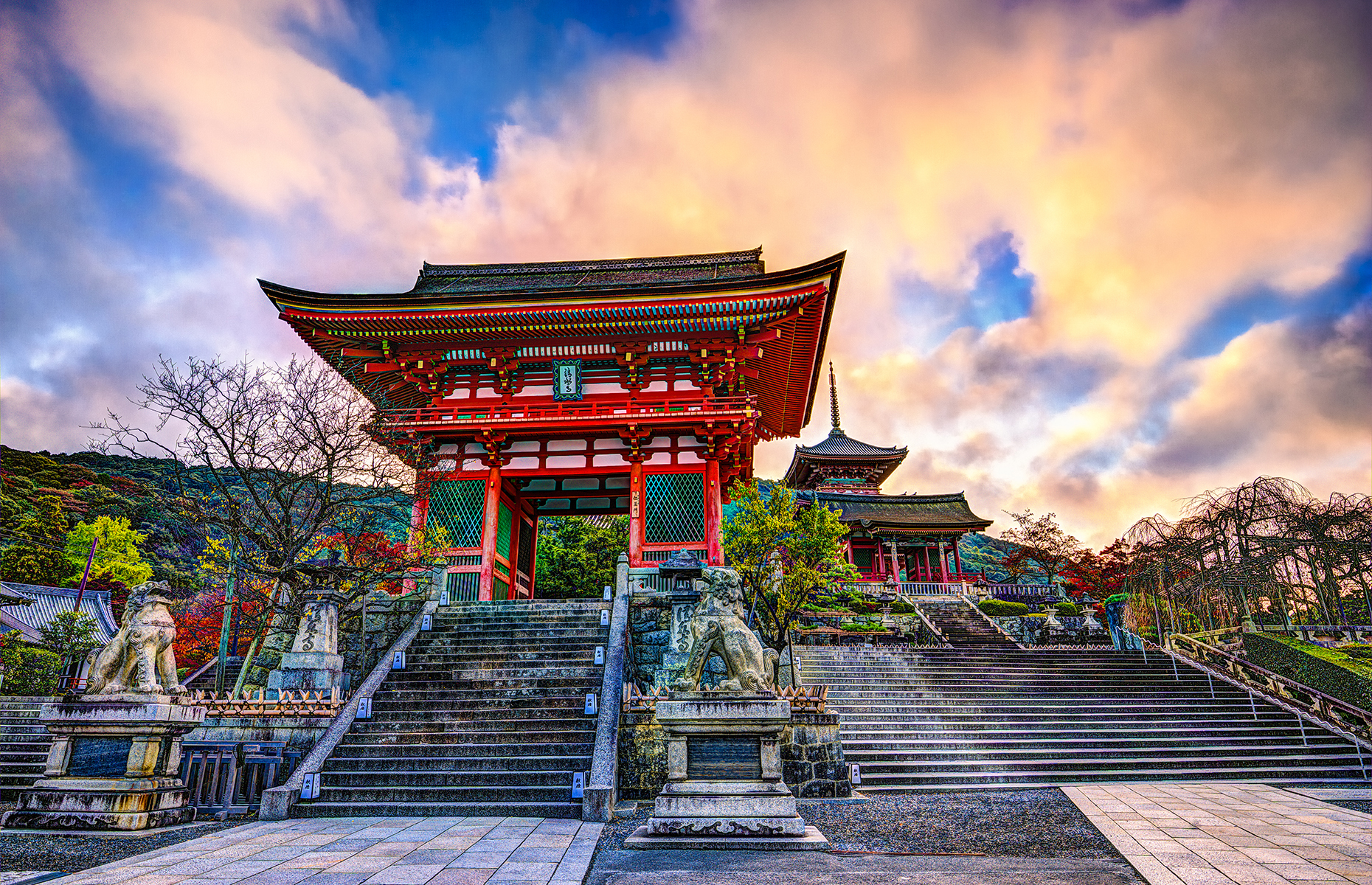
Cultural insight
Experience traditional Japanese culture first-hand in Kyoto by taking part in a wealth of cultural activities. These range from lessons in Japanese tea ceremony at teahouses such as Camellia in Higashiyama to calligraphy classes and making Japanese sweets with companies including Kyoto Maikoya. See Samurai swordplay at Samurai Kenbu Theater, watch the traditional Japanese dance-drama kabuki at Gion’s Minamiza theatre and catch a kyo-mai dance, performed by geisha and maiko (trainee geisha), at Gion Corner. For insight into contemporary culture, explore major galleries such as COHJU Contemporary Art and The National Museum of Modern Art, Kyoto .
The great outdoors
With its location in a vast geographical basin surrounded by forested mountains in three directions, Kyoto abounds with opportunities to get out into the great outdoors. Arashiyama, with its bamboo groves and a river flowing amid mountains and forest, is among the city’s best areas for exploring, along with Fushimi and its famous shrine’s torii-gate-flanked trails leading up the mountainside.
Other areas of natural beauty include Maruyama Park, the setting for Yasaka Shrine and a known site for cherry blossom in spring, as well as the Philosopher’s Walk under cherry trees lining a canal between Ginkaku-ji (Temple of the Silver Pavilion) and Eikan-do temple. To visit Kurama-dera, a temple in the far north that’s reached by train from central Kyoto, you need to hike or take a cable car up the mountain.
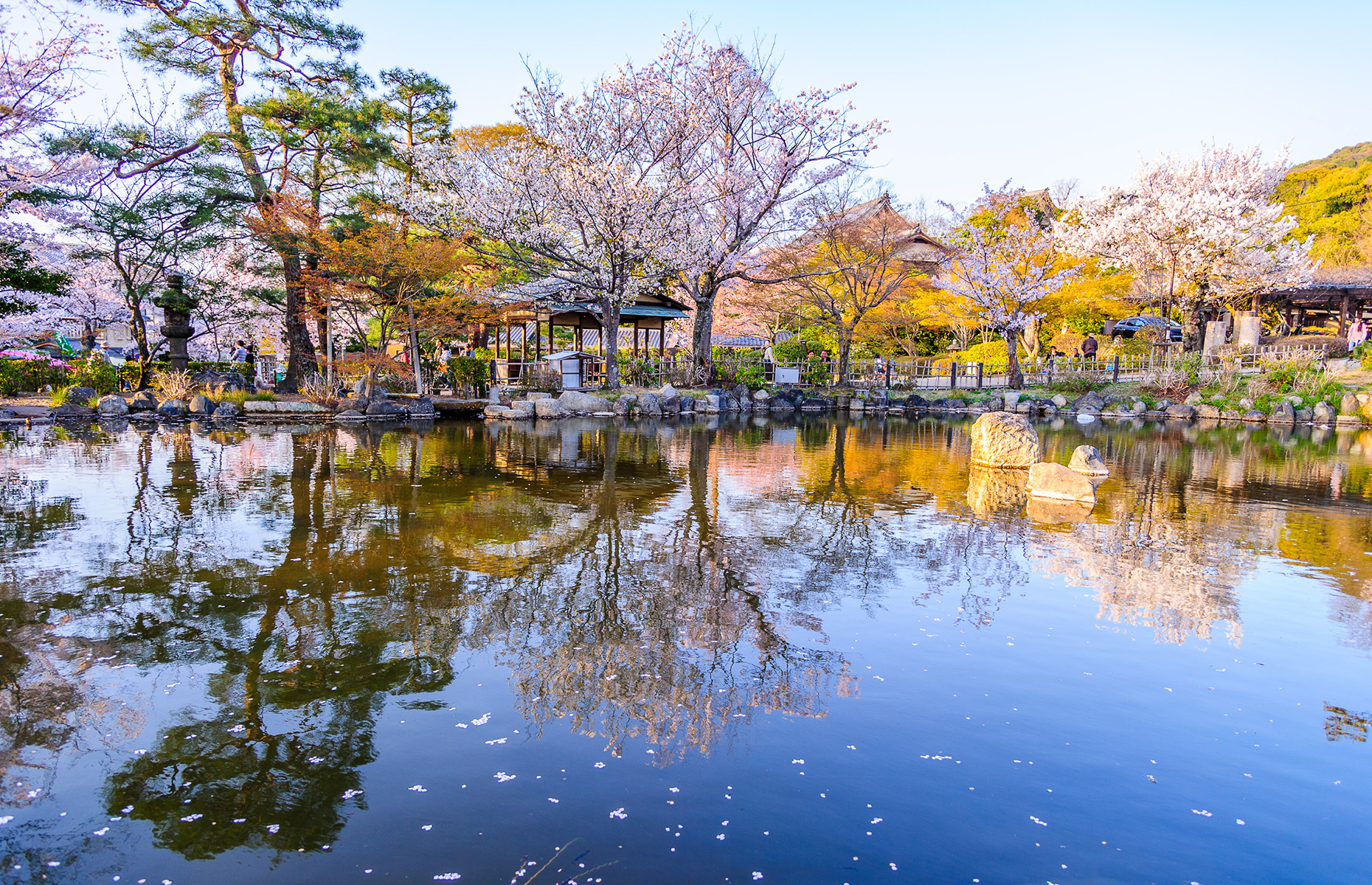
Food and drink
Each area of Japan has its distinct culinary identity. Kyoto's cuisine stands out for highlighting traditional Japanese ingredients, such as tofu and matcha, along with the tradition of serving multi-course kaiseki-style meals and a celebration of the skills of local artisans. Shojin ryori, the vegetable-based cuisine of Buddhist temples, is also said to have originated here.
For a taste of these local specialties, wander through Kyoto’s famous Nishiki Market, which has a history spanning several centuries, in the downtown Nakagyo district. For an unforgettable meal, dine at the three-Michelin-starred Hyotei kaiseki restaurant that’s been serving customers for more than 450 years. And try traditional Buddhist shojin ryori at a temple restaurant such as Shigetsu, which is set within the grounds of Tenryu-ji. Tea rooms serving authentic Japanese sweets are dotted across the city – Kagizen Yoshifusa in Gion is especially popular.
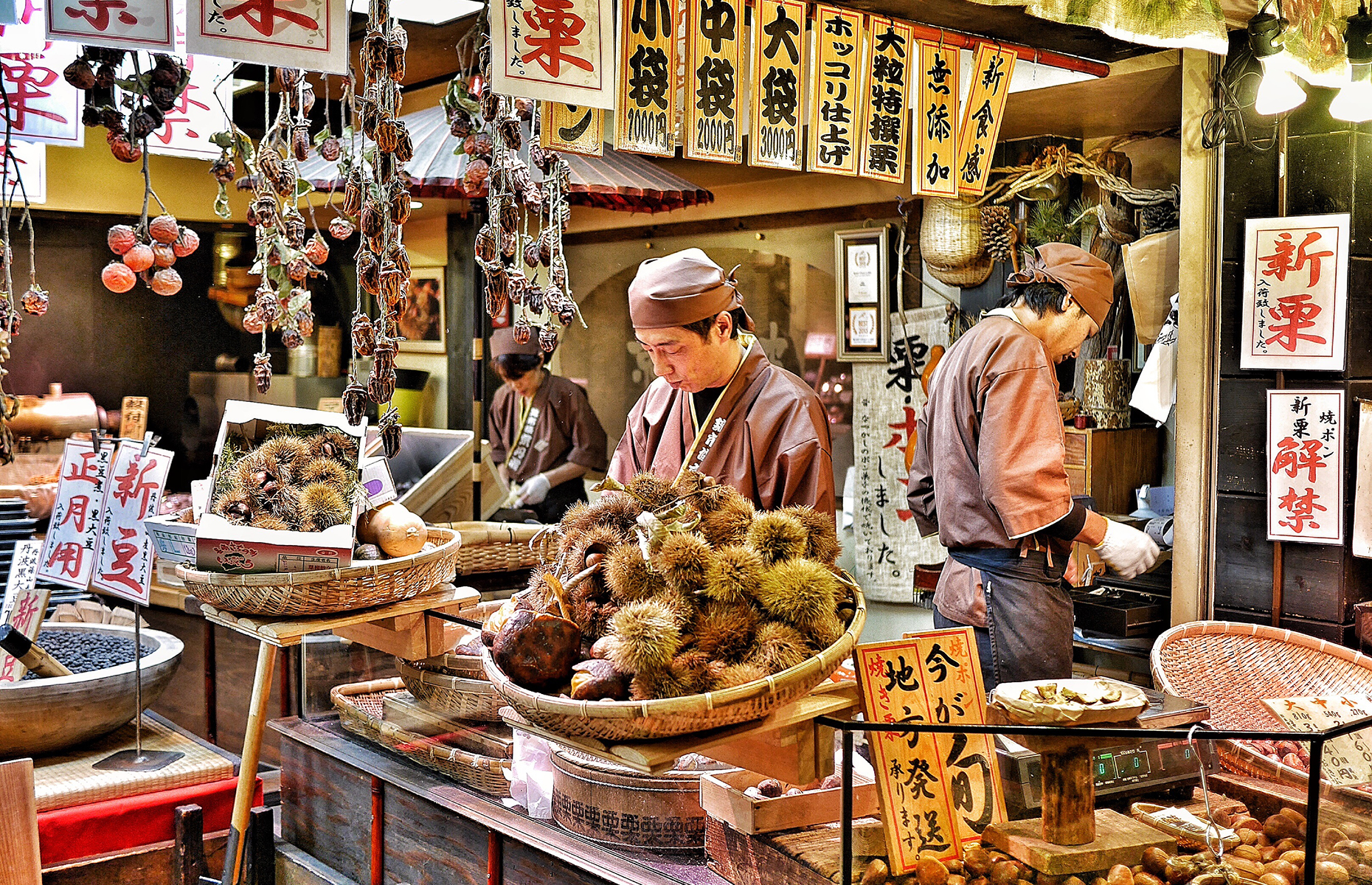
Where to stay in Kyoto
Pricey standout hotels in Kyoto include the serene Aman Kyoto , home to two upscale restaurants and its own onsen in a privileged forest setting just moments from Kinkaku-Ji, and the luxurious Sowaka transforming a 100-year-old former teahouse in Gion into a modern ryokan. Meanwhile, riverside Hoshinoya Kyoto in Arashiyama is housed in a collection of heritage buildings, updated for a tranquil modern feel.
Those on a tighter budget can stay at the art-filled Ace Hotel Kyoto near Nishiki Market, housed in a historic building that was renovated by the famous architect Kengo Kuma. Or check in to the recently-opened OMO5 Kyoto Gion fusing traditional and modern Japanese design in rooms also containing a living and dining space, as well as a small kitchen.
READ MORE: 40 unmissable experiences to enjoy in Japan

Getting there and around
After flying into either Tokyo or Osaka, Kyoto is easily reached via the country’s Shinkansen train system. The journey from Shin-Osaka Station to Kyoto takes only 15 minutes by bullet train, while the journey between Tokyo Station and Kyoto takes around 2h 15mins. Once you’re there, Kyoto is easy to get around on foot and by public transport. Kyoto bus and subway passes can be bought for unlimited use throughout the day from Kyoto City Bus and Subway Information Centre in front of JR Kyoto Station.
Be the first to comment
Do you want to comment on this article? You need to be signed in for this feature
Copyright © loveexploring.com All rights reserved.
- Media & Industry
- Meetings & Events
- Select Language 简体中文 繁體中文(香港) 繁體中文(臺灣) India (English) Bahasa Indonesia 한국어 ภาษาไทย Tiếng Việt Singapore (English) Philippines (English) Malaysia (English) Australia/New Zealand (English) Français Deutsch Italiano Español United Kingdom (English) Nordic countries(English) Canada (English) Canada (Français) United States (English) Mexico (español) Português العربية Japan(日本語) Global (English)
- India (English)
- Bahasa Indonesia
- Singapore (English)
- Philippines (English)
- Malaysia (English)
- Australia/New Zealand (English)
- United Kingdom (English)
- Nordic countries(English)
- Canada (English)
- Canada (Français)
- United States (English)
- Mexico (español)
- Global (English)
- Fujiyoshida
- Shimonoseki
- Ishigaki Island
- Miyako Island
- Kerama Island
- Tokyo Island
- Koka & Shigaraki
- Hida Takayama
- Ginza, Nihonbashi
- Beppu & Yufuin (Onsen)
- Ginzan Onsen
- Nagasaki Islands

- Kumano Kodo
- Shikoku Karst
- Amami Oshima
- Hachimantai
- Omihachiman
- Aizuwakamatsu

- Diving in Japan
- Skiing in Japan
- Seasonal Flowers in Japan
- Sustainable Outdoors
- Off the Beaten Track in Japan
- Scenic Spots
- World Heritage
- Home Stays & Farm Stays

- Japanese Gardens
- Japanese Crafts
- Temple Stays
- Heritage Stays
- Festivals and Events
- Theater in Japan
- Japanese Tea Ceremony
- Cultural Experiences in Japan
- Culture in Japan

- Local Cuisine Eastern Japan
- Local Cuisine Western Japan
- Local Street Food
- Japan's Local Ekiben
- Japanese Whisky
- Vegetarian and Vegan Guide
- Sushi in Japan Guide
- Japanese Sake Breweries

- Art Museums
- Architecture
- Performing Arts
- Art Festivals
- Japanese Anime and Comics
- Japanese Ceramics
- Local Crafts

- Scenic Night Views
- Natural Wonders
- Theme Parks
- Samurai & Ninja
- Iconic Architecture

- Wellness Travel in Japan
- Japanese Ryokan Guide
- A Guide to Stargazing in Japan
- Relaxation in Japan
- Forest Bathing (Shinrin-yoku)

- Experiences in Japan
- Enjoy my Japan
- National Parks
- Japan's Local Treasures
- Japan Heritage
- Snow Like No Other
- Wonder Around Japan

- Visa Information
- Getting to Japan
- Airport Access
- COVID-19: Practical Information for Traveling to Japan
- Anime Tourism
- Countryside Stays
- Accessible Tourism
- Hokkaido Great Outdoors
- Scenic World Heritage in Tohoku
- Shikoku’s Nature and Traditions
- Southern Kyushu by Rail

- Traveling by Rail
- How to Travel by Train and Bus
- JR Rail Passes
- Scenic Railways
- Renting a Car
- Sustainable Travel in Japan
- Travel Brochures
- Useful Apps
- Online Reservation Sites
- Eco-friendly Accommodation
- Luxury Accommodations
- Traveling With a Disability
- Hands-free Travel
- How to Book a Certified Tour Guide
- Volunteer Guides
- Tourist Information Center

- Japanese Manners
- Spring in Japan
- Summer in Japan
- Autumn in Japan
- Winter in Japan
- Cherry Blossom Forecast
- Autumn Leaves Forecast

- Japan Visitor Hotline
- Travel Insurance in Japan
- Japan Safe Travel Information
- Accessibility in Japan
- Vegetarian Guide
- Muslim Travelers
- Safety Tips

- JAPAN Monthly Web Magazine
- Arts & Cultures
- Nature & Outdoor
- Festivals & Events
- Insider Blog
- Things to do
- Local Guides
- Food & drink
- Traditional
- Hokuriku Shinetsu

My Favorites
${v.desc | trunc(25)}
Planning a Trip to Japan?
Share your travel photos with us by hashtagging your images with #visitjapanjp
Kansai Kyoto A New Guide to Traveling Around Kyoto
- Destinations
Experience the essence of Japanese culture, constantly evolving throughout history
When visiting Kyoto, it's best to keep in mind that many local residents call this ancient city home. To enjoy your trip to the fullest, please show consideration to local communities and mind your manners to help preserve Kyoto's culture and keep tourism sustainable moving forward.
Due to Kyoto's increasing popularity, the city sometimes has an excessive concentration of tourists during particular times and seasons, or in certain areas – making life difficult for locals, and potentially damaging to natural environments.
How to Get There
- Kyoto’s grand shrines, ancient castles and historical streets
- Ohara’s crisp mountain air, stunning autumn foliage and symbolic gardens
- Kyoto’s traditional Japanese inns, an essential convergence of Japanese tradition and culture
- Kyoto cuisine, which perfectly encapsulates the Japanese spirit and art of food preparation
- The four alternative views of Kyoto: Kyoto by the Sea, Woodland Kyoto, Tea Country Kyoto and Kyoto Otokuni Bamboo Groves
Recommended for You
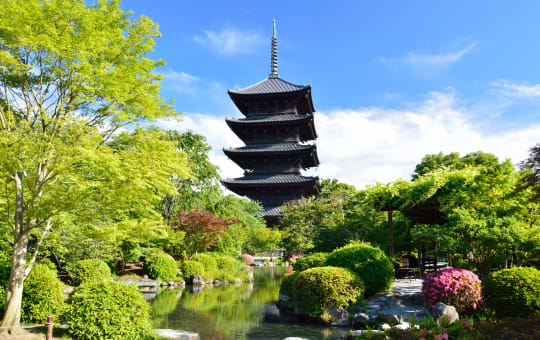
Cherry Blossoms
Forecast of first bloom
24 Mar 2024
Forecast of full bloom
01 Apr 2024
Explore Kyoto by Area

Trending Attractions in Kyoto
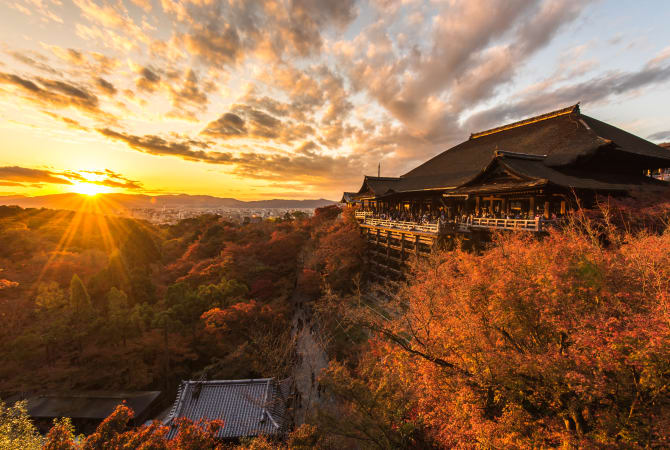
Local Specialties
Yudofu, literally "hot-water tofu", is arguably the best way to enjoy high-quality, freshly made tofu. Tofu is warmed through in a simple broth made of water and kombu, and simple condiments are served alongside. Kyoto is the place to enjoy this, as it is the epicenter of Buddhist cuisine, in which yudofu features heavily.
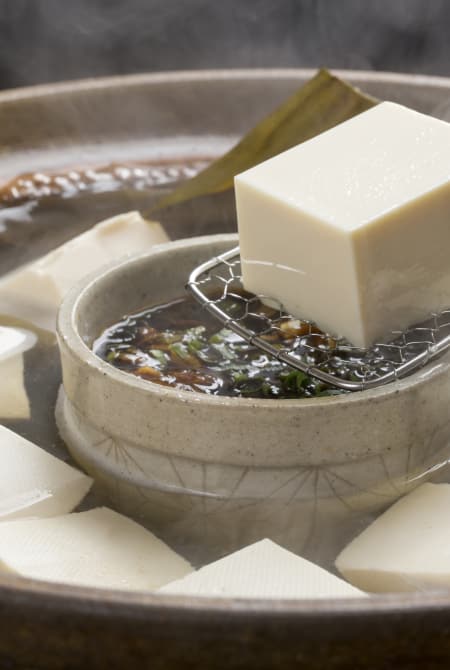
Kyo-gashi are a type of wagashi, or traditional Japanese sweet. Kyo-gashi are beautiful, colorful and symbolic confections, custom-made for different occasions, so no Kyo-gashi will ever be exactly the same as another.
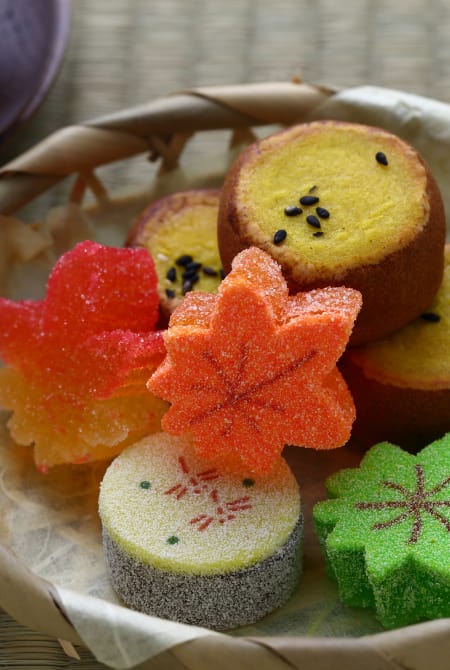
Before modern transportation was available, farmers grew only the vegetables most suited to the regions they farmed in. Kyo-yasai are vegetables traditionally grown in Kyoto for centuries, and they play an important role in modern Kyoto cuisine.
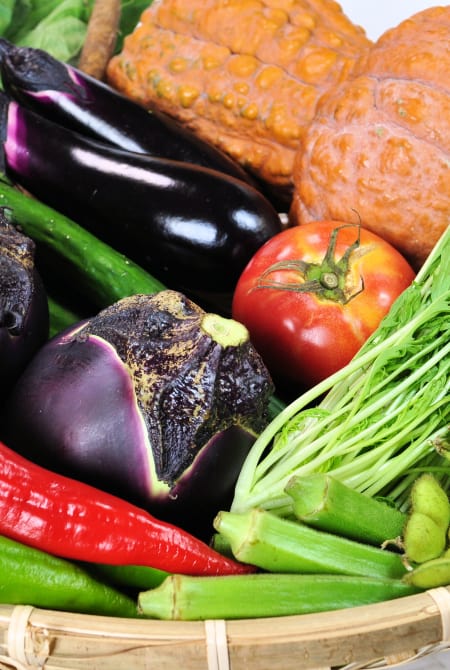
Green tea from Uji is among the oldest and most highly regarded teas in Japan. You'll find it in tiny soba restaurants and temple gardens and many places in between. There are a variety of ways to enjoy green tea while in Uji.
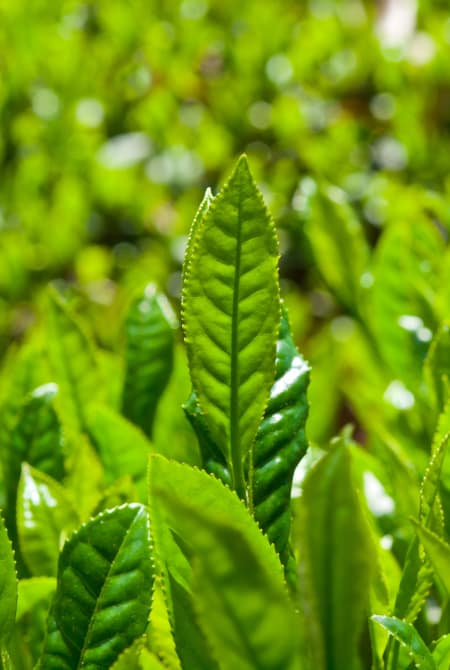
Kyoto Kiyomizu Ware
Handmade ceramics and porcelain made in Kyoto are known as kyo yaki or Kiyomizu yaki and are characterized by their gorgeous elegance made with advanced pottery techniques. This craft evolved alongside other sophisticated pastimes in Kyoto, including the tea ceremony and flower arranging.
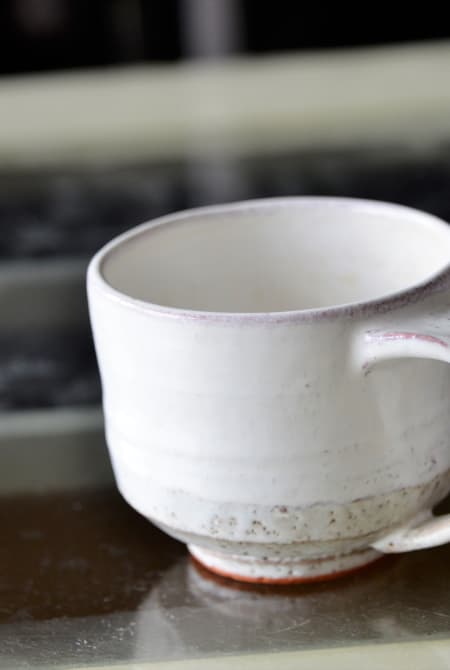
Kyoto Dyed Silk
Invented in the late 17th century, kyo yuzen is a dyeing technique distinguished by vivid colors, subtle gradations, complex patterns and precision linework. Traditional Japanese painting-like patterns are expressed in the textile design.
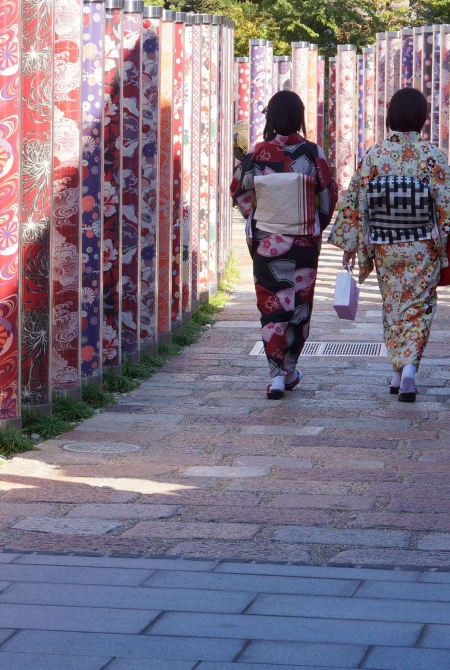
Nishijin Textiles
Nishijin ori silk textiles originate in Nishijin, the garment district of Kyoto. Exquisitely decorated brocades have been handwoven here for centuries, and feature gorgeous patterns utilizing multi-colored yarn-dyed threads. Treated with care, these garments can last a lifetime.
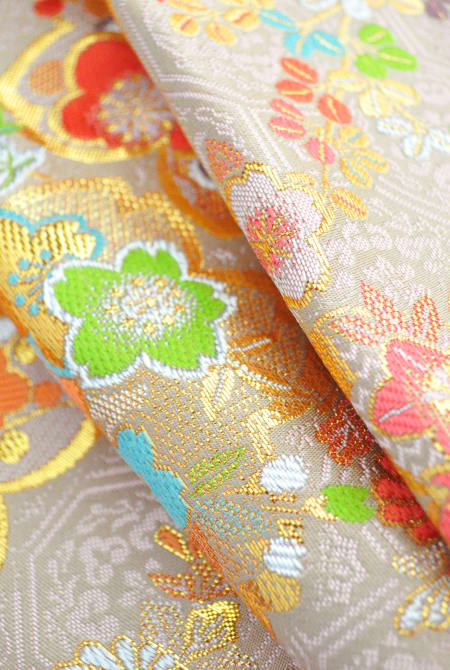
Kyoto Folding Fans
Fashioned out of bamboo, the kyo sensu is a folding fan decorated with handmade Japanese paper or silk on thin wooden strips, traditionally cypress. These artful accessories are used at ceremonies, festivals and Noh performances.
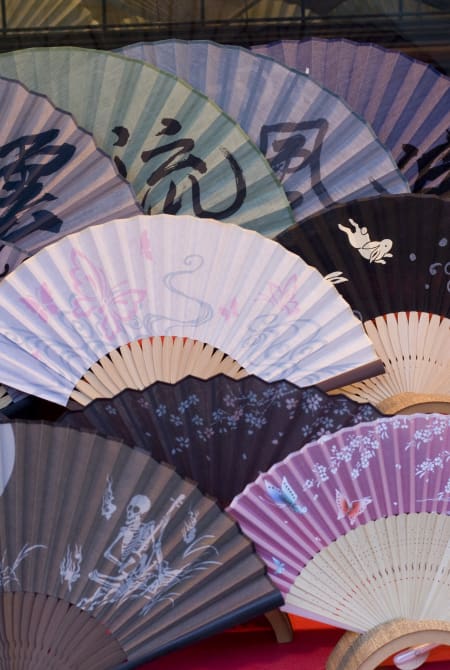
Seasonal Highlights
Late April to May is the time to view late-blooming cherry blossoms, yaezakura (double-flowered cherry blossoms) and the fresh green maple leaves in shrine and temple gardens.
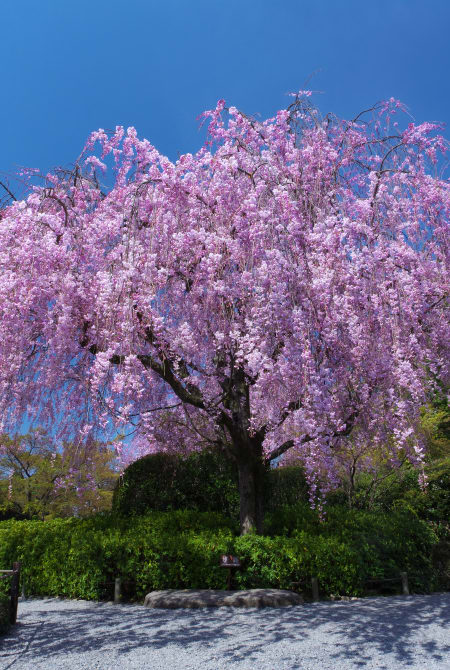
Highlights of the hottest season include riverside dining, cormorant fishing performances, beach excursions, the month-long Gion Festival, and fire displays to honor the spirits of ancestors.
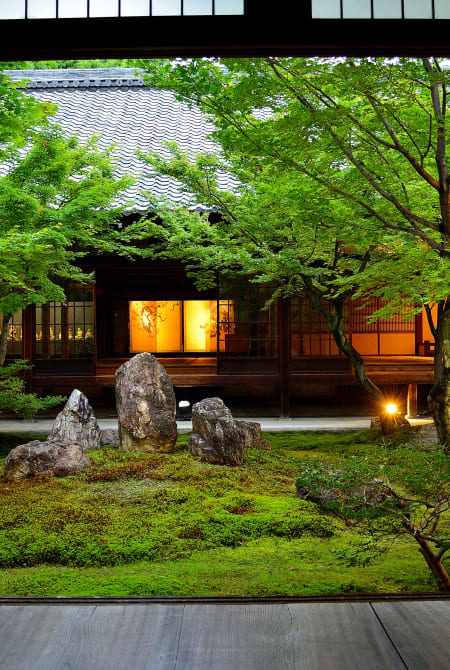
Kyoto’s autumn foliage attracts visitors from the world over. Harvest moon festivals are another autumn highlight. The cool temperatures are perfect for hiking at Mt. Ponpon and Mt. Atago.
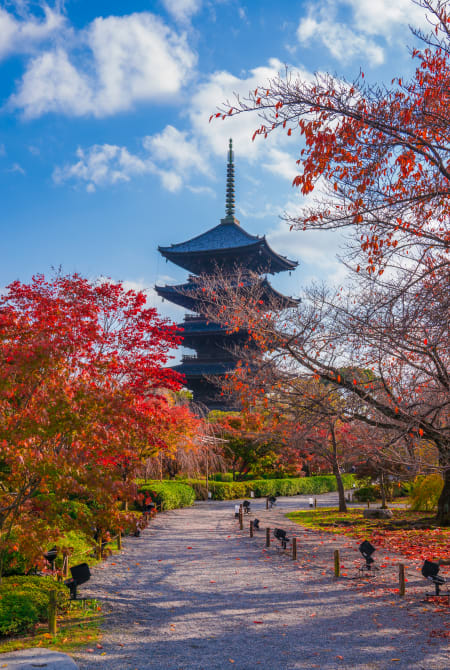
Kabuki’s biggest stars come to perform, plum blossoms emerge after the snows, and countryside onsen offer plenty of warmth.
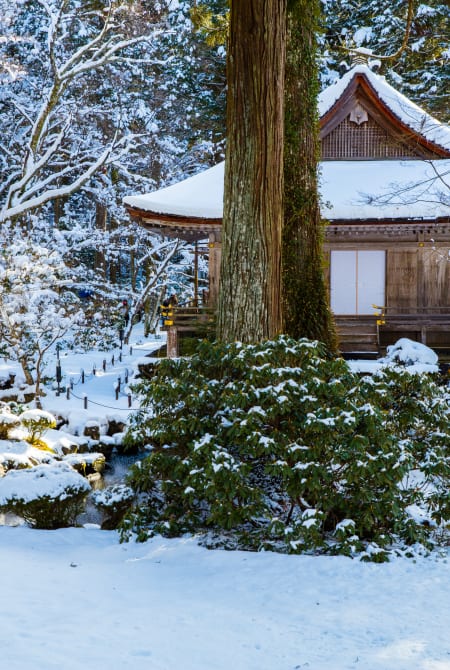
Related Links
Discover what to do and where to go in Kyoto—Japan’s culture capital

Delve deeper into Kyoto culture by taking part in a free craft workshop

Explore Nearby Prefectures
Please Choose Your Language
Browse the JNTO site in one of multiple languages
13 Reasons to Visit Kyoto, Japan
Book an adventure with trips by supertravelr to kyoto with a few of our top tips for exploring the cultural and historic heart of japan..

There are many good reasons to visit Kyoto – colourful shrines, maiko and geisha culture, and the multi-course kaiseki ryori meals are top of the list for many. But if you’re still hovering over the Book Now button, we’ve plenty more reasons why the ancient capital of Japan should be on your travel bucket list.
A trip to Kyoto is included as part of our carefully planned 12-day tour of Japan . Led by a local insider, you’ll get expert insight into Kyoto’s attractions and everywhere beyond.
Kyoto is home to more than 1,600 historic Buddhist temples with many dating back more than a millennium. The most famous temple district is Higashiyama, where you can find some of the best and oldest temples in Japan such as the celebrated Kiyomizu-dera Temple.
Kyoto is home to more than 400 colourful shrines dedicated to the ancient religion of Japan. Some of the most famous include Fushimi Inari Taisha, Heian Jingu and Yasaka Jinja.
Kyoto has one of the largest collections of Unesco World Heritage Sites on the plant, which includes 12 Buddhist temples, three Shinto shrines and one historic castle. No trip to Kyoto is complete, without visiting at least some of these amazing sites.
Take a stroll in one of the many gorgeous gardens in Kyoto , designed to be enjoyed as recreation by feudal lords and samurai shoguns. There are many places around Kyoto to enjoy these peaceful gardens from temples and shrines to public parks and ryokan (traditional inns).
Relax and contemplate the world at one of the dry stone Zen gardens in Kyoto. One of the best and most famous is the Zen Garden at Ryoan-ji Temple, which features 15 mystical rocks floating in a sea of pure white sand.
Kyoto is the birthplace of maiko and geisha ( geiko in the local dialect) culture with the Gion district its spiritual home. The wooden teahouses and traditional restaurants of well preserved areas such as Hanami-koji Street and Pontocho offer the best chance to spot a geisha elegantly scurrying to their next appointment.
Kyoto is home to many ryokan (traditional Japanese inns) and machiya (traditional Kyoto townhouses) that offer a glimpse into old Kyoto. They are a fantastic place to stay to experience authentic Japanese accommodation and lifestyle.
Kyoto has a rich and historic food tradition with various culinary styles that have been around for centuries. Enjoy the luxury of carefully prepared multi-course kaiseki ryori meals, or simply relax and reap the health benefits of shojin Buddhist cuisine.
If you are a green tea lover, then you will be in matcha heaven in Kyoto. Matcha goodies can be found everywhere and include treats such as as ice cream, chocolate, cookies, cream puffs, cakes and traditional yatsuhashi confectionary.
Sake has been made in Kyoto since the 16th century with the Fushimi area home to many of the most famous sake breweries in Japan. Most places offer a chance to sample some of their finest with a great variety of tastes available.
We all love cute monkeys and the Arashiyama Monkey Park is home to around 130 wild monkeys. The park aims to replicate the wild habitat of the monkeys, so the adorable creatures roam free and hang out with the tourists who visit the park.

Top 6 Reasons to Visit Kyoto
by Paula McInerney | Apr 3, 2018 | DESTINATIONS , Japan , Kyoto | 6 comments
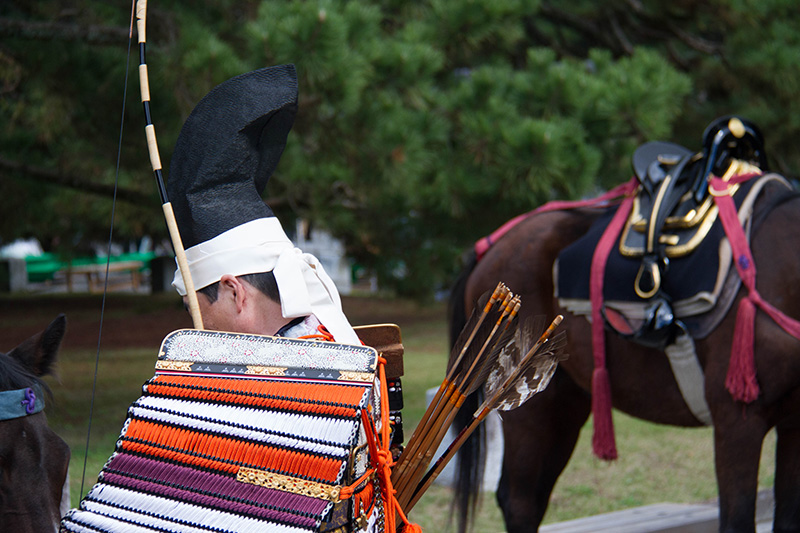
There are many reasons why you should visit the city of Kyoto, and these are the Top 6 Reasons to Visit Kyoto with a lot of visual encouragement for you.
Kyoto was the imperial capital of Japan for more than 1,000 years , from 794 through until 1869. Kyoto is a highly historic and cultural center. The temples abound, the Shinto Shrines are all around, and Kyoto oozes total charm . The people are welcoming, the food is outstanding, and the city just continues to beckon travelers from afar. Kyoto is a place of quiet temples, sublime gardens, colorful shrines and geisha are walking the streets. How many tourists visit Kyoto each year? Kyoto receives over 500,000 foreign tourists every year, and this is growing.
Editor note, updated March, 2018
Etiquette when Visiting Japan
- 0.1 Etiquette when Visiting Japan
- 0.2 Flights to Japan
- 0.3 Getting to Kyoto
- 0.4 Where to stay in Kyoto
- 1.1 1. Temples and Architecture
- 1.2 2. Gardens and Forests and Cherry Blossoms
- 1.3 3. Sake and Food
- 1.4 4. Festivals
- 1.5 5. Exploring Gion
- 1.6 6. Kyoto at Night
Before going to Japan it pays to understand the culture and the etiquette you should observe as visitors. Read about it here.

Flights to Japan
Skyscanner compares all airlines and booking sites to get the cheapest fares for you yo Japan. To find the flight to best suit your trip to Japan click on this Skyscanner flight link
Getting to Kyoto
Getting from Tokyo to Kyoto or Osaka to Kyoto, or from anywhere in Japan is easy with the Japan Rail Pass . You should take the Shinkansen Hikari train from either Tokyo Station or Shinagawa Station in central Tokyo , and arrive at Kyoto Station. Three trains run on the Tokaido Shinkansen line: Nozomi, Hikari, and Kodama.
Where to stay in Kyoto
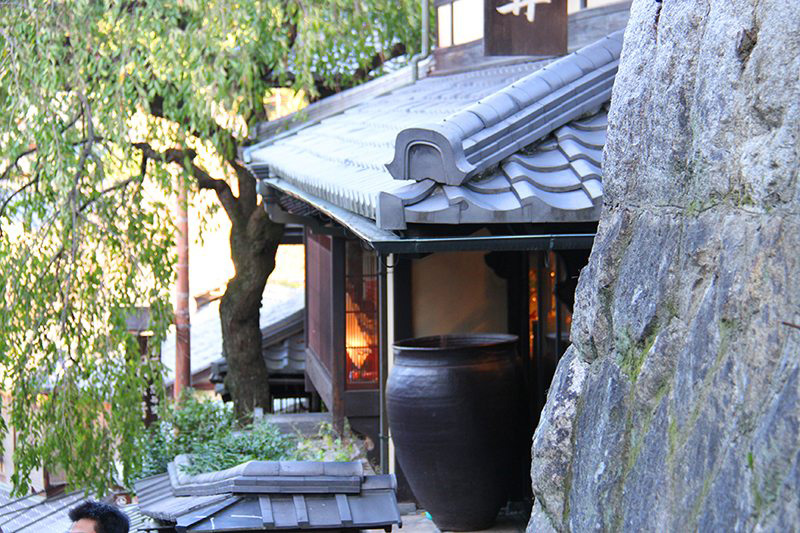
Momijiya Bekkan Kawa no Iori
Umegahata Takao, Ukyo-ku ,
This ryokan is set between the mountains on the bank of a river. Slightly outside of the city, it is what Japan is all about. Read about staying in a ryokan , a traditional Japanese inn. Read latest Trip Advisor Reviews and get the latest prices here.
APA Hotel Kyoto-Ekimae
806 Minami Fudodocho Shiokoji-sagaru, Shimogyo-ku,
The hotel is centrally located, and is very convenient for travellers, just a few blocks from Kyoto main train station. Read latest Trip Advisor Reviews and get the latest prices here.
Hotel Honnoji
522 Shimohonnoji Teramaemachi, Oike-kudaru, Teramachidori,
Great location, budget hotel/ryokan. Read latest Trip Advisor Reviews and get the latest prices here.
Centurion Cabin & Spa Kyoto
Great location as well, right on major street with tons of shopping and close to train station, with sauna and Jacuzzi. Read latest Trip Advisor Reviews and get the latest prices here.
There are 17 UNESCO World Heritage Sites in Kyoto. Kiyomizu-dera Temple is dramatic. Kinkaku-ji Temple, the famed “Golden Pavilion” is an unforgettable site. Ginkaku-ji Temple is called the “Silver Pavilion”. Tenryu-ji Temple is amazing temple in Arashiyama…and it goes on. See more here .
1. Temples and Architecture
There are 1,600 Zen, Shinto, and Buddhist temples and shrines, in Kyoto. The most impressive temples are in the Higashiyama district. Always crowded but always worth it, is the Kiyomizu Dera Temple. It would be remiss to miss Kinkakuji – The Golden Pavilion and Fushimi Inari-Taisha. It is lovely trek to the top of the hill to one of the most photographed shrines in Kyoto. Remember to bring a good camera to capture your experiences.
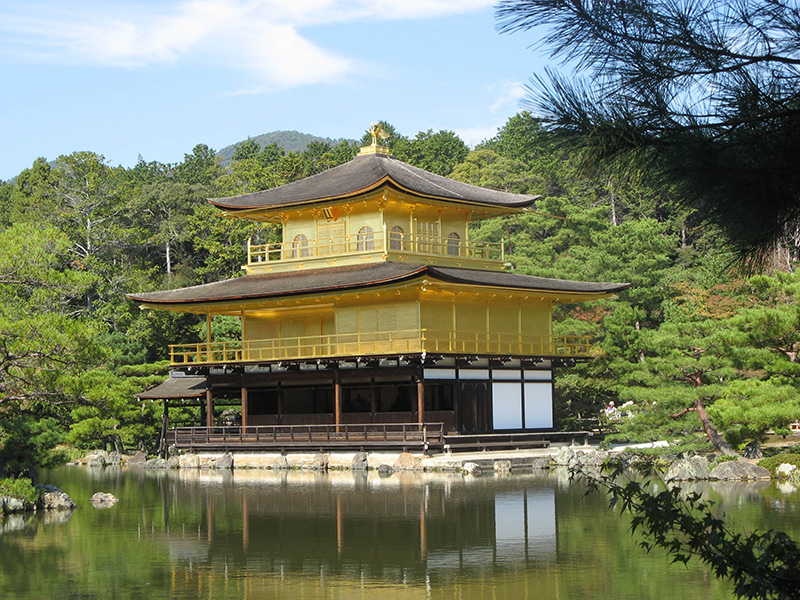
2. Gardens and Forests and Cherry Blossoms
In Arashiyama, you can find the famous Sagano Bamboo Forest, which is quite ethereal. Beautiful gardens are to be found everywhere in Kyoto. Kyoto is famous for its cherry blossoms, which are best seen in April. Some of the best spots to see this visual display are Philosopher’s Path , Maruyama Park , Arashiyama and Heian Shrine, but wherever you go, you will be astounded at the beauty of the Cherry Blossom season in Kyoto.
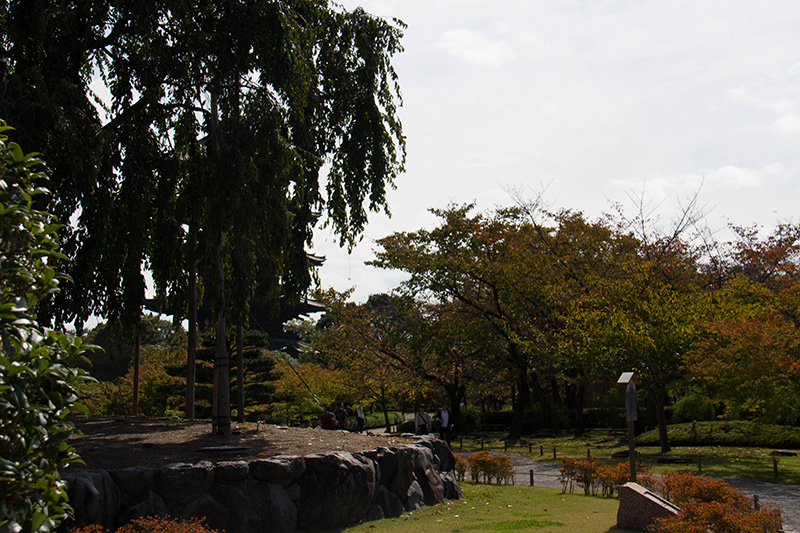
3. Sake and Food
You need to visit the sake brewery in Kyoto.In Japan, the preferred word for rice wine or sake is “Nihonshu,” which is one of the things we learned on our visit to the Gekkeikan Okura Sake Museum. Hear and experience the history of the traditional Japanese dish we know as sake.We had already learned how to drink sake correctly when we were in Nozawa Onsen, and if you want to know the correct etiquette, just read her. Address: 247 Minamihama-cho, Fushimi-ku, Kyoto City. Many people choose to do an Afternoon Izakaya Cooking Course , where you wear traditional buddhist monk clothing to embrace the cultural experienc and prepare 4-5 authentic dishes that are often eaten in Japanese homes and Izakaya restaurants
Food abounds everywhere in Kyoto, and the food belt of the city is the Nishiki Market, where the food tastes amazing, but better still, it looks amazing. Kyoto take great pride in everything that they do. Okonomiyake is a speciality in Kyoto, as it is in Nozawa Onsen where we ski

4. Festivals
This is all about the celebration of Japan’s former imperial capital, Kyoto. The Gion Matsuri is Kyoto’s biggest annual festival, and the Jidai Matsuri Festival is the festival of the ages , occurring every year on October 22nd. The festival features some 2500 people wearing costumes ranging from the 8th to the 19th-century parade. The parade goes from the Imperial Palace to the Heian-jingu shrine. Regardless of festivals, you need to visit Kyoto Imperial Palace.
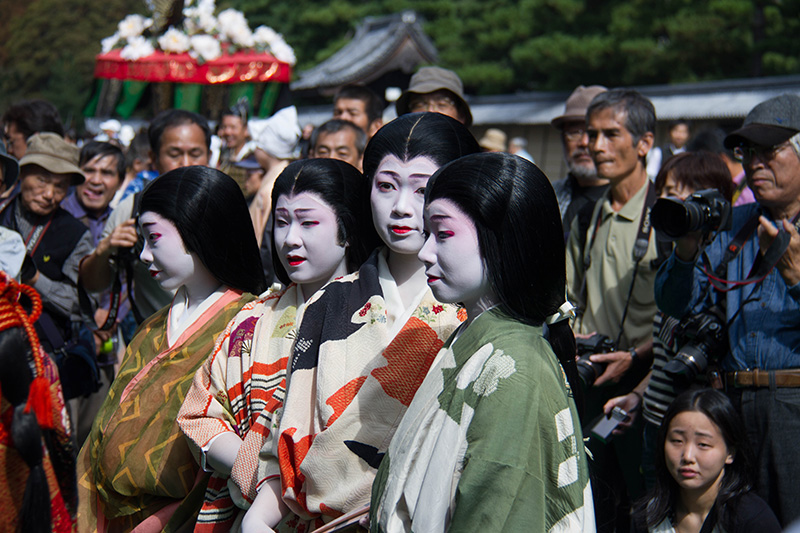
5. Exploring Gion
A must visit in Kyoto in the heart of Kyoto lies Gion, the city’s most famous entertainment district and the center of its traditional arts.Gion is Kyoto’s most famous geiko (geisha) district, and a very popular place with tourists for good reason.Make sure to explore the old streets and admire the traditional Japanese wooden houses, called machiya. Try a Kyoto Geisha Districts Tour or some Kyoto Backstreet Cycling
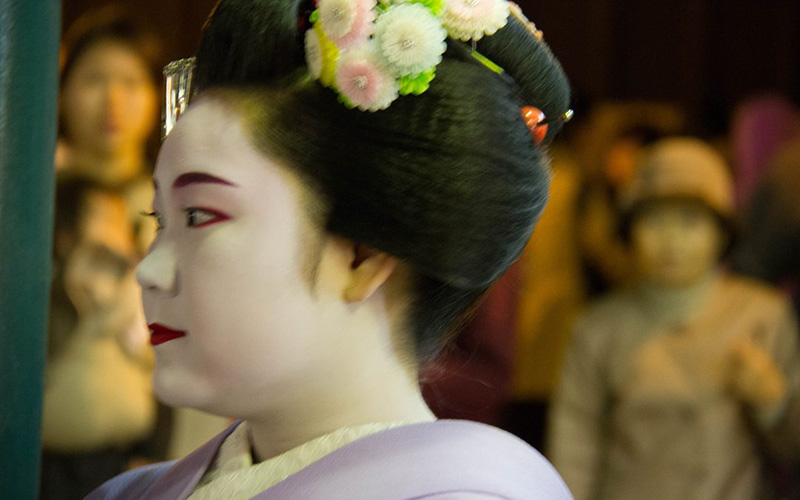
6. Kyoto at Night
Kyoto is enchanting at night, It is a safe city to walk around and capture the ethereal glow of the lights .
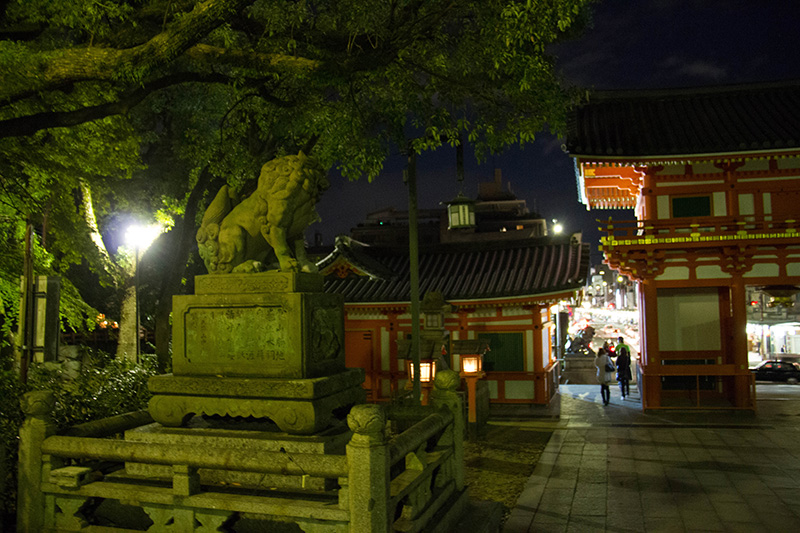
These are the Top 6 Reasons to Visit Kyoto, and there are many more.
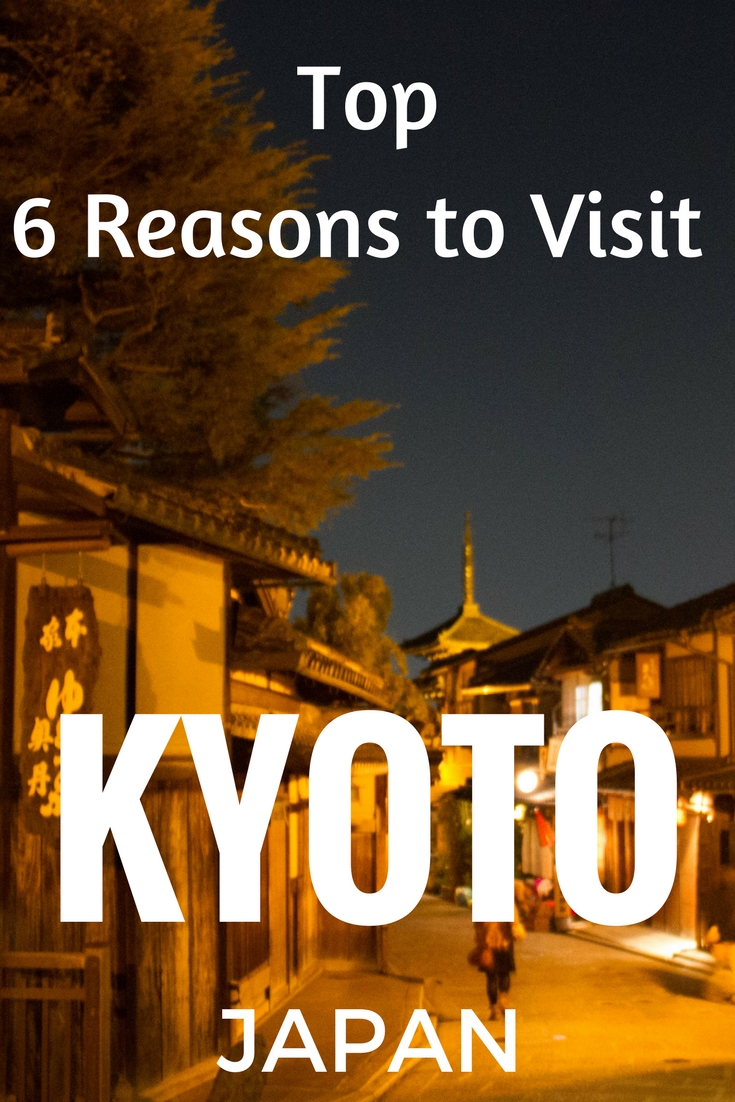
- Google Plus
Related posts:
No related posts.
‘Love it. I can’t wait to see Japan myself – Through Your Eyes!
you will love Japan. It is very different in the best possible way. We should meet there.
All such great reasons to visit! We absolutely loved Kyoto! We were only there for a day so would really love to return and explore more temples and gardens. Beautiful photos!
Kyoto is a beautiful city, and one we will return to.
The photos of the city are amazing. You have done a great job of making me want to visit Kyoto.
Kyoto is well worth visiting. Hope you get there soon.
Submit a Comment Cancel reply
Your email address will not be published. Required fields are marked *
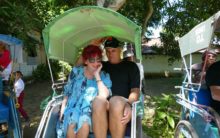
We love experiencing a country, city or place by connecting to its history, people and culture.
We know that today’s traveller seek experiences, because that is what we also do.
Pin It on Pinterest

5 Reasons Why You Should Visit Kyoto
Japan is a hugely popular tourist destination and for good reason. It’s a country of extreme natural beauty, intriguing cities, wonderful people, and amazing history and culture.
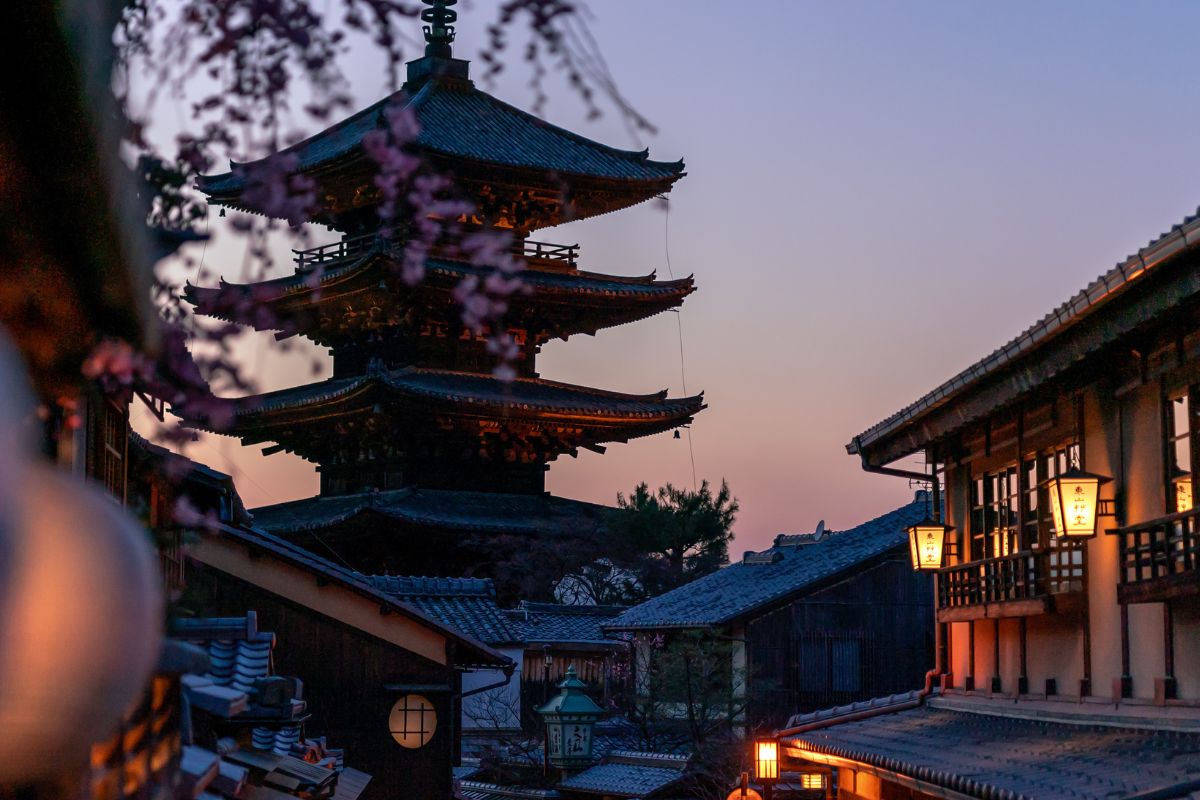
With so much to offer, planning the perfect trip can be difficult, especially when it comes to deciding where to go.
However, if you want a place that has the greatest concentration of history, culture, and natural beauty, you need to visit Kyoto (see also ‘ Does it snow in Kyoto ‘).
Once the capital of Japan , Kyoto is an ancient city found on the island of Honshu. It is most famous for its traditional Buddhist temples, lush gardens, stunning palaces, incredible wooden architecture, and Shinto shrines.
Today, we want to tell you why you should visit Kyoto. We’ll do this by giving you 5 awesome reasons.
If you need travel inspiration or simply want to learn more about Kyoto , be sure to stick around!
1. Kyoto’s UNESCO World Heritage Sites
Arguably the biggest reason anybody should visit Kyoto is for its UNESCO World Heritage Sites.
UNESCO World Heritage Sites are natural or cultural sites that offer “Outstanding Universal Value”. Sites that are considered to offer this value are then listed on the World Heritage list. This is done by the World Heritage Committee.
Cities all over the world consider themselves lucky if one or two of their sites are listed as UNESCO World Heritage Sites, so Kyoto’s 17 is quite remarkable. The fact Kyoto has 17 different UNESCO sites says a lot about this ancient city and makes it well worth a visit.
There are also another three sites known by the name Historic Monuments of Ancient Kyoto, but they sit in neighboring cities Otsu and Uji.
Byodo-in Temple, Nijo Castle, Kinkaku-ji, and Toji are just some of the sites you need to pay a visit to.
One of our favorites is Kiyomizu-dera Temple as it offers unparalleled views of the city and insight into Kyoto’s history . This temple is actually on the shortlist for the New 7 Wonders of the World.
2. Kyoto’s Landscape
Kyoto isn’t just famous for its UNESCO World Heritage Sites. It’s also famous for its impressive landscape, particularly within the Arashiyama district.
The Arashiyama district is the city’s second most popular sightseeing district. It is packed with shrines, temples, forests, and the mindblowing Bamboo Grove. In fact, the Bamboo Grove, also known as Sagano Bamboo Forest, is one of the most popular tourist attractions in all of Japan.
This quite magical bamboo forest is completely natural but looks totally alien and man-made. It features extremely large Moso Bamboo shoots, allowing only a few rays of sunlight to pass through. The forest has several different paths to follow, giving visitors a memorable walk.
Throughout Kyoto’s landscape, you should also keep your eyes open for some of its stunning cherry blossom trees, which display beautiful white and pink flowers throughout the year.
The best time to spot a blooming cherry blossom tree is from late March to mid-April (see also ‘ What Do Cherry Blossoms Smell Like ‘). If you’re lucky, you may even spot them in the first few weeks of May.
3. Fushimi Inari Shrine
No matter where you plan on visiting in Japan, you simply have to try your very best to visit Kyoto, even if it’s just to see the 10,000 gates of Fushimi Inari. Kyoto has plenty of unique and unbelievably beautiful landmarks, but Fushimi Inari Shrine has to be the best.
If you have social media and follow any travel-related profiles, you’ll almost certainly have seen this shrine before. Located in Kushimi-ku, Fushimi Inari is the head shrine that sits at the top of Mt. Inari.
While the shrine itself is pretty spectacular, sitting 233 meters above sea level, the trail up the mountain is what draws millions of tourists every year.
Fushimi Inari is famous for the thousands of vermilion torii gates that direct visitors up the mountain. Unbelievably, there are 10,000 of these vibrant orange gates. Together, they form a unique tunnel-like path that leads to a sacred forest and the shrine above.
4. Downtown Shopping
One of the things Japan is famous for is its shopping scene. While Tokyo might be the more popular place to shop, Kyoto has a fantastic array of shopping opportunities in its downtown.
In fact, a lot of visitors end up bringing an extra bag with them just so they can fill it with interesting items.
In Kyoto’s downtown and shopping district, you’ll find a wide range of interesting and incredibly cute things to buy and taste. The most popular street to visit is called Kawaramachi.

Aside from shops selling traditional Japanese items and souvenirs, you’ll also find an abundance of tasty places to eat and drink.
One popular pastime for locals and tourists alike is sake tasting . This gives you the chance to blow off a bit of steam and interact with the friendly locals.
Some of the souvenirs to look out for include hand-made lanterns, teddy bears, and plush toys.
5. Higashiyama
Finally, if the other reasons haven’t already been enough to tempt you into visiting Kyoto, hopefully, Higashiyama will.
Found along the slopes of Kyoto’s eastern mountains, Higashiyama is a district that takes tourists back in time. Famous for its gorgeous wooden architecture, picturesque alleyways, and merchant shops, Higashiyama preserves feudal-era Japan.
If you want to step back in time to see and feel ancient Japan, this is the place to go. The wooden-built historical quarter is packed with tea houses, restaurants, pottery stores, and lantern-lit Shinto sites.
The area is also home to some of the city’s most iconic attractions and landmarks. What makes this part of Kyoto even more special is the wonderful color provided by cherry blossom trees that line the streets and alleyways.
If you’re lucky enough to visit Higashiyama, we strongly advise heading there for sunrise or sunset. Both are magical and give the district an even better sense of tranquility and beauty.
Final Thoughts
There you have it, 5 reasons why you should visit Kyoto . Kyoto is a magical city full of intrigue, beauty, and excitement. While it may not be the first city on everyone’s Japan bucket list, it is definitely one you should reserve time for when visiting the country.
Now you’ve made your way through this post, we hope we’ve given you the inspiration you need to plan an awesome trip to Kyoto. If we have, why not plan your trip around the 5 things we have looked at, we’re sure you won’t be left disappointed.
Don’t forget to take an extra bag for all those souvenirs you’ll want to take home.
- Recent Posts
- 16 Best Websites To Watch Japanese Movies With English Subtitles - May 11, 2023
- Is ZIPAIR The Best Airline For Traveling To Japan? - May 11, 2023
- Ryu Murakami Vs Haruki Murakami – Which One Should You Read? - May 11, 2023
Related Posts:


20 Reasons Why You Should Visit Kyoto at Least Once in Your Lifetime
Home » 20 Reasons Why You Should Visit Kyoto at Least Once in Your Lifetime
If you’ve never been to Kyoto, Japan, you’re truly missing out. A city steeped in history and culture, Kyoto is one of the most popular destinations for visitors from around the world. With its stunning temples, delicious cuisine, and breathtaking gardens, it’s easy to see why so many people choose to visit.
In this blog post, we’ll be exploring 20 of the top tourist attractions in Kyoto, giving you plenty of reasons why you should add this beautiful city to your travel bucket list.
✅ Make sure you’ll see the entire collection in Framey App , including addresses, opening hours, and contact information!
Table of Contents
The central part of Kyoto City
1. kyoto imperial palace & kyoto gyoen – visit kyoto.

Kyoto Imperial Palace
One of the most popular tourist attractions in Kyoto is the Kyoto Imperial Palace and its accompanying Kyoto Gyoen. The palace served as the residence of the Japanese emperor and his court until 1868 when it was moved to Tokyo. It’s a great place to explore the traditional architecture of Japan while also marveling at the beautiful gardens surrounding the palace grounds. The lush Kyoto Gyoen garden is a peaceful sanctuary in the middle of the city, offering visitors a chance to get away from the hustle and bustle of modern life. In addition to taking in the breathtaking views, visitors can enjoy various activities like cycling around the park, having a picnic, or attending one of the events held at the palace throughout the year.
2. Kyoto Station – Visit Kyoto

Kyoto Station
Kyoto Station is a major railway station located in the city of Kyoto, Japan. It serves as an important hub for both JR West and Kintetsu Railway, with most regional and long-distance trains stopping at the station. With a wide array of shops, restaurants, and attractions around the station, it’s no surprise that Kyoto Station is one of the most visited places in the city.
The main attraction within Kyoto Station is the Isetan Department Store, which features seven floors of high-end retail outlets and restaurants. In addition to shopping and dining, the station also houses a movie theater, an art gallery, and a Shinto shrine. The south side of the station is where visitors can catch buses to nearby sightseeing spots such as Arashiyama and Kinkakuji.
With its unique architecture and convenient location, Kyoto Station is an iconic landmark in the city and an essential part of any visit to Kyoto. Make sure to make a stop here during your next trip!
3. Nijo Castle – Visit Kyoto

Nijo Castle
Nijo Castle is one of Kyoto’s most popular tourist attractions and the home of the first shogun, Tokugawa Ieyasu. This castle was built in 1603 and is a UNESCO World Heritage Site. The impressive Ninomaru Palace inside the castle walls is decorated with stunning gold-leaf covered walls, ornate sliding doors, and tatami-mat rooms. The Nightingale Floors are another highlight as they were designed to squeak like a bird when someone steps on them to alert those inside the palace of intruders. Visitors can also enjoy strolling around the beautiful Ninomaru Garden and admiring the moat and stone walls surrounding the castle.
4. Nishiki Market

Nishiki Market
Nishiki Market, located in the heart of Kyoto, is a bustling market that has been around since the 17th century. It is known as “Kyoto’s Kitchen” and is one of the most popular tourist attractions in the city. The market spans over 400 meters and consists of more than 120 different shops and stalls. At Nishiki Market, you can find an amazing selection of fresh seafood, vegetables, pickles, traditional Japanese sweets, and local specialties. The variety of food available here is vast, so there’s something for everyone!
You’ll also find a great selection of traditional Japanese souvenirs, including pottery, tea sets, fans, and kimonos. The atmosphere at Nishiki Market is lively and vibrant with people of all ages milling around. As you wander through the market, take some time to sample the tasty treats on offer and explore the unique sights and sounds of this fascinating part of Kyoto.
North part of Kyoto City – Visit Kyoto
5. kinkakuji temple .

Kinkakuji Temple
Kinkakuji Temple, also known as the Golden Pavilion, is one of the most popular tourist attractions in Kyoto. It is an iconic symbol of the city and a UNESCO World Heritage Site. The temple is located in the northeast part of Kyoto and stands majestically on a lake surrounded by lush gardens.
The temple was originally built in 1397 as a retirement villa for the shogun Ashikaga Yoshimitsu. Later, it was converted into a Zen temple and is now maintained by the Zen Buddhist sect Rinzai-shu. The main hall of Kinkakuji is covered entirely in gold leaf, giving it its famous name “Golden Pavilion”. It is a beautiful sight to behold, both during the day and at night when it is illuminated.
Visitors can take a stroll around the temple grounds or take a boat ride on the lake to get a different perspective. There are also shops nearby that sell souvenirs and snacks. Kinkakuji is a must-see destination in Kyoto and is well worth visiting!
6. Kurama Temple and Kifune Shrine – Visit Kyoto

Kurama Temple
Kurama Temple is a secluded shrine located in the hills of Kyoto, about an hour away from the city center. The shrine was founded in 770 AD, and it is one of the oldest shrines in Kyoto. This shrine is best known for its vibrant red torii gates that line the entrance to the shrine grounds, making it a popular spot for photographers. Inside the temple grounds, visitors will find several historical buildings, a peaceful pond, and a large bell tower.
Kifune Shrine is another popular site in Kyoto and is dedicated to the god of water. It is believed that this shrine has been around since 717 AD, but it was only made public in 1751. The grounds of this shrine are stunning and visitors can explore a variety of monuments, including the main hall with its bright red roofs and a museum dedicated to the history of Kifune. The most famous feature of this shrine is the large “Kifune no Torii” gate that stands on the edge of a nearby mountain. Visitors can also enjoy traditional Japanese cuisine at the
7. Ryoanji Temple – Visit Kyoto

Ryoanji Temple
Ryoanji Temple is one of the most iconic sites in Kyoto. The temple was built in the late 15th century and is a UNESCO World Heritage Site. It is renowned for its Zen-style garden, which features 15 stones arranged in five distinct groups. The stones are placed so that they are not visible from any single viewpoint, creating a sense of mystery and awe as visitors stroll around the garden. The beauty and tranquility of Ryoanji Temple make it a popular spot for both locals and tourists alike. Make sure to bring your camera to capture the stunning view of the garden and pond, as well as to enjoy the unique atmosphere of the temple grounds.
South part of Kyoto City – Visit Kyoto
8. tofukuji temple .

Tofukuji Temple
Tofukuji Temple is one of the oldest temples in Kyoto and one of the most popular tourist attractions. It was founded in 1236 by a priest from Nara and consists of several impressive buildings and gardens. The temple is home to the main hall and Sanmon Gate, both of which are national treasures. The temple grounds offer wonderful views of the cityscape, and visitors can take a stroll through its beautiful gardens. Tofukuji Temple also houses several statues and artifacts, making it a must-visit spot for any traveler interested in learning more about Japan’s history and culture. Visitors should also note that there are guided tours available at the temple, allowing them to learn more about the site and its rich history.
9. Fushimi Inari Shrine – Visit Kyoto

Fushimi Inari Shrine
Fushimi Inari Shrine is one of the most popular tourist attractions in Kyoto and a must-visit for anyone interested in Japanese culture and history. The shrine is dedicated to the god of rice and sake and consists of over 10,000 red torii gates that form a tunnel leading up to the main temple complex. It is believed that walking through the tunnel of torii gates brings good luck and fortune. The view from the top of the mountain is said to be quite breathtaking, as it provides an excellent view of Kyoto’s cityscape. Visitors can also enjoy exploring the hundreds of small shrines, paths, and trails located on the grounds of Fushimi Inari Shrine.
10. Gekkeikan Okura Sake Museum – Visit Kyoto

Gekkeikan Okura Sake Museum
Located in the heart of Kyoto, Gekkeikan Okura Sake Museum is one of the most popular tourist attractions in the city. As the birthplace of sake, Japan is filled with breweries, but this museum is unique in that it allows visitors to learn about and experience the art of sake-making firsthand. Upon entering, visitors can explore the history of sake through artifacts, photographs, and other materials. In addition, visitors can view a real-time sake brewing demonstration, taste samples of different types of sake, and purchase souvenirs from the gift shop. Whether you’re a seasoned sake connoisseur or just looking for an interesting cultural experience, Gekkeikan Okura Sake Museum is a must-see for anyone visiting Kyoto.
Higashiyama Area – Visit Kyoto
11. sanjusangendo temple.

Sanjusangendo Temple
The Sanjusangendo Temple, also known as Rengeo-in, is an impressive Buddhist temple in Kyoto. Located just a short walk from the Kyoto Imperial Palace, this temple has been standing since 1164 and is home to 1001 statues of the goddess Kannon, each standing at a towering height of 33ft. The temple also houses the longest wooden structure in Japan at 390ft. Visitors can take in the beauty and solemn atmosphere of the temple, with its soaring columns and delicate golden sculptures. The main hall of the temple is said to be one of the most photographed structures in all of Japan, with its hundreds of statues looking out onto the courtyard. Even if you don’t have time to visit the other temples on this list, make sure to include the Sanjusangendo Temple in your itinerary!
12. Kiyomizudera Temple

Kiyomizudera Temple
Kiyomizudera Temple is a historic Buddhist temple in Kyoto, Japan. It was built in 798 AD and is considered one of the most important temples in Japan. The temple is located on the eastern side of the city, high above the Otowa River valley, offering breathtaking views of Kyoto below. Visitors to the temple can explore its many buildings and structures, including its impressive main hall, which is supported by 139 pillars.
At Kiyomizudera Temple, you can visit the shrine to the deity of mercy Kannon and observe the ritual of throwing coins from the veranda into the river below for good luck. There are also three sacred waterfalls – Otowa no Taki – located on the premises, and visitors can take part in the ritual of drinking from these falls for good health, longevity, and success.
The temple also hosts many annual events, such as a famous cherry blossom viewing event, during which visitors can view the hundreds of beautiful cherry trees that line the Otowa River valley. Whether you’re looking for a peaceful respite from the hustle and bustle of modern life or an opportunity to connect with ancient Japanese traditions, Kiyomizudera Temple is a must-see attraction in Kyoto.
13. Gion District – Visit Kyoto

Gion District
The Gion District of Kyoto is one of the most iconic areas of the city. Known as an old geisha district, it’s a great place to explore and soak in the atmosphere. During the day, visitors can stroll through the streets and admire the traditional wooden buildings and stores that line the roads. At night, they can witness a more lively side of Kyoto when the geisha come out to entertain in their brightly colored kimonos. In addition, Gion is home to some of the city’s best restaurants, teahouses, and theaters. Whether you’re looking to immerse yourself in culture or just take a stroll through one of Japan’s oldest neighborhoods, Gion District is the perfect place to explore.
Arashiyama Area – Visit Kyoto
14. bamboo groves.

Bamboo Groves
If you’re looking for a tranquil escape from the hustle and bustle of the city, the Bamboo Groves in Kyoto is the perfect spot to visit. These lush groves are located just outside the city center and are a great way to reconnect with nature and relax. The towering bamboo trees create a calming atmosphere, and you can spend hours just walking through the paths and admiring their beauty. You can also take a boat ride down the Hozu River which runs through the groves and marvel at the view from a different perspective. No matter how you choose to experience the Bamboo Groves, it is sure to be an unforgettable experience.
15. Arashiyama Monkey Park Iwatayama

Arashiyama Monkey Park Iwatayama
Located on the western outskirts of Kyoto, Arashiyama Monkey Park Iwatayama is a must-visit attraction for animal lovers and nature enthusiasts alike. The park is home to over 170 Japanese macaques, which roam freely around its spacious grounds. Visitors can observe the primates in their natural habitat and may even feed them some snacks. The park has observation platforms that are set amidst a serene forest where visitors can watch the monkeys play and interact with each other. Guided tours are also available for those who wish to learn more about these animals and their behavior.
16. Togetsukyo Bridge – Visit Kyoto

Arashiyama, Kyoto, Japan at Togetsukyo Bridge during the annual autumn light up.
Togetsukyo Bridge is one of the most iconic landmarks in Kyoto, located in the Arashiyama district. The bridge, whose name translates to “moon crossing,” was built in the early Edo period, and stretches over the Katsura River. It is a popular place for visitors to take photos and admire the stunning landscape. During the cherry blossom season, people come from far and wide to take in the incredible sight of the blossoms framing the river below. The bridge also features in several classic Japanese films, adding to its allure. Whether you come for the scenery or to explore its fascinating history, Togetsukyo Bridge is an essential part of any visit to Kyoto.
Hidden parts of Kyoto – Visit Kyoto

Uji is a city located to the south of Kyoto, and it is well known for its high-quality tea. Uji is home to some of the most renowned tea houses in Japan, where you can sample different varieties of tea. The city is also home to some of Kyoto’s most important cultural sites, such as Byodo-in Temple, which is a UNESCO World Heritage Site. The temple is famous for its Phoenix Hall, and it’s worth a visit if you’re interested in traditional Japanese architecture. Uji is also home to several historical sites, such as Ujigami Shrine, which is one of the oldest Shinto shrines in Japan. If you’re looking for a place to relax and enjoy some tea, Uji is the perfect destination.

Located on the Japan Sea coast in the southwest corner of Kyoto Prefecture, Ine is a small fishing town with a unique charm. Home to a distinctive style of traditional architecture known as ‘funaya’, Ine is renowned for its beautiful views of Umino-Oike, a vast sea of boats. A funaya is a two- or three-story wooden house built on stilts over the sea, and they are scattered along the coast of the bay. Take a boat tour around the bay and observe the numerous funny, or even stay overnight in one! Ine is also known for its fresh seafood, particularly the local delicacy ‘buro-su’, salted and grilled Buri (yellowtail). Visit Ine for an unforgettable experience of a true fishing village and its delightful scenery!
19. Amanohashidate – Visit Kyoto

Amanohashidate
Amanohashidate, also known as the Bridge to Heaven, is one of the most popular tourist attractions in Kyoto. The breathtaking view from this pine-covered sandbar is something you can’t miss! Take a romantic stroll across the bridge that connects the two shores of this picturesque sandbar, while taking in the breathtaking views of Miyazu Bay and its surrounding landscape. The breathtaking view has been said to be even more beautiful than the famous view of Matsushima in Miyagi Prefecture. In addition, the natural beauty of the sandy beach provides an ideal spot for a refreshing dip in the cool ocean waters. No matter how you choose to enjoy Amanohashidate, it will surely be a memorable experience!
Mysterious spots of Kyoto – Visit Kyoto
20. yokai street.

Yokai Street
Yokai Street, otherwise known as the “Ghost Street” of Kyoto, is one of the most popular tourist attractions in the city. The street is lined with traditional shops and restaurants, offering visitors a unique glimpse into Japan’s past. The street is home to several of Kyoto’s most beloved yokai (ghosts or supernatural creatures) and is often visited by those who wish to catch a glimpse of these mythical creatures. Visitors can find items related to this yokai, such as hand-painted scrolls and souvenirs, at many of the shops. Whether you’re looking for some Japanese souvenirs or simply want to experience a bit of traditional Japanese culture, Yokai Street is a great place to visit!
Don’t you think these places are exciting?
If yes, plan a trip around the world, head to your favorite destination, and spend some wonderful time with your family or friends!
There’s a whole world out there for you to explore!
If you’re searching for more amazing and unique travel inspirations, don’t forget to check Framey App (available on Google Play and Apple Store) and start planning your next adventure Around the World!
Mirela Zota
Previous post the 15 most beautiful mosques in istanbul that will take your breath away, next post top 15 things to do in marmaris, turkey - 2023, copyright © 2023.
Framey Technologies Limited
[email protected]
Transform dream photos into memorable trips

5 Reasons Why You Should Visit Kyoto
- Post author: Beti
- Post published: June 15, 2021
- Post category: Japan
- Post comments: 0 Comments
You plan your trip to Japan. The only thing you know is that you land in Tokyo. But what’s next? You’ve heard about Kyoto but why should you visit it? I’ve been living in Tokyo for a few months and it was my first trip to Kyoto. I was curious as everyone who I spoke to told me only good things about it. Everyone loves Kyoto! Now I know why. No trip to Japan is complete without going to Kyoto. One visit might not be even enough.
What's in this blog post?
REASONS WHY YOU SHOULD VISIT KYOTO
#1. there is no other city like kyoto, unique character.
Kyoto is very unique. There isn’t a similar city anywhere in the world. It’s not about its beauty as there are more beautiful cities in the world. After 8 years of living and travelling in Asia, I still think nothing can beat European cities. It’s about being different. European capitals are stunning but comparable. Rome and Paris cathedrals, cute little cobbled alleys and magnificent squares are a bit similar, aren’t they? Many Asian cities are also alike. Most of them are chaotic. Whereas Singapore reminds of HK or even London, due to its prevailing Chinese culture and British influences.
But Kyoto is Kyoto. Let me explain.
Roughly 2000 temples and shrines
The uniqueness of Japanese culture definitely makes a difference. But not only, as then Kyoto would be similar to other Japanese cities and it is definetely not. Over 1600 Buddhist temples and 400 Shinto shrines (2 main religions in Japan) scattered around the city make you feel like being in an open-air museum extended over the city.
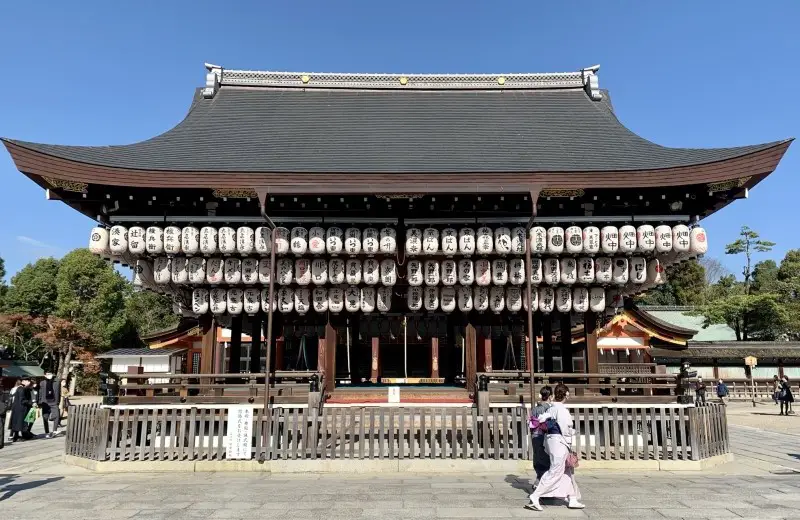
Kimono culture
There is a very different feeling from walking through modern cities of Tokyo or Osaka, where you won’t spot easily Japanese people wearing traditional kimonos in the streets. Nowadays kimonos are usually only worn during festivals and to mark important occasions. However in Kyoto, many domestic tourists as well as locals still wear them while visiting temples, shrines and historical districts. There are plenty of kimono rentals so you might want to give it a go. Where else, if not in Kyoto?
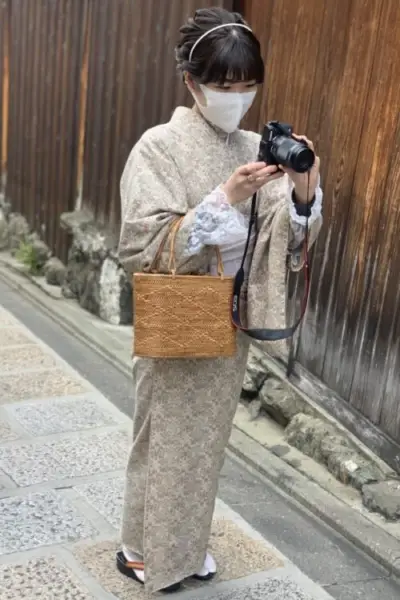
Land of mysterious geishas
Kyoto is Japan’s capital of geisha. The chances to have a glimpse into this fascinating world of the iconic Japanese female entertainers with the white-painted faces, traditional hairstyles and fabulous kimonos are the highest in Kyoto. Most of them live and work in Kyoto’s historical district Gion. If you are lucky enough, you might spot a geisha walking in the street. However, it is not so easy these days as there are not many geisha even in Kyoto. You can try to arrange a meeting with a geisha. If you happen to be in Kyoto in spring time, you can attend their public dance (odori). Another option is to attend a tea ceremony or a theater performance at Kyoto Gion Corner. Geishas remain a mystery even to many Japanese, so don’t be disappointed if you don’t see any.
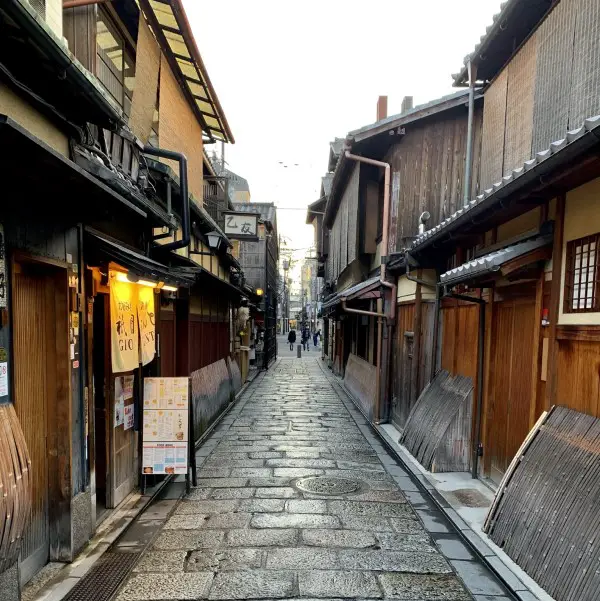
Do you still think Kyoto can be compared to any other place in the world? Its unique character is the first reason why you should visit Kyoto.
#2. Kyoto is a historical and cultural capital of Japan
Capital of japan for over 1000 years.
All over the world the capital cities are the cultural and historical epicentres so why is it different in Japan? In short, because in Japan normal rules usually do not apply.:) Jokes apart, Kyoto is one of the oldest cities in Japan. It was Japan’s capital for over 1000 years, from its inception in 794 until 1868 when the emperors moved to Tokyo.
Fortunately, the city was also spared from massive destruction during World War II. As a result, its cultural heritage has been preserved. Whereas Tokyo has been vastly devastated by the 1923 earthquake and World War II bombings. Not to mention, Tokyo’s history doesn’t go back to ancient times. Until the XVII century it was just a fishing village.
Old traditions are still alive
If you want to learn about the culture and history of Japan you should definitely visit Kyoto. Apart from visiting numerous impressive landmarks and temples, a simple stroll through one of the historical districts with typical narrow cobblestone streets lined with little traditional shops is like taking a step back in time. Getting lost in the picturesque alleys and admiring Japanese wooden architecture was one of my favourite parts of Kyoto’s trip.
Kyoto is where the Japanese old traditions are still alive. Colorful kimonos, mysterious geishas, tea ceremonies in Zen gardens, hand pulled rickshaw rides – you can still feel the atmosphere of old Japan. If you are only interested in experiencing the craziness of Japan’s nightlife, fashion and modern culture, you can just stay in Tokyo. But if you want to see traditional Japan, you should visit Kyoto.
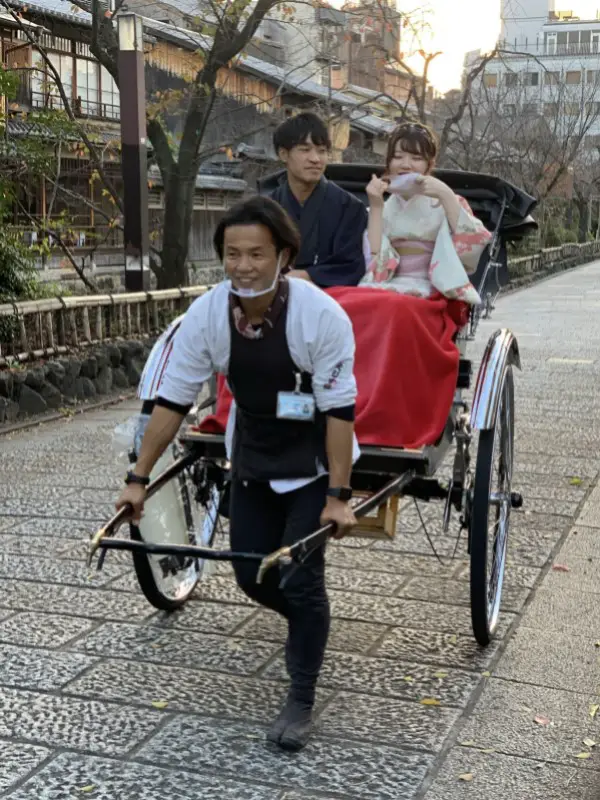
#3. Japan’s number 1 tourist attraction is in Kyoto.
Famous red wooden gates.
You are probably familiar with one of the most popular images of Japan – the endless row of red wooden gates. This traditional Japanese gate, usually located at the entrance of the Shinto shrine, is called torii. The ancient religion of Shinto found only in Japan is based on belief in kami deities, which can take forms of: things (e.g. stone), forces of nature (e.g. rain), concepts (e.g. fertility), animals (e.g. fox) or ancestors. Torii’s symbolic meaning is to divide two worlds: mundane and sacred.
Fushimi Inari-Taisha shrine, located only 20 minutes by train from the heart of historical Kyoto – Gion, is famous for its incredible torii. There are over a thousand of them! What makes it even more special, each torii has been donated by an individual or a company. The patron of the shrine – the god of rice Inari – ensure the prosperity in business according to Japanese beliefs.
I’m not surprised it’s Japan’s number 1 attraction, as it’s been a highlight of my Kyoto trip as well. The shrine is situated at the foot of the sacred mountain Inari (233m). The torii are arranged in a loop of around 4 km spanning across mystical, dense forest. This incredible shrine is definitely a good reason to visit Kyoto.

Visiting Fushimi Inari-Taisha shrine
In addition, visiting this shrine and its famous gates means being in contact with nature. It is a great change after being surrounded by crowds of people and buildings in other parts of Kyoto. Of course, there are many people also here, especially at the beginning of the loop. However, if you walk around the mountain (it takes a couple of hours), which I highly recommend, you will be able to find peaceful spots. Howevere if you don’t have enough time, seeing just part of the loop is also worth it. The shrine is open 24h. It’s nicely lit at night, so I recommend visiting it in the late afternoon. It’s usually less crowded and therefore, the atmosphere of the forest is even more magical.
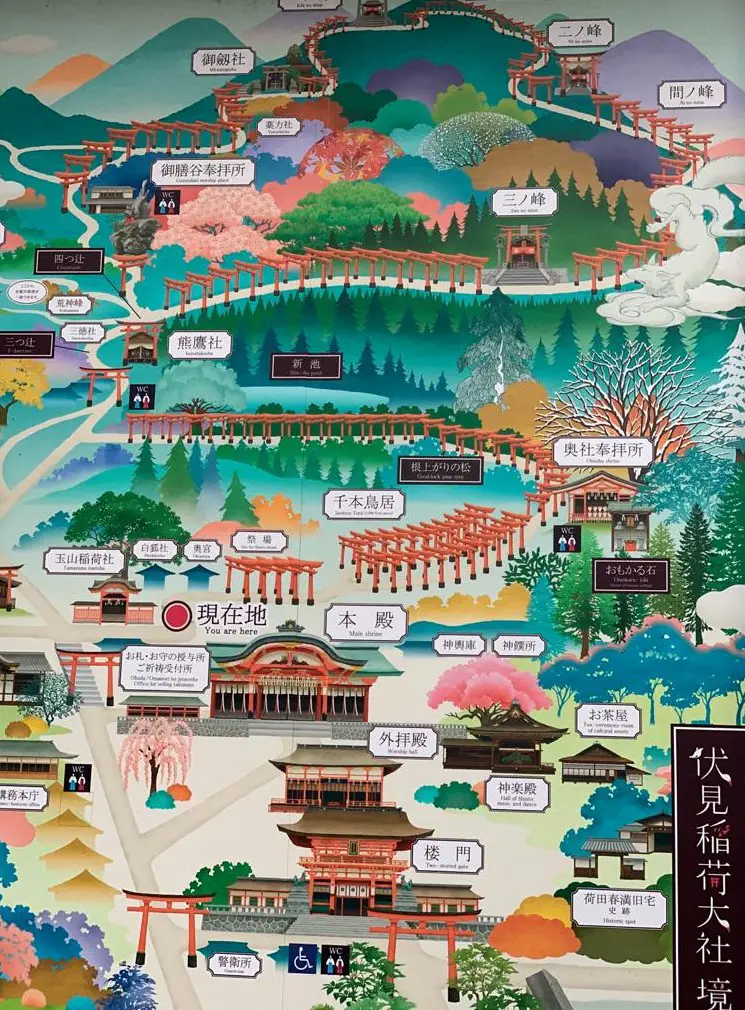
#4. Arashiyama and its famous bamboo forest
The main attraction of Arashiyama, which is one of the neighbourhoods in Kyoto, is the bamboo forest. Walking through this incredible tall bamboo grove is like being in another world. The rustling sound of the bamboo moving with the wind makes the experience even more unique. However, it is not the only attraction here, so it’s good to have a full day in Arashiyama. There are also, guess what, many temples! 🙂
The bamboo grove tips
There are two important things to make your trip fun. Firstly, try to be in the bamboo forest as early in the morning. It gets very crowded and it loses much of its charm later in the day. You might not like it that much anymore. Secondly, rent a bicycle. The area is quite big and interesting, so you will be able to cover more.

The main buddhist temple – Tenryū-ji – is situated at the edge of the bamboo grove, so it’s a must-see when visiting the bamboo forest. It is one of the UNESCO World Heritage Sites in Kyoto. For me the most attractive part of the temple grounds were the garden and the paths with its backdrop of the Arashiyama mountains.
Iconic Japanese coffee shop
After an early morning sightseeing you probably will need a cup of coffee. There is a great spot to grab one. %Arabica is an iconic Japanese coffee shop born in Kyoto. The coffee shop in Arashiyama has a fantastic location! It overlooks the river, wooden Togetsukyo Bridge (its history goes back to the VIII century) and lush slopes of Arashiyama mountains.

Plenty of interesting temples
There are plenty of temples in Arashiyama, so it’s up to you which one and how many you want to see. I’ll recommend just two. The first one is Jojakkoji Temple, stunning especially during autumn. Walking through little paths on the temple grounds among colorful maple trees is really beautiful. The views over Kyoto are also nice.

To get to the second temple – Otagi Nenbutsuji, founded recently in 1980s, you need to pass through a street full of old cute houses. That is why I really hope you’ll get that far. The temple is famous for its 1200 statues of rakan, followers of Buddhism, carved from stones and covered with moss. Each of the face has a different expression, which is usually very funny. I could spend hours just looking at them.
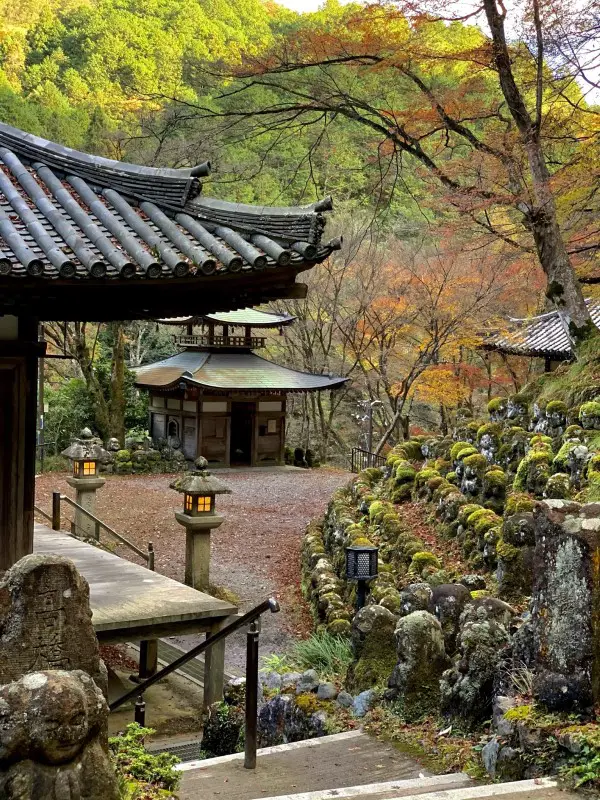
In addition, you can also visit Iwatayama Monkey Park to meet wild snow monkeys. I haven’t visited it myself as after my monkey encounters in other Asian countries I’m not their biggest fan. However, if you have never seen them in their natural habitat or are simply tired of temples, you might want to give it a try.
Arashiyama bamboo forest is undoubtedly one of the reasons why you should visit Kyoto. There is so much to explore in the area! In case you don’t have enough time, although I really hope you do, you can see a smaller bamboo grove in the Kodaiji Temple grounds in the centrally located historical district of Higashiyama.
#5. Japanese tea ceremony and matcha flavoured sweets
The oldest and one of the most famous regions for tea growing in Japan – the Uji region is situated only 20 minutes by train from Kyoto station. Back in the old days the Japanese traditional tea ceremony was a popular pastime among Kyoto’s aristocracy. Therefore, if you want to experience it during your trip to Japan, the traditional wooden tea houses in Kyoto are probably the best place for it.
Unwind with the tea
Before my trip to Kyoto I didn’t know much about tea ceremonies. But once I learnt about its purpose, I’ve loved it immediately! The idea is to relax and unwind, slow down and just live in the moment. The silent observation of the tea preparation slow process is a beautiful practice of mindfulness. You should concentrate on each move of the tea master. Admiring the simple beauty of tea utensils should help you to fully enjoy the experience and the distinctive taste of the tea.
Kyoto is a tea paradise. There are plenty of tea ceremonies conducted in English aimed at bringing foreigners closer to this interesting aspect of cultural life in Japan. I’ve tried the Camellia Tea Ceremony conveniently situated in the heart of the historical district of Ninen-zaka in one of the old houses. I liked it a lot.
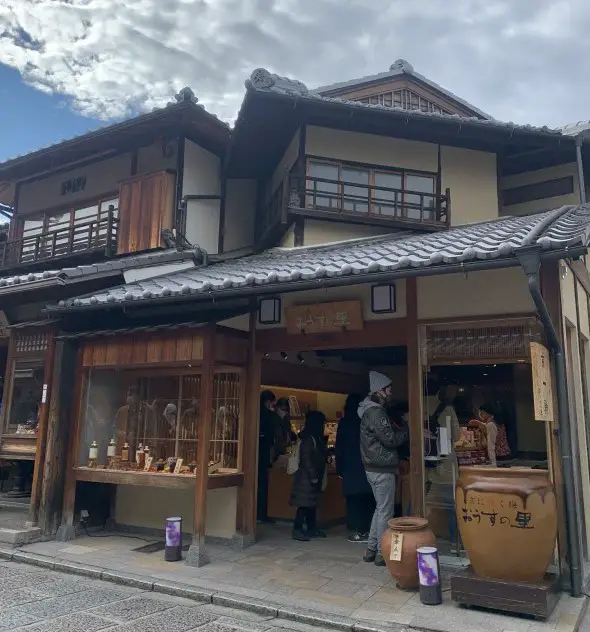
Sweet tooth paradise
Apart from drinking tea, Kyoto is a great spot for trying famous matcha flavoured sweets. You don’t need to look far, matcha icecreams, crispy cookies or chocolate are available at every corner of the city. Apart from the icecreams I can’t recommend any particular Japanese dessert myself. Although I love drinking green tea and matcha, I don’t appreciate green tea desserts. I probably haven’t lived long enough in Japan. But definitely I can recommend one of the most famous traditional tea houses in Japan – Gion Tsujiri . This is where I bought many kinds of delicious green tea. This chain has a long history and its matcha-flavoured sweets are supposed to be yammy as well.
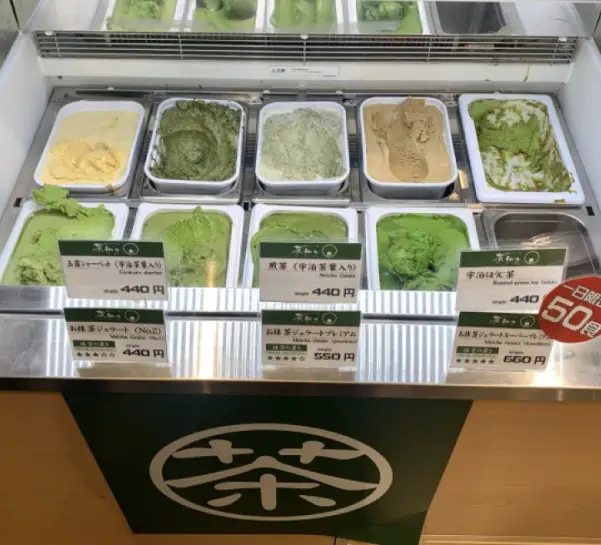
If you still think Kyoto is all about temples, which you don’t enjoy that much, you should know it’s not entirely true. Yes, there are plenty of temples and shrines. Howevere, their beautiful location makes them more interesting than, for example, visiting churches in Europe. Most of the temples are surrounded by beautiful nature and spectacular Japanese gardens. They are usually a great spot to relax.
To sum up, Japanese old traditions are stronger in Kyoto than anywhere else in Japan. If you want to experience real Japan you should visit Kyoto.
WHERE TO STAY IN KYOTO?
There is no better place to stay in the cultural capital of Japan – Kyoto, than a ryokan – a traditional Japanese guesthouse with tatami mats on the floor, and futon beddings.
If you want to try a real Japanese experience, it’s simply a must. Despite the simple concept, some of the ryokans are very luxurious and expensive. Besides, Japan in general is not cheap when it comes to accommodation.
But… There is good news as well! Gion Ryokan @-Beh situated in Gion, the historical heart of Kyoto and the most convenient location to stay, is both very nice and affordable. I stayed there for 5 nights and loved it. It has typical Japanese decor, rooms are spacious and clean. The location is superb while the price affordable. C heck it out!

KYOTO FOOD GUIDE
There are tons of food options in Kyoto. Kaiseki – a traditional multi-course Japanese dinner is probably the most famous meal you can get. But if you do not necessarily want to spend 100 USD for dinner (I didn’t), I highly recommend a simple, but very typical Kyoto dish – nishin soba.
Although Kyoto is surrounded by mountains, nishin soba – a warm noodle soup with a herring is very popular here. Historically people did not have access to fresh seafood in Kyoto, therefore fish was often preserved to make it last longer. Herring is cooked in soy sauce and sugar. I’ve tried it a couple of times and here are my recommendations:
Matsuba – This is where in 1882 nishin soba dish was invented. It’s a must when visiting Kyoto.
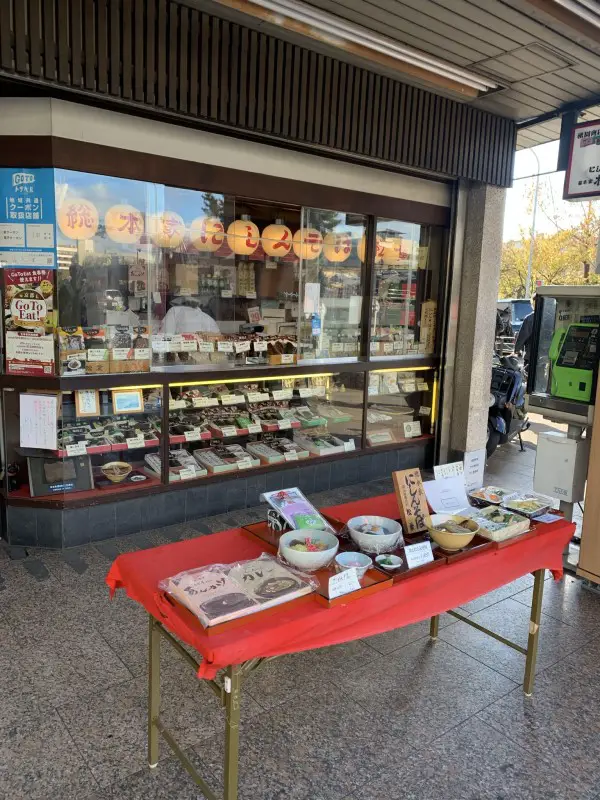
Dangoro – My favourite nishin soba in Kyoto, located close to the Bamboo Forest in Arashiyama.
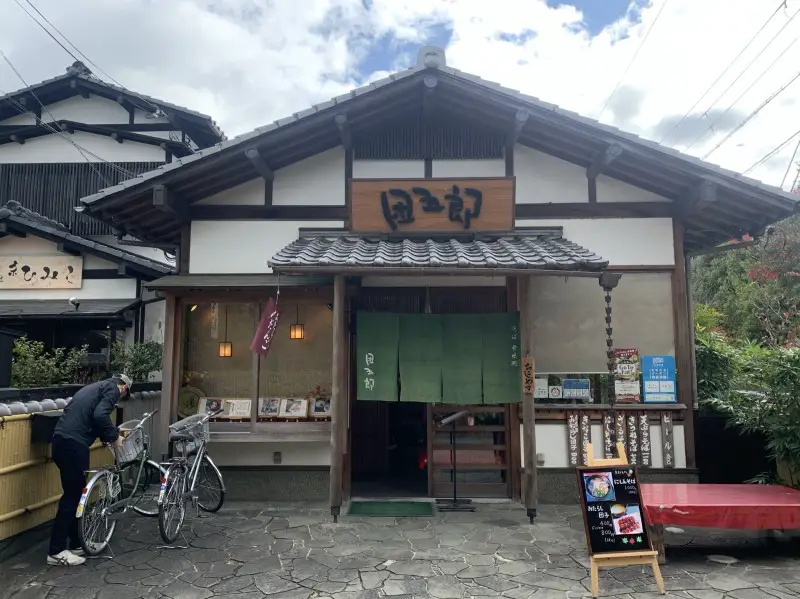
Gyoza ChaoChao (Shijo-Kawaramachi Branch) – If you like Japanese dumplings – gyoza – that’s the place for you. Many vegetarian options are available, which doesn’t happen often in Japan, so I had a delicious feast!
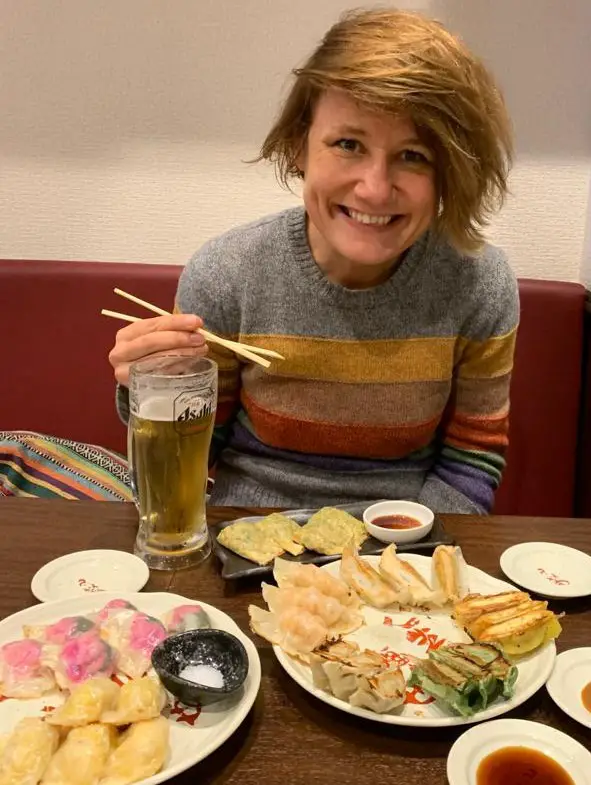
Leave a Reply Cancel reply
Save my name, email, and website in this browser for the next time I comment.
You Might Also Like

Hiking & mountain huts in Japan – Interesting fun facts
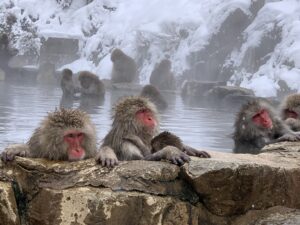
Wild Monkeys In Hot Springs – Snow Monkey Park
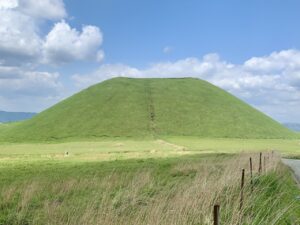
Kyushu 7 Days Itinerary – Scenic Road Trip in Japan

Kyoto guide: Restaurants, bars, hotels and things to do in Kyoto, Japan
L ast time I checked, pizza wasn’t part of a traditional kaiseki meal. And yet, as dinner at Monk crescendos with elegant wood-fired pies freighting fresh nori, the herbal mountain plant fukinoto and other seasonal Japanese ingredients, it feels like the most natural thing in the world. News that Italy’s most famous flatbread has infiltrated Japan’s most traditional meal is shocking enough. That this is happening in the country’s cultural ground zero is another level of scandalous again. But while the purists rage, others are excited about this new direction.
“Kyoto is the best place to open up a restaurant,” says Yoshihiro Imai, Monk’s chef-patron. A former pizza chef in Nagano, Imai relocated to Kyoto and opened Monk in 2015 where he serves highly seasonal, highly delicious modern kaiseki menus. “It has culture, it’s close to nature and locals are interested in new things. I could see that there was a new wave being driven by people that came here from other parts of Japan and wanted to be part of it.”
Although Kyoto is rich in culture, history and enlightenment – for more than a millennium, it was the Japanese capital – the city has always harboured a progressive bent. Kyoto bamboo helped Thomas Edison create the world’s first light bulb. The Kyoto Electric Railway company operated Japan’s first streetcar. Nintendo was born here. Tourists might flock to Kyoto for temples, tea ceremonies and cherry blossoms, but beyond the surface is a city that values the future as much as it does the past.
“Kyoto is dynamic, it’s moving” says Zenbu Tours’ Jane Lawson, a former cookbook publisher that moved to Kyoto in 2009 and now runs small group tours around Japan. “It’s a city of contrasts but it’s more obvious because there’s this amazing ancient culture and traditional buildings and gardens. We’re seeing a real effort to level up the experience and give visitors a deeper experience and understanding of Kyoto.”
From maverick restaurants to contemporary new hotels, these are some of the players helping define the new Kyoto. Here’s our guide to Kyoto, Japan.
Restaurants in Kyoto
Monk, Kyoto
Thick slices of kingfish, heady with smoke from the wood-fired oven. Charry knobs of sunchoke contrasted against luscious tufts of mozzarella. A shared bowl of carrots, blushing pink radishes and other organic Kyoto veg – bought every morning from the Ōhara farmers’ market – simply roasted and sharpened with salt. The aforementioned new-school pizza. All ways in which Yoshihiro Imai celebrates the season at Monk, his cosy 14-seat restaurant next to the Philosopher’s Path. Factor in a star turn on Netflix’s Chef’s Table and it’s not hard to understand why Monk is one of the old capital’s most in-demand tables. An essential if unexpected meal for the Kyoto-bound.
Saliccia, Kyoto
Also from the department of I-didn’t-see-that-coming is suburban deli, Salsiccia. During the week, Naoya Suzuki makes traditional and not-so-traditional fresh sausages (pork snags buzzing with sansho pepper, anyone?). On Saturdays and Sundays, he stays open for dinner and cooks the restaurant’s namesake alongside lasagne, trippa alla Romana and other Italian favourites while pouring vino naturale.
Ha Ra, Kyoto
New-wave cafés and bakeries are also actively unifying east and west. Instagram-friendly Ha Ra is as likable for its cosy aesthetic as it is a tight edit of polished brunch dishes including comforting eggplant lasagne and a meticulously built BLT. Hefty breakfast rolls crammed with thick bacon and a fluffy scrambled egg help explain the constant queues at fresh-faced new bakery.
Camphora Kitchen, Otokoyama
For those happy to travel for their daily bread, take the one-hour, two-train journey to Otokoyama where Camphora Kitchen awaits. In a past life, owner Rihito Maruhashi made croissants at Tokyo’s legendary Path and worked at London’s Lyle’s and E5 Bakehouse. Nowadays, he’s turning out sourdough, canelés and lemon tarts for clued-up eaters.
Taiho, Kyoto
Elsewhere, second-generation owners are proving you can teach old restaurants new tricks. At Taiho, Toshihiro and Satiko Watanabe have been serving high definition, nuanced Chinese food for almost half a century. While patriarch Toshihiro continues to hold it down in the kitchen, son Kouki manages the family’s organic farm in nearby Ayabe where he raises pigs and grows produce for the mothership. (Taiho’s slow-cooked pork with mustard leaves and black bean, plus crazy good dandan noodles, speak to Kouki’s interests in both provenance and Sichuan cookery.) Daughter Hiroko is a cheery presence on the floor and manages Taiho’s mighty natural wine list.
Sobatsuru, Kyoto
Sobatsuru, a homely soba joint in the Sakyo neighbourhood, is another must. After taking over from their late parents, brothers Shigeto and Hideo Isada and sister Masako have bolstered Sobatsuru’s soba offering with otsumami (drinking snacks) of real finesse. Think roasted gingko nuts, slices of karasumi (dried mullet roe) sandwiched between clouds of grilled mochi, and tempura-fried uni.
Kyoto accommodation
Ace Hotel Kyoto
Located near popular Nishiki Market, 213-room Ace Hotel Kyoto (rooms start from $479) embodies the city’s optimism and cosmopolitan spirit. Fabrics have been designed exclusively for the hotel by Tokyo fashion label Minä Perhonen; handsome timber furnishings are a recurring feature and in-room turntables plus colourful pieces from centenarian folk artist Samiro Yunoki come standard-issue. In classic Ace style, the communal lobby boasting textiles, twinkling copper lights and Japan’s first Stumptown Coffee Roasters outpost is the hotel’s hub and heart. While service exemplifies the Japanese ethos of omotenashi – my memory of a staff member stopping vacuuming so I could wait for the elevator in silence one afternoon won’t be soon forgotten – the hotel’s F&B leans into Ace’s American heritage. Los Angeleno Wes Avila of Guerrilla Tacos fame is behind mezzanine lounge and taco bar Piopiko , while Mr Maurice’s Italian – a project from Philadelphian chef Marc Vetri – deals in chicken saltimbocca, biscuity pizzas and red-sauce hits.
The Ritz-Carlton, Kyoto
A flawless stay is almost guaranteed with a stay at the Ritz-Carlton in Kyoto. Enjoy views of the Higashiyama Mountains or the Kamo River in any of the 134 rooms, all featuring Diptyique bath amenities, 24-hour in-room dining, and complimentary bathrobes and slippers. Guests are welcomed with a traditional tea ceremony at check-in, in a lobby where the first of 409 pieces of modern Japanese artwork are on display. Enjoy in-house dining at Michelin-starred Tempura Mizuki for a traditional kaiseki experience, or slant slightly left-of-centre at La Locanda , a cosy Italian diner. With state-of-the-art spa facilities and a 24-hour fitness centre, a stay at the Ritz-Carlton Kyoto is the perfect blend of tradition and comfort.
Four Seasons Hotel Kyoto
Located a seven-minute drive from Kyoto Station, the Four Seasons Hotel is a little slice of modern luxury hidden amongst the cultural delights abound in Kyoto’s centre. Each room at the Four Seasons offers a panoramic view of the city, as well as an iPad with access to hotel services and a flat screen television. In-house restaurant Brasserie features a menu derived from local producers, and overlooks the serene Shakusuien pond garden. Guests are also encouraged to access onsite spa facilities, including saunas, steam rooms, and local-favourite open air baths.
Things to do in Kyoto
Hire a bike
Pro-tip: hire a bicycle. Flat, laid out in a grid and cyclist-friendly – even the one-way streets have bike lanes in both directions – Kyoto is a terrific city to ride around. Bike hire is cheap and lets you see more of the city faster while also earning all-important food and drink credits. Drop into Kurasu to buy coffee equipment plus a bike map detailing the city’s cafés of note.
Visit Kyoto art galleries and museums
The success of the recent Andy Warhol retrospective at the Kyocera Museum of Art underscores the value of art to Kyoto (and, indeed, Japan as a whole) while the collection at the National Museum of Modern Art, Kyoto includes key Japanese and foreign pieces. The Kyoto International Manga Museum is your chance to go deep into this modern-day Japanese phenomenon.
Go shopping in Kyoto
Ethelvine is your best bet for tracking down hard-to-find local and European natural wines, while the shopping arcades on Shinkyogoku and Teramachi streets and their surrounds cover everything from top-dollar designer fashion to sticker shops.
Where to drink in Kyoto
KYOTO CAFÉS
Weekenders Coffee, Kyoto
Kyoto might be synonymous with tea, but the city takes its coffee seriously. Opened in 2005 by Ayumi and Masahiro Kaneko, Weekenders Coffee was one of the prefecture’s third-wave coffee pioneers. Today, the Kanekos run their own roastery plus a charming café in a converted machiya (traditional wooden townhouse) complete with beautiful niwa (Japanese garden) and machiai (waiting bench). An unexpected location behind a parking lot adds to Weekenders’ must-do reputation.
Wife & Husband, Kyoto
Coffee at Wife & Husband is another unhurried pleasure, both in the way it’s made as well as how it’s enjoyed. In addition to relaxing in the snug, converted house, guests can also hire picnic baskets, chairs and tables to spend the morning picnicking at the nearby Kamo River.
Yoramu, Kyoto
Traditionally, sake is meant to be an unobtrusive accompaniment to food. Yoram Ofer, owner of sake bar Yoramu, wants to detonate that idea, as proven by his selection of bold sakes that are anything but retiring. From outré styles bottled by tiny breweries to Ofer’s own cellared sake experiments, Yoramu celebrates the diversity and potential of rice, water, yeast and koji. Otherwise, the banks of the Takase River canal remain a bar-hopper’s paradise.
Rokudenashi
Barnacled by decades of gig posters and cigarette smoke, Jazz in Rokudenashi is the divey, late-night jazz bar of your whisky highball and Blue Note LP dreams.
Hachi Record Shop
It might be a more recent arrival, but Hachi Record Shop and Bar is underpinned by a similar love of music. On the night we visit, a Japanese-Balinese DJ spins rare Indonesian funk-rock while drinkers lay waste to local craft beer and ochoko cups of cloudy nigori sake. It was a picture that captured the pleasures and possibilities of modern-day Kyoto.
Getting to Kyoto: From within Japan, Kyoto is best accessed via bullet train (Shinkansen). The journey is just over two hours from Tokyo or 15 minutes from Osaka. jrailpass.com
The post Kyoto guide: Restaurants, bars, hotels and things to do in Kyoto, Japan appeared first on Gourmet Traveller .


COMMENTS
Here are 12 reasons why Kyoto is the destination of a lifetime. 1. The UNESCO World Heritage Sites. Kyoto is home to 17 UNESCO World Heritage Sites, including three located in the nearby cities of Uji and Otsu, known as the Historic Monuments of Ancient Kyoto. 2.
Kyoto is on the travel list of most first-time visitors to Japan for good reason. With its fleet of over 2000 temples, lush gardens and traditional tea houses, Kyoto is one of Japan's major historical hubs - to say nothing of being easy on the eye (enjoy a sunset on the hill in Kiyomizu-dera to see what we mean). It can be easy to get lost in the tangle of streets - Kyoto is one of those ...
I will share my personal top 5 reasons why you should visit Kyoto as well. 1. Temples and Architecture. Let's start with the obvious: The first thing that comes to your mind when you think of Kyoto is probably "temples" - lots of temples actually. With about 1600 Buddhist temples and 400 Shinto shrines there is a good chance that this ...
Ryokan Tori. Mid-range. Ryokan Tori is located in Kyoto, 2 km from Kitano Tenmangu Shrine. The property is around 2.3 km from Nijo Castle and Kyoto Imperial Palace. The property is 3.2 km from Kinkaku-ji Temple and 3.7 km from Kyoto International Manga Museum. All guest rooms in the ryokan are fitted with a kettle.
1. Tune in to the seasons. Kyoto is a very seasonal destination, so plan your trip accordingly. The spring cherry blossom season is when the city is at its most photogenic but also its busiest. If you want to visit during this time, you'll need to book accommodations a year or more in advance - expect to pay premium prices.
If you've ever wondered why Kyoto deserves a spot on your travel bucket list, here are ten compelling reasons that will stir your wanderlust: 1. A Historical Goldmine. From the majestic Kyoto Imperial Palace to the ancient temples and shrines, every corner of Kyoto speaks volumes about Japan's rich history.
If you prefer staying in international hotels, you should add around $50-100 a day to your budget. A good example of a nice 4* hotel in central Kyoto is the Hotel Hanra, its vibe is a good blend between traditional and ultra-modern, much like the city of Kyoto itself. Budget hotel prices start from about $55 per night for a two-star hotel.
Japan's capital from AD 794 to 1868, the list of possible tourist destinations in Kyoto Prefecture (京都府, Kyōto-fu) is endless.. You can attempt to visit all of major sites, including but certainly not limited to: Fushimi Inari Shrine and its brilliant vermillion row of torii gates, its many temples (most notably Kiyomizu-dera, Sanjusangen-do, and Kinkaku-ji), Nijo Castle, and ...
READ MORE: 9 reasons to visit northern Japan. ... Kyoto's cuisine stands out for highlighting traditional Japanese ingredients, such as tofu and matcha, along with the tradition of serving multi-course kaiseki-style meals and a celebration of the skills of local artisans. Shojin ryori, the vegetable-based cuisine of Buddhist temples, is also ...
Kyoto's grand shrines, ancient castles and historical streets. Ohara's crisp mountain air, stunning autumn foliage and symbolic gardens. Kyoto's traditional Japanese inns, an essential convergence of Japanese tradition and culture. Kyoto cuisine, which perfectly encapsulates the Japanese spirit and art of food preparation.
There are many cities in Japan in which you could steep in the country's vibrant culture, but no place offers a greater concentration of history and tradition than the ancient capital city of Kyoto.It's absolutely worth a visit — even if you only have 48 hours to spare — and frequently tops the list of must-visit destinations for travelers around the world.
13 Reasons to Visit Kyoto, Japan. There are many good reasons to visit Kyoto - colourful shrines, maiko and geisha culture, and the multi-course kaiseki ryori meals are top of the list for many. But if you're still hovering over the Book Now button, we've plenty more reasons why the ancient capital of Japan should be on your travel bucket ...
Before planning a trip to Kyoto, be sure to check Booking.com for information on travel restrictions to Japan. If you do decide to visit Kyoto, ... It was incredibly beautiful and one of many reasons why Arashiyama is my favorite area in Kyoto. Suggested Length of Visit: About 1 hour Admission: JPY 500. 5. Ryoan-ji
There are many reasons why you should visit the city of Kyoto, and these are the Top 6 Reasons to Visit Kyoto with a lot of visual encouragement for you. Kyoto was the imperial capital of Japan for more than 1,000 years, from 794 through until 1869. Kyoto is a highly historic and cultural center. The […]
1. Kyoto's UNESCO World Heritage Sites. Arguably the biggest reason anybody should visit Kyoto is for its UNESCO World Heritage Sites. UNESCO World Heritage Sites are natural or cultural sites that offer "Outstanding Universal Value". Sites that are considered to offer this value are then listed on the World Heritage list.
Visit Kyoto - one of the most popular destinations for visitors from around the world. With its stunning temples, delicious cuisine, and breathtaking gardens, it's easy to see why so many people choose to visit. ... Japan Kyoto 20 Reasons Why You Should Visit Kyoto at Least Once in Your Lifetime. By Mirela Zota January 17, 2023 No Comments.
One of Kyoto's specialty food which is hot tofu. Okutan was founded more than 375 years ago in 1635 and it is near Kiyomizu-dera. Also read: 5 Magnificent Temples You Must Visit in Kyoto, Japan. 2. Because in Nishiki Market, you can always get snacks on-the-go. Near Kiyomizu-dera Temple is Nishiki Market.
Kyoto - 10 reasons why it is unique and my favourite city in the world. ... We will definitely visit Kyoto when we go back to Japan. Reply. WTB February 10, 2016 At 12:11 . Hello Paul. Yes you are right, Kyoto is a whole other world from Tokyo and definitely worth a visit next time you are going 🙂
6 Reasons to Visit Kyoto Roisin Cameron | February 9, 2015 Standing in stately contrast to the neon-lit adrenaline of Tokyo , Japan's second city exudes a warm, elegant vibe that has been ...
In short, because in Japan normal rules usually do not apply.:) Jokes apart, Kyoto is one of the oldest cities in Japan. It was Japan's capital for over 1000 years, from its inception in 794 until 1868 when the emperors moved to Tokyo. Fortunately, the city was also spared from massive destruction during World War II.
Additionally, Kyoto was rated "The World's Best City" for 2 consecutive years in 2014 and 2015 by readers of "Travel+Leisure", one of the world's most influential travel magazines. Readers cited magical experiences and described Kyoto as the best place in the world for culture and beauty, and it has remained in the top 10 of the ...
BOOK NOW. The Ritz-Carlton, Kyoto. A flawless stay is almost guaranteed with a stay at the Ritz-Carlton in Kyoto. Enjoy views of the Higashiyama Mountains or the Kamo River in any of the 134 rooms ...